VOLUME
ISSUE 05
Fictive Dreams
A play with a dreamscape where a new fictional world interplays rapid dreams, digital desires and humorous nightmares resuscitating flailing histories and memories of an expired epoch. It is a moment where art seeks contingency over agency; mobility over fixity; and burial over excavation. In this Issue, artists, curators and scholars traverse land and sea; cities and communities; ideas and ideologies; and images and imaginings to mediate on multiple notions of histories, geographies, politics, economies and aesthetics: thereby producing a rich reflection on an emerging new world/s through the lens of art and its imagining.

ISSUE 05
2016
Fictive Dreams
ISSN : 23154802
Introduction
Essays
Exhibition
Contributors’ Bios
Introduction
Introduction: Fictive Dreams
Essays
Lucid Dreaming
Subjects in the Mirror are Closer than they Appear A Post-traumatic Fictive Dream Disorder (PTFDD)
After Russia
Porous emerald
The Feminine Art School
Exhibition
Oneiric speculations
Contributors’ Bios
Contributors’ Bios
Introduction
Editor
Venka Purushothaman
Associate Editor
Susie Wong
Copy-Editor
Lisa Cheong
Editorial Advisor
Milenko Prvački, Senior Fellow
LASALLE College of the Arts
Manager
Layna Ajera
Contributors
Steve Dixon
Tony Godfrey
Peter Hill
PerMagnus Lindborg
Chus Martínez
Bjørn Melhus
Charles Merewether
Rubén de la Nuez
Silke Schmickl
Isabel de Sena
Jovana Stokic
Introduction
Introduction: Fictive Dreams
The issue for 2016 is Fictive Dreams.
As the ink on the epitaph of globalisation dries, the world’s nations reel from an unknown future. A future that is only experienced through the rise of a nationalist inclination in a number of countries; the potential breakdown of trade and people to partnerships; the great migration of people despite rising border controls; and recycling of late 20th century artists and their aesthetics as a new frontier of the future.
In an unevenly even period of a meta-historical fissure, what foretells a future outside of fear, terror and breakdown? Is there a future in the real?
A new fictional world interplays rapid dreams, digital desires and humorous nightmares resuscitating flailing histories and memories of an expired epoch. It is a moment where art seeks contingency over agency; mobility over fixity; and burial over excavation. A new de-ideologised dreamscape unfolds as old myths magically dissipate and welcome a blurry sequence of imaginings of the real. Strangeness unfolds. We no longer know our neighbour. As the 21st century foregrounds a world of global human movement and mobility (deterritorialised as citizens) and presents postmodern warfare on lives, nature and the human condition, a need to imagine a new world is urgent. What is the future of the world?
In this Issue, artists, curators and scholars traverse land and sea; cities and communities; ideas and ideologies; and image and imaginings to mediate on multiple notions of histories, geographies, politics, economies and aesthetics: thereby producing a rich reflection on an emerging new world/s through the lens of art and its imagining.
Essays
Angels that visit in your sleep
A night in November 2015
What do you do when you can’t get to sleep?
You toss.
You turn.
You pummel the pillow to make it more comfortable.
You get up and adjust the AC.
You wander off to the fridge and drink some juice.
You settle down again.
Still can’t sleep.
Wander back to kitchen and pour yourself a whisky.
Check the late night news as you sip it.
Go back to bed.
And try and get to sleep by making a list,
Boring yourself to sleep, basically.
I really like making lists.
All the artists whose name begins with R; Rembrandt, Raeburn. Romney, Remington, Rothko, Rubens, Rosso, Rosso Forientino….
All the Swiss artists you can think of: Fuseli, Hodler, Pipilotti Rist, Scherer, Cuno Amiet, Urs Graf, Martin Disler, Thomas Hirschorn…..
All the Filipina artists I know: Geraldine, Wawi, Yasmin, MM, Nona, Jeona, Nikki, Ringo, Elaine…
It normally works: you rarely finish the list.
But it isn’t lists that really matter:
It is the strangeness of particular art experiences which come floating back again as memories once you enter that liminal state between consciousness and sleep.
Those experiences that James Joyce described as epiphanies.
“Its soul, its whatness, leaps to us from the vestment of its appearance. The soul of the commonest object, the structure of which is so adjusted, seems to us radiant. The object achieves its epiphany,” he wrote in Stephen Hero, Chapter XXV.
These radiant angels of the night are the memories of when and where artworks or environments have taken over, entering your consciousness like god speaking to the magi, or like Gabriel bursting into the room.
(By the way, I love this Annunciation by Lorenzo Lotto. Such an urgent, imperious archangel Gabriel, such a scared but devout Mary, such a bustling God and such a great cat running away.)
Rothko is the name that would often bubble up in this discussion now.
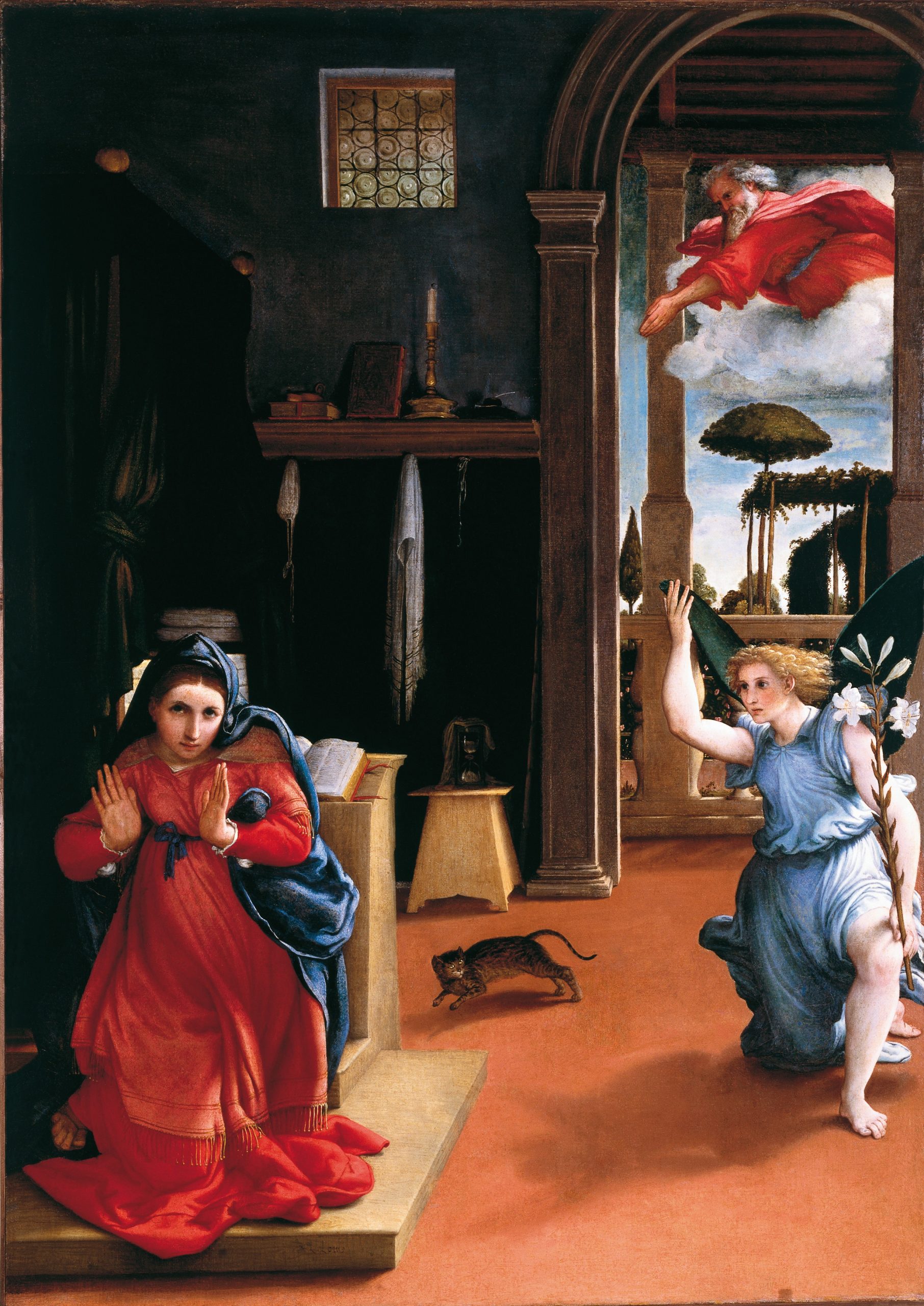
Lorenzo Lotto. Annunciation, 1534
I have been to the chapel in Houston and it is a wonderful place, so gloomy, so dark, so melancholy. It is without doubt the best funeral parlour in the world, but where he got me was back in the 1980s when I had arranged to meet someone in the last room of a retrospective of Rothko at the Tate then. She was late so I sat there a long time reading the catalogue until the paintings began unexpectedly to affect me – they worked on me even though I wasn’t consciously looking… Perhaps because I was not consciously looking. I was taken away by them. Yes, it was somewhat sombre, but it imbued a sense of contentment, of grace.
Rembrandt’s Return of the Prodigal son. It took my breath away in 1981 when I went to the USSR and saw it in the Hermitage. It is the humanity of it, the father accepting back the wastrel son and the way it is conceived as figures and faces emerging in the dark. The clumsy hands. The threadbare garments. Faces in the dark.
The same trip, the same museum but a very different epiphany: Matisse. Not just The Dance but also Music, the companion painting on the opposite wall. The girls dance, the boys sing. And in between, a small, intense painting about the colour red. It was of a woman in an interior, but it was about the colour red and the way it shines and sings. It was the complete experience. Painting has to be installed right to really work.
And in the right place. The journey to see something is part of the experience. People talk of the Piero experience as a pilgrimage. Yes. You drive for hours through country to get to see the one painting by Piero della Francesca – the Madonna del Parto in Monterchi. I went in the 1980s. It was wonderful. The painting was in an old church next to a cemetery. It had been moved from a part of the church that had been destroyed and it had lost its old margins – it was a fresco. But it was still beautiful… and peaceful… and humble. But I went again maybe 15 years ago and it had been moved to a special museum funded by Olivetti with lots of audio-visual explanations and a gift shop and it was behind bulletproof glass… there was no aura left… conserved, preserved and dead.

Rembrandt. The Return of the Prodigal Son, detail, 1669.
What of this region we live in? I can think of three occasions when something happened like this.
Firstly when I went to – of all places! – Novotel in Bandung. Handiwirman had made a sculpture for each floor of the hotel based on the sort of things you see in hotel rooms – coat hangers, radiators, towels, taps…. It was not so much witty as delicately done. Fingertip precision. A sense of how the most banal thing could be transformed into something strange and beautiful. That can be when an artwork becomes an event in your experience – like a song floating over the meadows or the evening sun setting fire to all the clouds: orange, red, purple, to darkness.
An experience of Agus Suwage’s Pause replay when I saw it at his retrospective in 2009 was equivalent but very different. In a way it is an intellectual work examining the West from the East, performance art from the viewpoint of a painter. But the facture – the way it is made – the lyricism of the watercolours makes it. I was absorbed for I don’t know how long – of course, part was the fun of spotting what I recognised, but there was something else – what Rilke would call “praise” in the way he depicted all these people, performance artists, doing odd things.

Handiwirman Sapoutra. Sculpture in Novotel, Bandung.
And sometimes this can happen in the most unlikely place – such as Christie’s sale-room in Hong Kong 2010. Everything is inevitably hung higgledy-piggledy in such a context and being presented as commodity anything like a spiritual or quasi-spiritual experience is most unexpected. But when I saw a painting by Geraldine Javier (Ella amo’ apasionadamente y fue correspondida or For she loved fiercely, and she is well-loved, 2010) I was absorbed. I did not know her then. The distortions in scale. The introspection. The stiff mask-like way the figure was painted. All bound together. It calls for meditation, for silence, to no longer hear the ticking clock. And the sense of mourning in the mediation turns to one of reparation.1
When did this sort of experience happen to me more recently: this sense of absorption, of time stopping, of intense beauty or grace? Last summer: Joseph Cornell in the upstairs gallery at the Royal Academy in London. The works are so small, so intricate in their making that it is like letting go and entering into a doll’s house, but then looking out again at the world with wonder. And everyone else there was enjoying the show: that was important. Sometimes this is not a wholly solitary experience but one shared.
I went a second time to the Cornell show, but it didn’t have the same effect. That is often the case. Epiphanies aren’t on tap.
I sleep deeper. Other epiphanies may return too, like lonesome angels searching for a home to sleep in: Kiefer at Zeitgeist, Donald Judd’s one hundred cubes at Marfa, Texas or Robert Wilson’s 1993 installation in Venice.
But I don’t know: I cannot recall dreams from deep sleep.
Another night, December 2015
Faces that haunt
When you sleep you dream
And when you sleep what is it you are most likely to see?
A face
It is probably a human face looking back at you.
Sometimes with body, sometimes without.
Perhaps it is a ghost, or a memory of someone you knew, or a presentiment of someone you will meet
They appear just as in Shakespeare’s Richard the Third, the ghosts of those he has killed appear:
Enter the Ghost of Prince Edward, son to King Henry VI
Ghost of Prince Edward
[To KING RICHARD III]
Let me sit heavy on thy soul to-morrow!
Think, how thou stab’dst me in my prime of youth
At Tewksbury: despair, therefore, and die!
Enter the ghosts of the two young princes…
Enter the ghost of Lady Anne his wife…
The 18th and 19th century artists loved drawing and painting this scene: Hogarth, Abildgaard, Stothard…
They demand vengeance – those ghosts. Fortunately, my ghosts demand nothing. As far as I am able to remember my dreams, they just look and say nothing.
Here are some faces that may appear in my dreams.
(By the way, I have a very bad memory for faces and names. It doesn’t get better with age. A few years ago I started to photograph artists when I first met them and ask them to take a photograph of me. But I normally forget to do it. When you first meet people you are too focused on what they say, their body language.)
Of course, I don’t just dream or think of people in Southeast Asia. That would be an absurdity. I dream, as I think, globally.
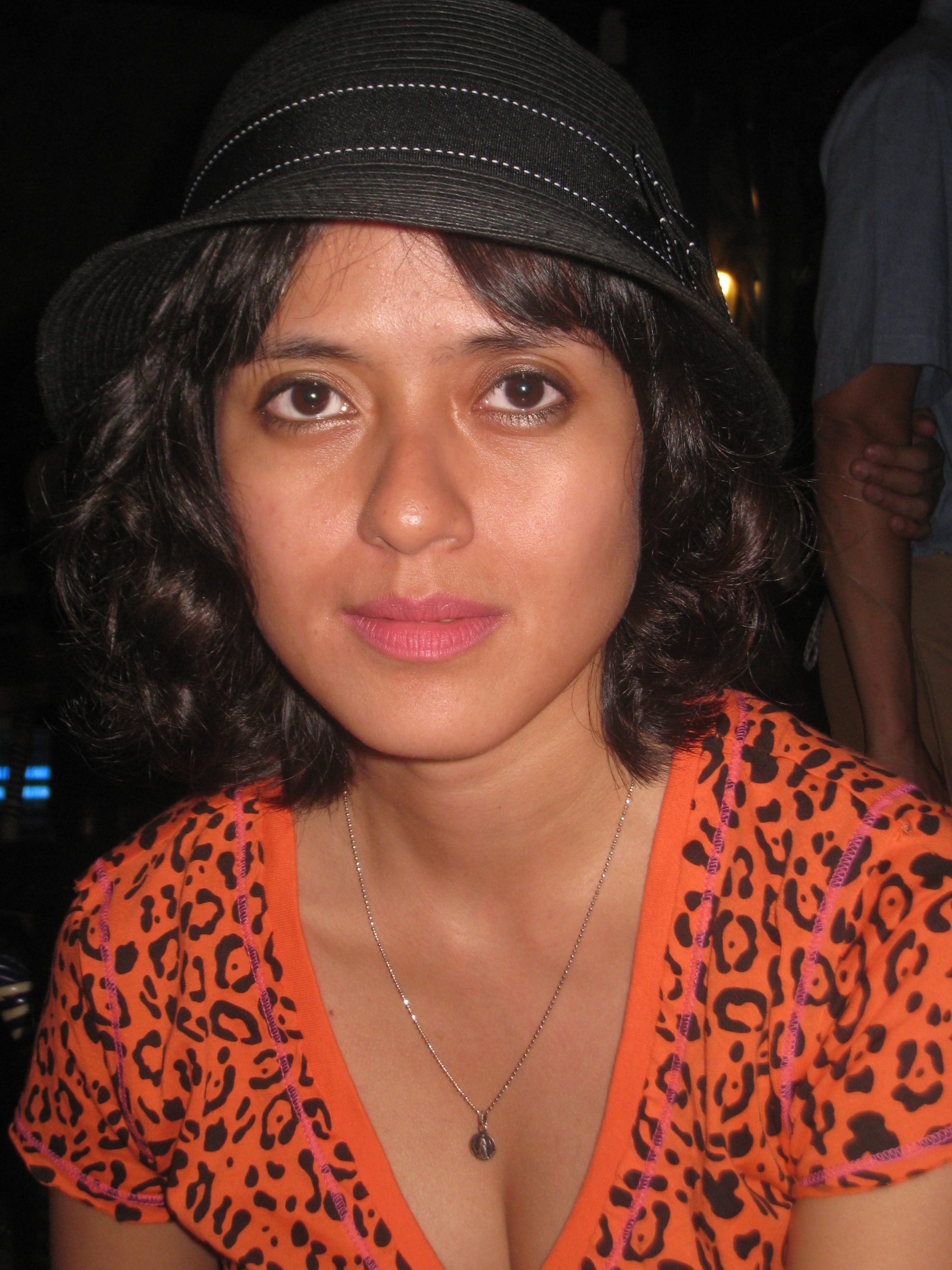
Wawi Navarozza, 2011

Tintin Wulia, 2011
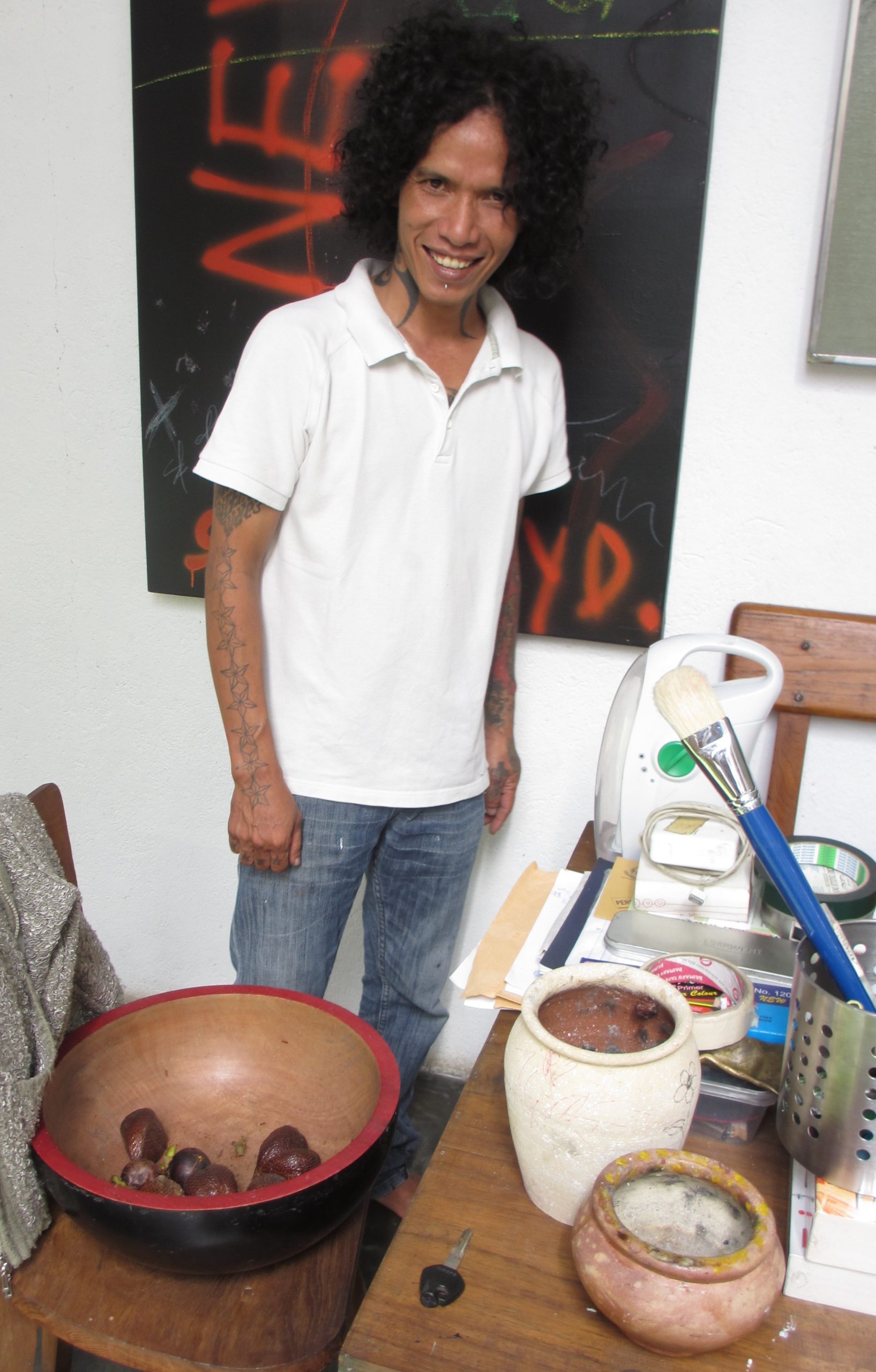
S. Teddy, 2012
This essay derives from two talks given at Centre for Contemporary Art, Singapore. I thank them for their invitation and also to Ian Woo for playing bass guitar as I gave the first talk.
Images courtesy of Tony Godfrey.
And I dream of the dead. Those who we knew who are dead still live in our memory. In a way in our dreams they seem the most alive.
I dream of my brother Richard. I dream of my parents. I dream of my primary school teachers. No doubt now S. Teddy has sadly joined them on the other side, he will visit in my sleep too.
I dream of the dealer Nigel Greenwood who I knew well in the early ’80s. He was fun to be with: informed, witty and enthusiastic.
I didn’t see so much of him once his gallery closed but was sad to hear he had developed cancer and died 12 years ago. I was told that near the end, after the normal hopeful encouragement and reassurance that doctors offer, he realised there was no chance left.
“Am I about to die?” he asked.
“I am afraid so, Mr. Greenwood.”
“In that case can I have a glass of champagne?”
That was his attitude to life. Maybe I should write a book on art with that as the title. As a philosophical statement with which to march into the darkness it is as good as any.
Footnotes
1 Now in the collection of the Singapore Art Museum
Essays
Lucid Dreaming
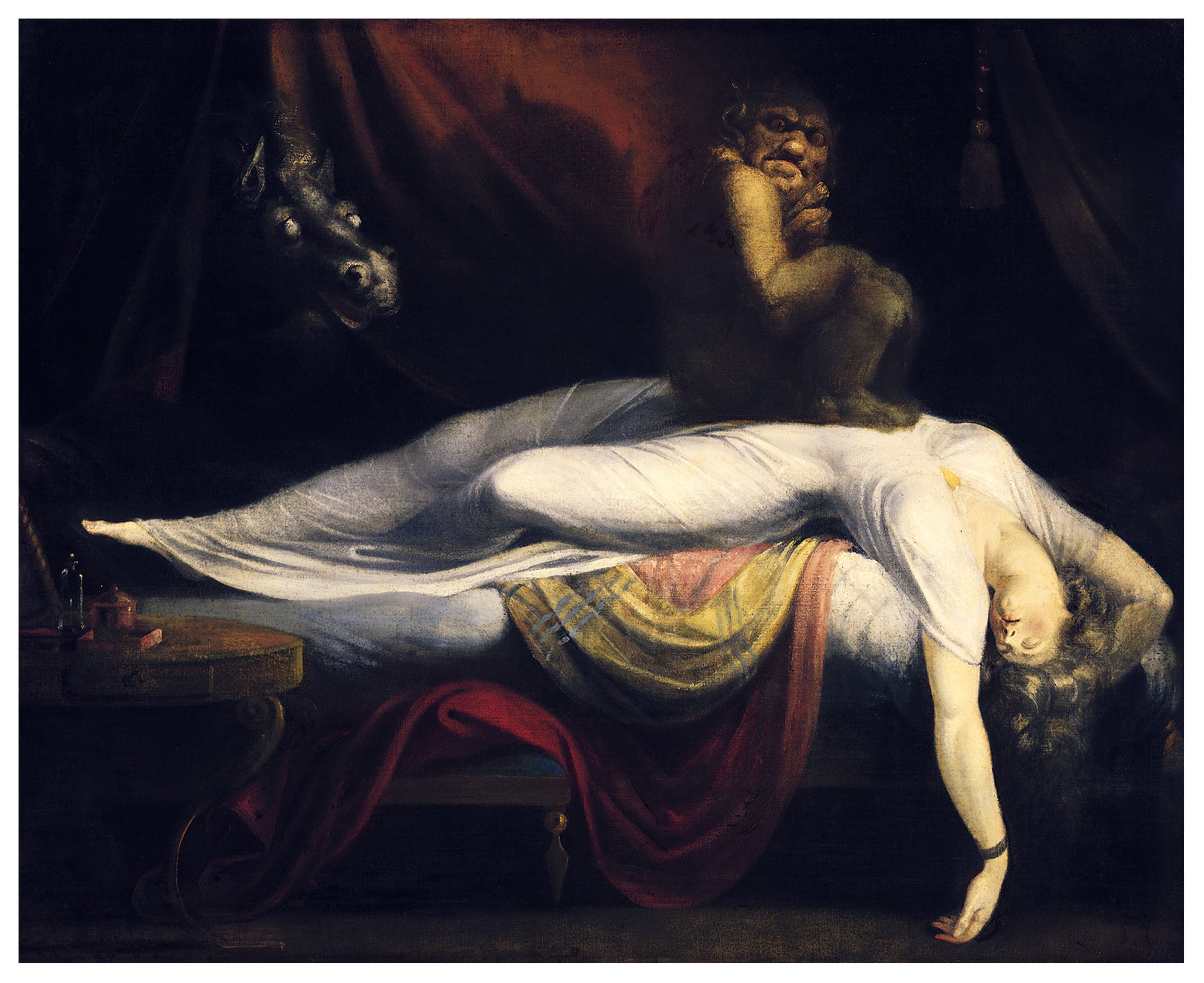
Figure 1. Henry Fuseli, The Nightmare, 1782
Introduction: Artists as Lucid Dreamers
Dreams are one thing everyone has in common. As Jack Kerouac put it: “All human beings are also dream beings. Dreaming ties all mankind together.” Martin Luther King had one – perhaps a more iconic one than you and I — but we all have them. Artists of all disciplines have explored them for millennia, depicting ‘fictive’ dreams far more visionary, startling and disturbing than everyday reality. That, of course, is their appeal.
“A book is a dream that you hold in your hands,” wrote Neil Gaiman, and dreams themselves have been a running theme in literature for centuries, from Shakespeare’s insight that we are made of the very “stuff” of them, to Edgar Allan Poe’s insistence that: “All that we see or seem is but a dream within a dream.” Jorge Luis Borges wrote of our sadness when being awoken abruptly from a dream, feeling robbed “of an inconceivable gift, so intimate it is only knowable in a trance.” Poets have feared them – Samuel Taylor Coleridge frequently woke his whole household up with his screams – and eulogised them, W.B. Yeats implored a lover not to tread on his, and John Keats declared that: “We need men who can dream of things that never were.”
In the history of Fine Art, dreams have both inspired – like the Byzantine depictions of Jacob’s Biblical dream of an angel-filled ladder bridging heaven and earth — and elicited fear, as in the hellish 15th century nightmares of Hieronymus Bosch, or Henry Fuseli’s demonic goblin incubus sitting on the stomach of a defenseless, sleeping woman (The Nightmare, 1782) (Figure 1). Vincent Van Gogh believed that “I dream my painting and I paint my dream,” and visions of reverie reached their aesthetic and conceptual heights in the simultaneously beautiful and sinister dreamscapes of the surrealists Salvador Dali, René Magritte, Dorothea Tanning, Giorgio de Chirico, Max Ernst, Leonora Carrington and Paul Delvaux.
Susan Hiller’s Dream Mapping (1973) involved seven dreamers sleeping for three nights in a field in England, lying within so-called “fairy rings” — a natural phenomenon where a certain genus of mushrooms sprouts up in a large circle. The next morning, each of their dreams was drawn in map form on a piece of transparent paper, and these were sandwiched together into ‘collective dream maps’ for each night. In the 1990s, artist Bruce Gilchrist and programmer Jonny Bradley created DreamEngine software that monitored the real-time EEG data of the brainwave activity of sleeping subjects, and converted it into art. Outputs included 3D plastic sculptural forms; performances where the neural dream activity triggered projections of multiple pre-recorded video clips around a space; and musical notion for a string quartet who sight-read and played the music in real-time.
Dreams inspired many of my creative heroes, including the great literary surrealist George Bataille and theatre visionary Antonin Artaud. “I abandon myself to the fever of dreams,” Artaud wrote, “in search for new laws.” But perhaps most artists are fictive, lucid dreamers who abandon themselves feverishly – communing with other worlds, connecting with the subconscious, drowning in imagery, and reaching out into the ether. As Lucy Powell has noted: “Like a dream, art both is and isn’t true. Both offer a challenge to the tyranny of realism, replacing what is with what might be. Both generate an altered state of consciousness removed from the humdrum – and both lend themselves to interpretation.”
Sigmund Freud’s The Interpretation of Dreams (1900) catalysed a fervent dream-fever and new zeitgeist of the psyche as the 19th century turned into the 20th, opening up bold (and contested) new theories of “wish fulfillment” - even our nightmares are our secret wishes, he argued - and the symbolism of the unconscious. Mixing winning ingredients of angst, sex and horror, it was an instant bestseller; Freud later noted that: “insight such as this falls to one’s lot but once in a lifetime.”
Dreams, Angst, Sex and Horror
Dreams, angst, sex and horror have always been prevalent themes in my practice as a multimedia performance artist. In the mid-1970s, I saw a multimedia theatre adaptation of August Strindberg’s A Dream Play by the Welsh theatre company, Moving Being. It stunningly combined live actors with a cinema narrative playing behind them, and it changed my life. I became an experimentalist in multimedia performance, and a researcher into the history of onstage media projections.
Watching A Dream Play, it occurred to me that combining theatre and film could enable a unique form of lucid dreaming where conscious and subconscious could collide and converge. Since then, I’ve worked on projects that explore and enact that fusion in different ways.
There was a period around that time when I could readily induce lucid dreams, although it wasn’t long before I lost the knack. Lucid dreams are all about living the dream, but half here and half there, half asleep, half awake, half you, half someone else. They are willful, directing one’s own experience and fate in the dream world. Lucid dreaming is always on the edge, on the limen, hoping not to awaken, not to fall from the blissful flight taken, from the precipitous edge of the cliff, from the power of being, for that fictive moment, God (or the Devil).
In 1994, I established a multimedia theatre company, The Chameleons Group, to create elaborate lucid dream plays, most recently a one-man interpretation of T.S. Eliot’s poem The Waste Land, performed in Chicago, USA in March 2016 (Figure 2). The Chameleons Group performances are presented primarily on theatre stages, but also in gallery settings, and in interactive online environments, such as for Net Congestion (2000), where chat-room audience members were invited to co-write and direct live (streamed) improvised performances in real time (Figure 3). The work generally fuses live performers with projected video imagery – often footage of the same characters, who talk and interact with ‘themselves’ onstage, operating as (invariably darker) doubles, dopplegängers and alter egos, for example, in The Doors of Serenity (2002) (Figure 4).

Figure 2. T.S. Eliot’s The Waste Land, 2013-16

Figure 3. Net Congestion, 2000
As its title suggests, our second production, In Dreamtime (1996), was conceived explicitly as a dream play, and the documenting of each of the four performer’s actual dreams over a three-month period prior to rehearsals served as the core source material for the devising and scripting process. Many video sequences for the show were literal reconstructions, or refined interpretations of the performers’ visions and narratives experienced during sleep. The bottom right image in Figure 4 is one example, where actor Julia Wilson’s dream of being pelted with eggs and blasted by a powerful water-hose was reenacted vividly, while onstage, Wendy Reed simultaneously punches a voodoo doll. The live theatre action for In Dreamtime was played both in front of a four metre-high wooden projection screen, and also ‘inside’ it: the design incorporating four hidden doors and windows, which opened to reveal live action behind, creating an effect of theatre within a movie screen (Figure 5).
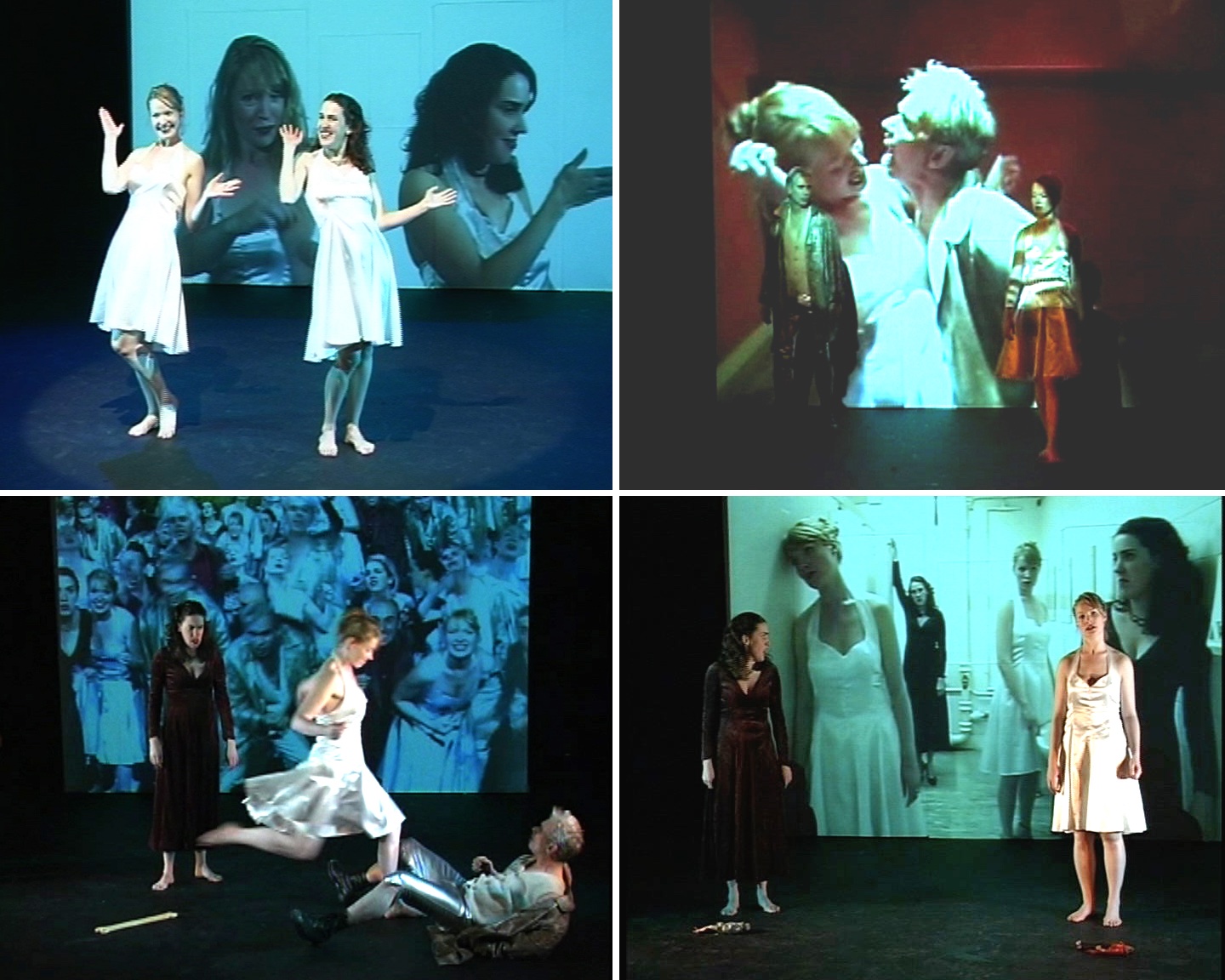
Figure 4. The Doors of Serenity, 2002
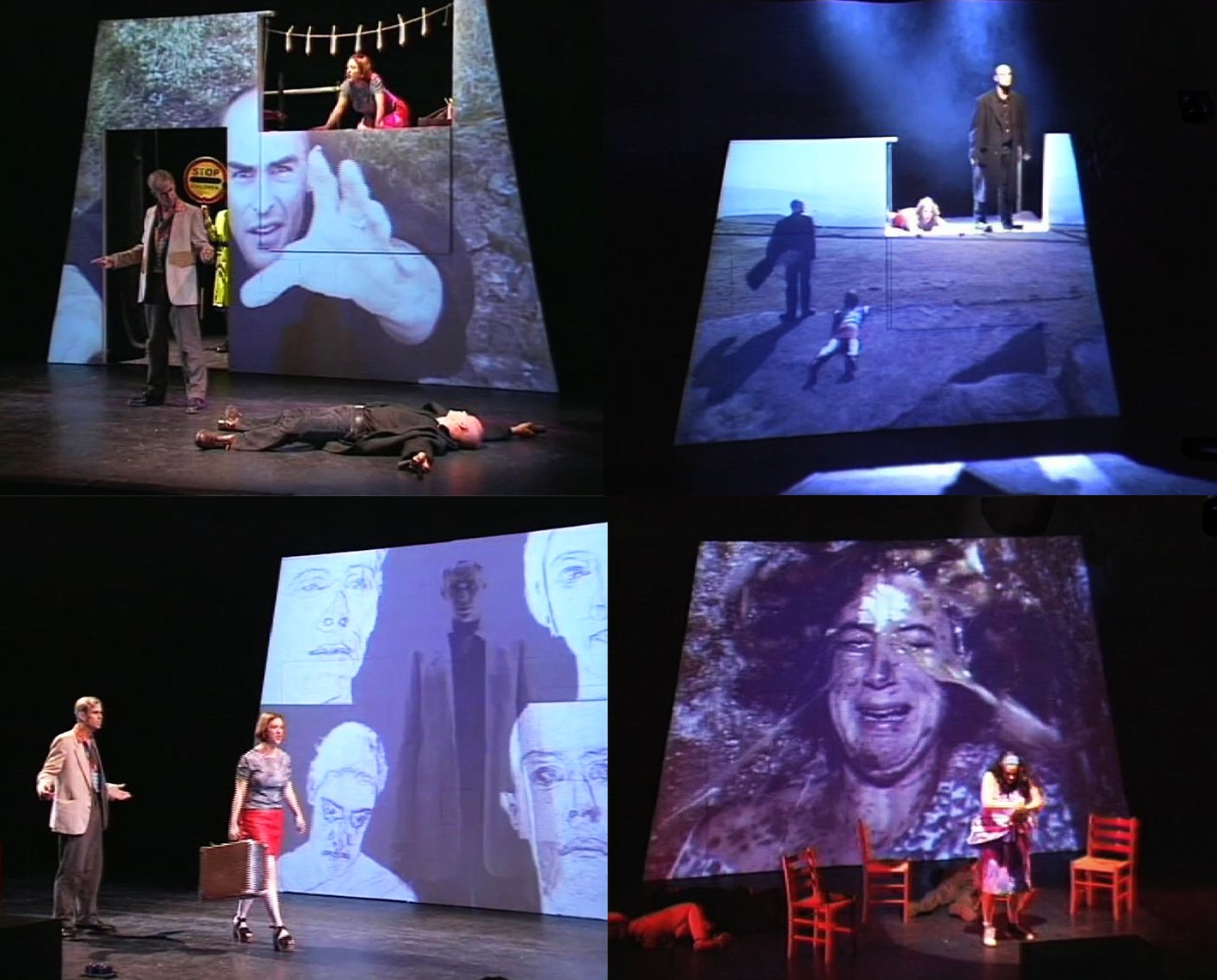
Figure 5. In Dreamtime, 1996
The show’s narrative revolved around the entanglement of four characters that all experience the same dream. They are manipulated by ‘The Dream Junkie,’ a malevolent spirit hovering between the physical world and the astral plane, who preys upon unwary dreamers. He is ultimately overpowered and killed by one of the rebellious dreamers.
The work has been deeply influenced by the visionary theoretical writings of Antonin Artaud, and my first ever stated research objective was “to update Artaud for the digital age.” In The Theatre and Its Double (1938) – a rare first edition of which I own and cherish, and which emits (at least for me) a spookily powerful aura — he conceives a theatre of cruelty and famously declares that: “actors should be like martyrs burned alive, still signalling through the flames.” Artaud was a key figure within the French Surrealist movement, and was appointed by André Breton as ‘Director of the Surrealist Bureau of Investigations’ in 1925, although they would later quarrel and Artaud would leave the movement, objecting to its increasing politicisation and alignment with communism.
Automatic Dreaming
In The Manifesto of Surrealism (1924), Breton eulogises the surrealist technique of automatism and automatic writing. We have made extensive use of this in the devising and scripting of The Chameleons Group performances, with the resulting material used unabridged, or edited and combined with dialogue created through improvisation. Though its use nowadays is quite rare, we find the automatic writing technique to be highly effective, creating, as Breton has put it: “a considerable assortment of images of a quality such as we should never have been able to obtain in the normal way of writing.” The surrealists essentially inherited automatism from psychics and spiritualist mediums, but as Patrick Waldberg has pointed out, here the message transmitted is sent “not from the spiritual hereafter, but from the actual self hidden by consciousness.”
It is thus akin to dreaming, and in preparation, you empty your mind and put yourself in an open, meditative state, and then start writing as quickly as possible, never pausing for even a millisecond until it’s over. The idea is not to personally write, but as if in a dream to let the unconscious take over, and to spew forth a relentless cascade of words, whatever they may be, without ever interfering or trying to control the stream of consciousness. It is, in Breton’s words: “Thought’s dictation, free from any control by the reason, independent of any aesthetic or moral preoccupation.”
The difference between its use by the surrealists and our methodology is that prior to the writing, the actors go into character and try to allow the character’s subconscious to speak, thus combining surrealist theories of dream and the unconscious with traditional Stanislavskian acting practices. These experiments are thus concerned with the articulation of the unconsciousness of a character, mediated through the unconsciousness of an actor, which is finally ‘made conscious’ in performance.
The results are often startling and dramatic. The writing often has a highly confessional feel, a visual and visceral quality, and conjures images that veer from the visionary to the violent. The scripts frequently contain short and repetitive rhythmical patterns, and are quintessentially ‘dreamlike.’ The In Dreamtime text below by Wendy Reed is a typical example, and was taken verbatim from an automatic writing session, with only the punctuation added later:
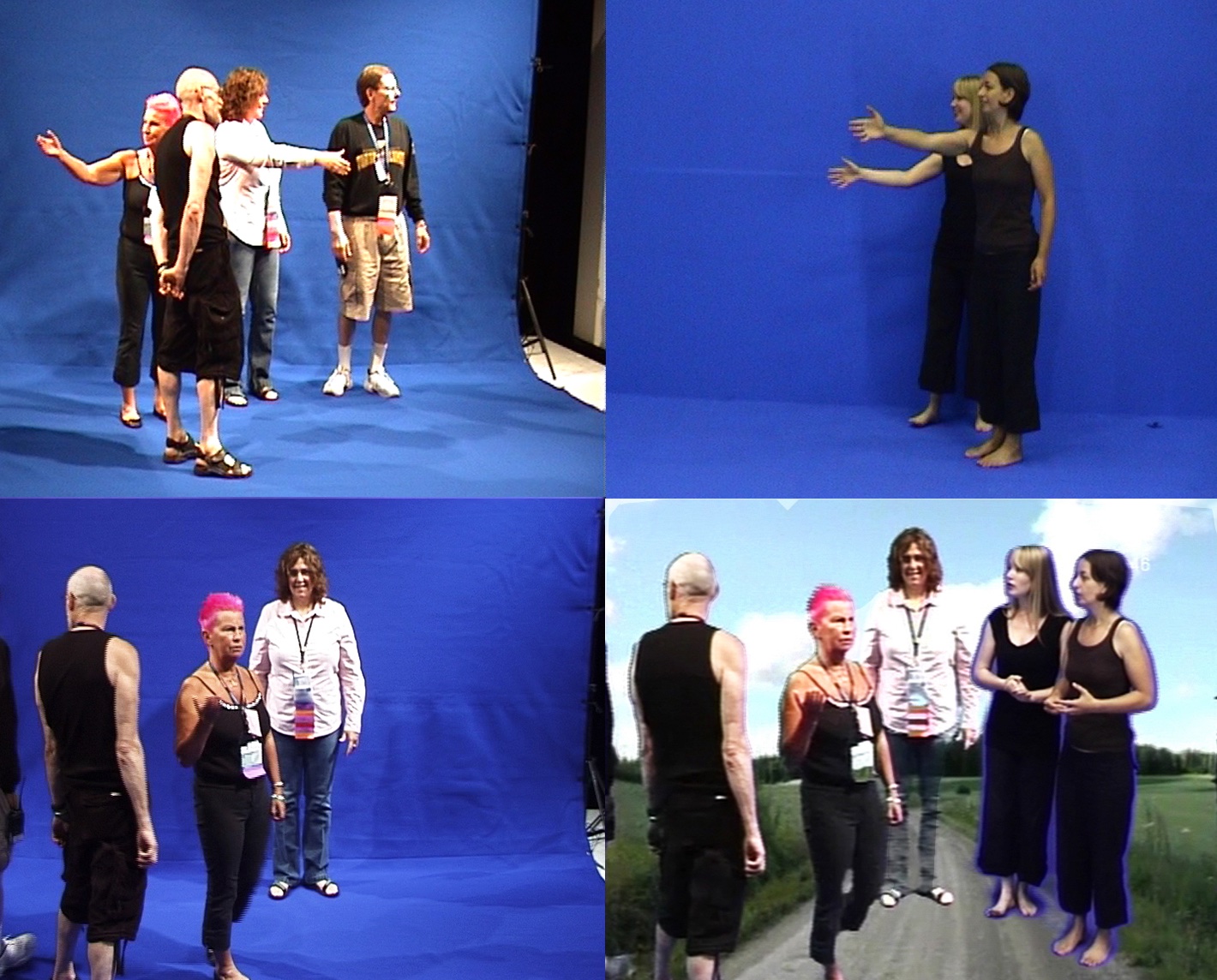
Figure 6. Unheimlich, 2005-6
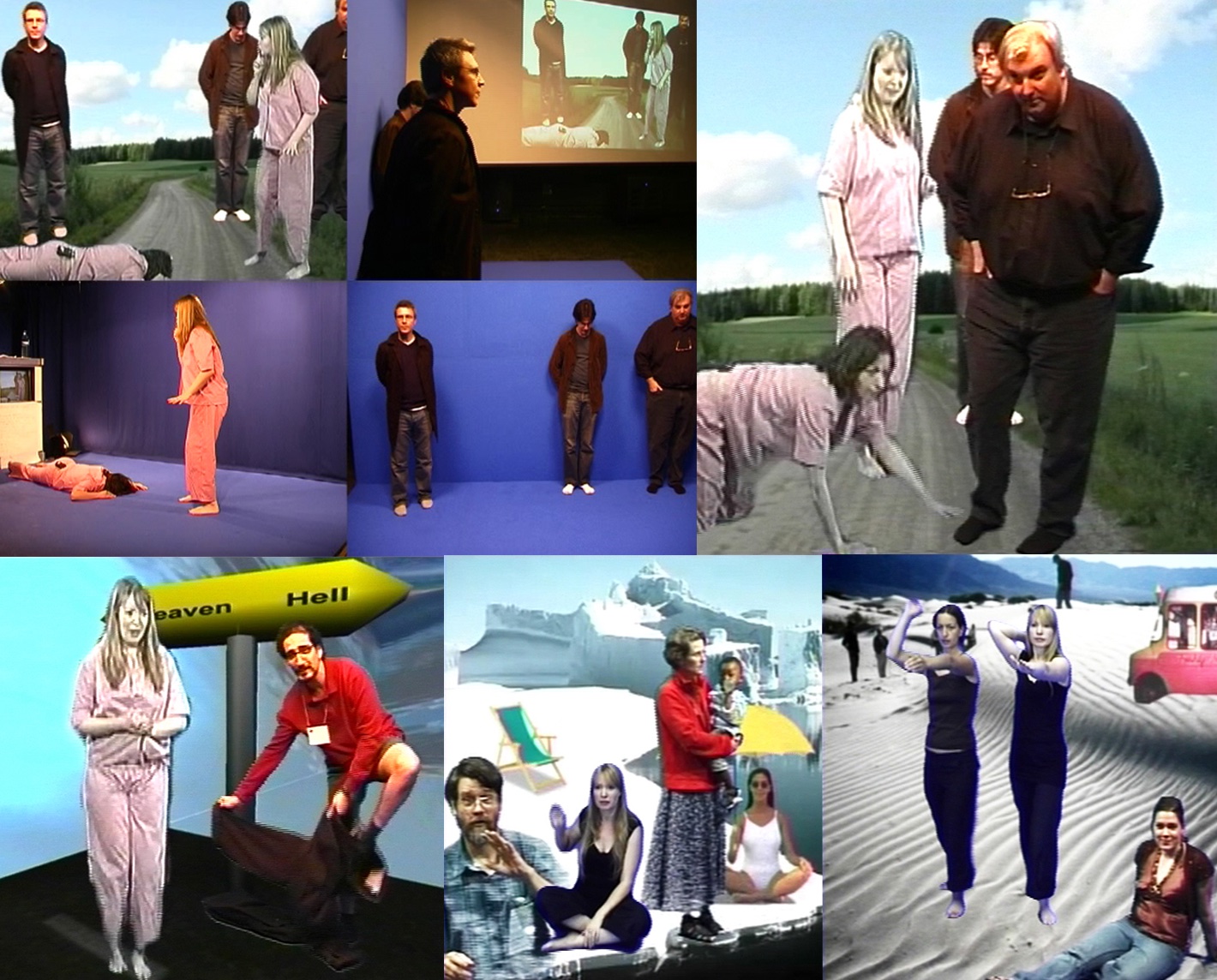
Figure 7. Unheimlich, 2005-6
The Lollipop Lady: I’m not worthy. What is me? There are bruises and I am not worthy. Only of being slashed. Beware of the sheep within. They’re here and you must die. They’re here. The creatures from the shit-pit. The vegetables and deranged minds. The special children. The vandals. The peanut-butter conspiracy revisited. The seeds of discord. The unnatural act. The wrist slashers. The window jumpers. The corpse eaters. Bingo callers. Sheck ‘em up! Giant slugs. Lepers. Keyhole peepers. Die. Die. Die. Die!
In Unheimlich (2005-6), a collaboration with Paul Sermon, Andrea Zapp and Mathias Fuchs, the dream was ‘extra-lucid.’ Two female Chameleons Group performers worked in a blue-screen space in London and were connected with audience participants in the USA, through a sophisticated videoconferencing system. Using chromakey and video-mixing techniques, on the screens surrounding both spaces, the two sets of participants appeared to be visually conjoined and immersed in virtual backgrounds. They were thus able to see and converse with one another within a shared screen space, to virtually shake hands, and to ‘telematically embrace’ (Figure 6).
These intimate interactions were strange and uncanny (the meaning of the German word Unheimlich, and the title of Freud’s book on the subject), and although they were separated by thousands of miles and several time zones, the telepresence of the bodies ‘on the other side’ was intensely felt, and the sensation of physical closeness and virtual touch was extraordinary. The dramatic interactions between the remote actors and their audiences revolved around fantastical journeys through continually changing background rooms and landscapes, from deserts to polar icecaps, and from 3D game worlds to the fires of hell, with the part-physical, part-virtual mise-en-scène catalysing a vividly ‘telepresent lucid dream’ (Figure 7).
The Mobile Phone as Lucid Dream Machine
Realising the ‘dream of telepresence’ is the most significant cultural development of our age. Distance has collapsed, the so-called real and virtual have converged (or more accurately, the virtual has now been incorporated into the real), and understandings and experiences of presence have been utterly transformed. In my youth, the notion of a videophone conversation was one of the wildest and most alluring of all futuristic science-fiction fantasies. Its Skype and FaceTime reality, indeed ubiquity, today has produced an astounding new form of magic — and we should never forget that ‘digital technologies are a form of magic’ — which we barely give a thought.
The mobile phone has become a ‘lucid dream machine’ where friends and families unite, and where lovers meet, become enchanted and live out their dreams, suspended in space-time, floating together in a different world. ‘Lucid dreams have become synonymous with interactive screens.’
Yet while there may be vibrant interactions and beautiful romances taking place via or within the ‘mobile phone lucid-dream-machine,’ like all forms of magic, it has its darker side. For decades, many of the world’s leading theorists, philosophers and even technologists have been soothsayers warning of the potentially catastrophic social and psychological effects of our willing seduction (or rape) by technology. They include the father of cybernetics Norbert Wiener, who as early as 1954 cautioned that: “We cannot worship the gadget and sacrifice the human being to it”; while a year earlier Martin Heidegger had described human beings as “slaves” already “chained to technology.”
In 1964, Marshall McLuhan emphasised that “technologies are self-amputations”, and later warned of “discarnate” societies detached from reality and therefore any sense of responsibility for it, leaving “whole populations without personal or community values.” In 1981, the most nihilist techno-soothsayer of all, Jean Baudrillard made a pronouncement that “there is no real”; while in the 1990s Paul Virilio was describing a terminal society, and Arthur Kroker offered one of the most searing critiques of all, with a book and title announcing The Possessed Individual (1992). Stephen Hawking has since added his computer-assisted voice to the throng, offering another perspective: “the danger is real that [computer] intelligence will develop and take over the world.”
I fear that our newest dream phenomenon, the mobile phone, which formerly used to simply connect voices, may have since become a dark spectre: ‘a dystopian dream machine for a dysfunctional society.’ The visionary Internet dreams of the 1990s may have transformed abruptly into a 21st century nightmare. In the early 1990s, I was filled with optimism for the brave new digital world; I followed the burgeoning scholarship on the subject avidly, and became one of the most enthusiastic researchers publishing about its influence on the arts and everyday life. But that fervour has waned and I’m tiring of people’s obsessive fumblings with their phone toys — many have become ‘hopeless junkies’ who can’t seem to be able to turn their damned dream machines off.
I fondly recall a dim and distant past (the 20th century) and an idyllic, golden age when people would sit contentedly and simply watch the world go by – and they still do in certain cultures. It was one of the best things you could ever do, since it seemed that you could ‘take the whole world in’ through the microcosm. You were open and available for ‘live interaction’ with whosever passed by, or you could simply stare into space and ‘daydream.’
Today by contrast, whenever there’s an idle moment, there seems instead a dark compulsion to stare at a phone (or any screen will do). It has become a type of Pavlovian conditioning whereby anyone finding himself, for example, sitting alone in public, or simply being somewhere ‘waiting,’ must whip out their phone in a trice and gaze moronically at it. Sometimes, of course, it’s to view or communicate something important. But more often – and I suspect first-and-foremost – it’s as a default ‘defence mechanism’ to instantaneously shield us from the quotidian world. Phones may have become dream machines, but they are robbing us of daydreams. Most often, phone dreams are dull distractions from direct thought or action, they’re rarely visionary, and are generally banal. That the whole of human life and experience has started to migrate inexorably into a metallic lump of circuits is deeply saddening.
The phenomenon seems particularly strong here in Southeast Asia, where the old opium pipe dreams have transformed into a new form of mirage … and dependency. We live in an increasingly somnambulant society, where the opiate hallucinations of the region’s past have turned into a craved addiction for the ghostly, ephemeral apparitions of social media.
I snapped a photo the other day, which I’ve entitled: The Answer is Action: but not often when you’re lost in your dream machine … (Figure 8).

Figure 8. The Answer is Action, 2016
Dreams, Clichés and Visionary Theatre
There are many potent clichés about dreams, and the best one of all is that ‘they can come true.’ Occasionally they do. The ideology of the ‘American Dream’ is that if you are determined enough, hardworking enough – and perhaps also, selfish and ruthless enough – you can succeed ‘beyond your wildest dreams.’ And when you’ve made it, when you’re at the top, you can ‘live the dream.’ Marilyn Monroe once said that there must be thousands of girls like her sitting in their rooms, dreaming of being a movie star, but she was dreaming the hardest.
Theatre and opera director Robert Wilson has also dreamt hard to become one of the great auteurs of dreamscapes. His stage works are exercises in dazzling design, incandescent light and devastating images; he is one of the art world’s most original and mercurial fictive dreamers.
Theatre comprises many things, but perhaps most fundamentally bodies, space, light and time. Wilson does mesmerising things with each and every one of these. The performers’ movements are stylised and heightened in such a way that apparent minimalism becomes maximalism; and his command of space and light, (his first degree was architecture), is breathtaking. When these elements are combined with an unnerving manipulation of theatrical time, the effect is ‘real yet unreal, and utterly dreamlike,’ as in his productions of Peter Pan (2013) and Pushkin’s Fairy Tales (2015) (Figures 10 and 11).
In some of his productions, figures cross the stage with the millimetre-by-millimetre momentum of a glacier. His mischievous playing with time, slowing it, elongating and seemingly extruding it is exquisite, but also so excruciating that it hurts. No one in the history of theatre has brought the notion of time, tempo and temporality so much to the fore; and this is doubled through his trademark use of repetition.
Physical gestures, musical phrases, and pieces of text are repeated over and over again. In I WAS SITTING ON MY PATIO THIS GUY APPEARED I THOUGHT I WAS HALLUCINATING (1977), the second act is an exact repetition of the first, but the monologue is performed by a female actor (Lucinda Childs) whereas the first was performed by a man (Wilson himself). At one level it is ridiculous, illogical. But on another it is inspired, and its braveness and vision produces a mesmeric effect, a truly uncanny dream. As the philosopher Gilles Deleuze has written: “There is a paradox that something truly NEW can only emerge through repetition.”
Dreams are endless repetitions of our own, and the collective, subconscious. Like art, they embody and enact personal and universal hopes and fears, and conjure visions of angels and demons, darkness and light. All dreams are fictive dreams, and all dreams are real. We freeze time and traverse space. We dream alone, yet we all dream together. As we do so, taking Robert Wilson as our lead, let’s try to dream more beautifully and lucidly.
As Jorge Luis Borges asked: “Who will you be tonight in your dreamfall into the dark?”

Figure 9. Robert Wilson’s Peter Pan, 2013. Photograph © Lucie Jansch
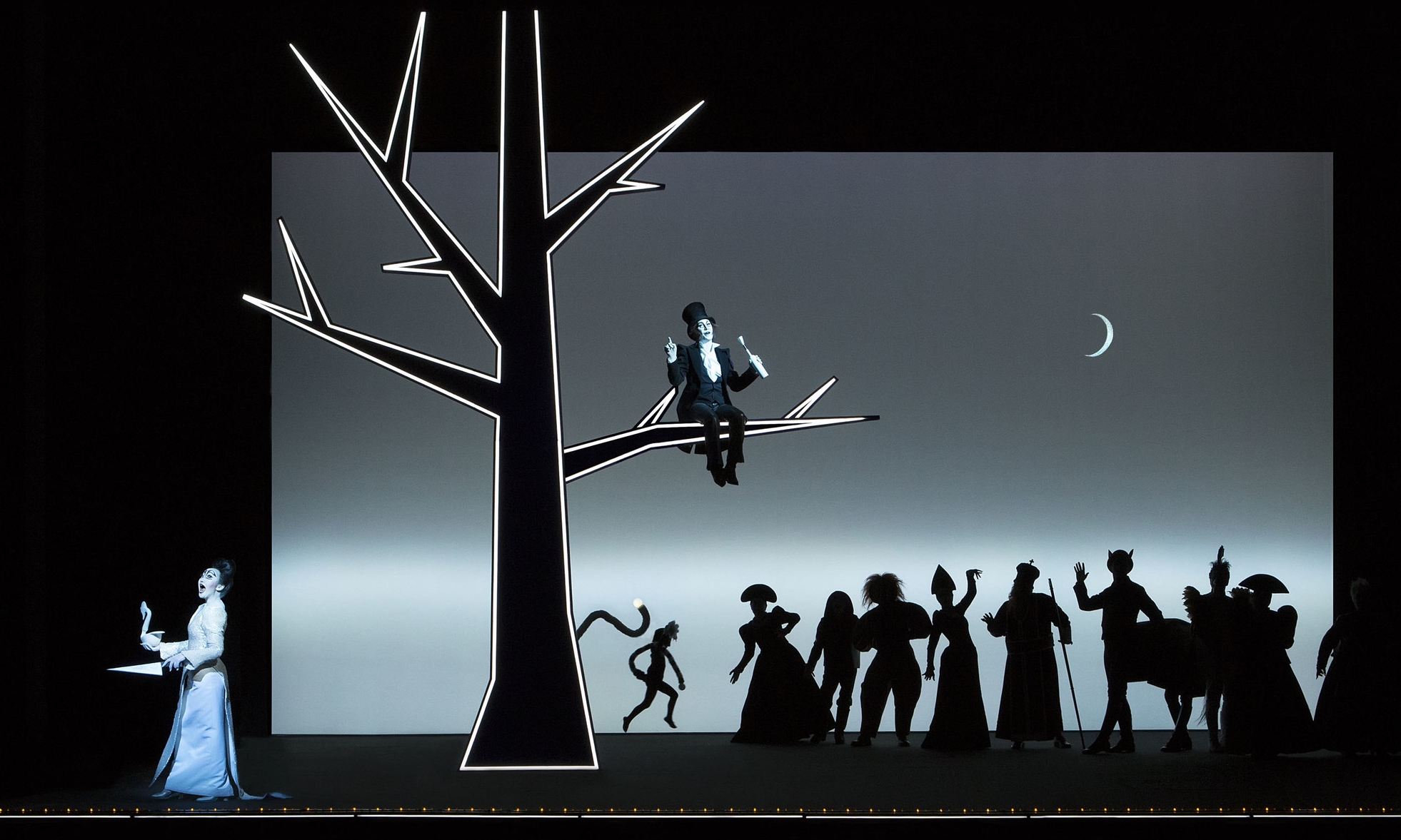
Figure 10. Robert Wilson’s Pushkin’s Fairy Tales, 2015. Photograph © Lucie
Essays
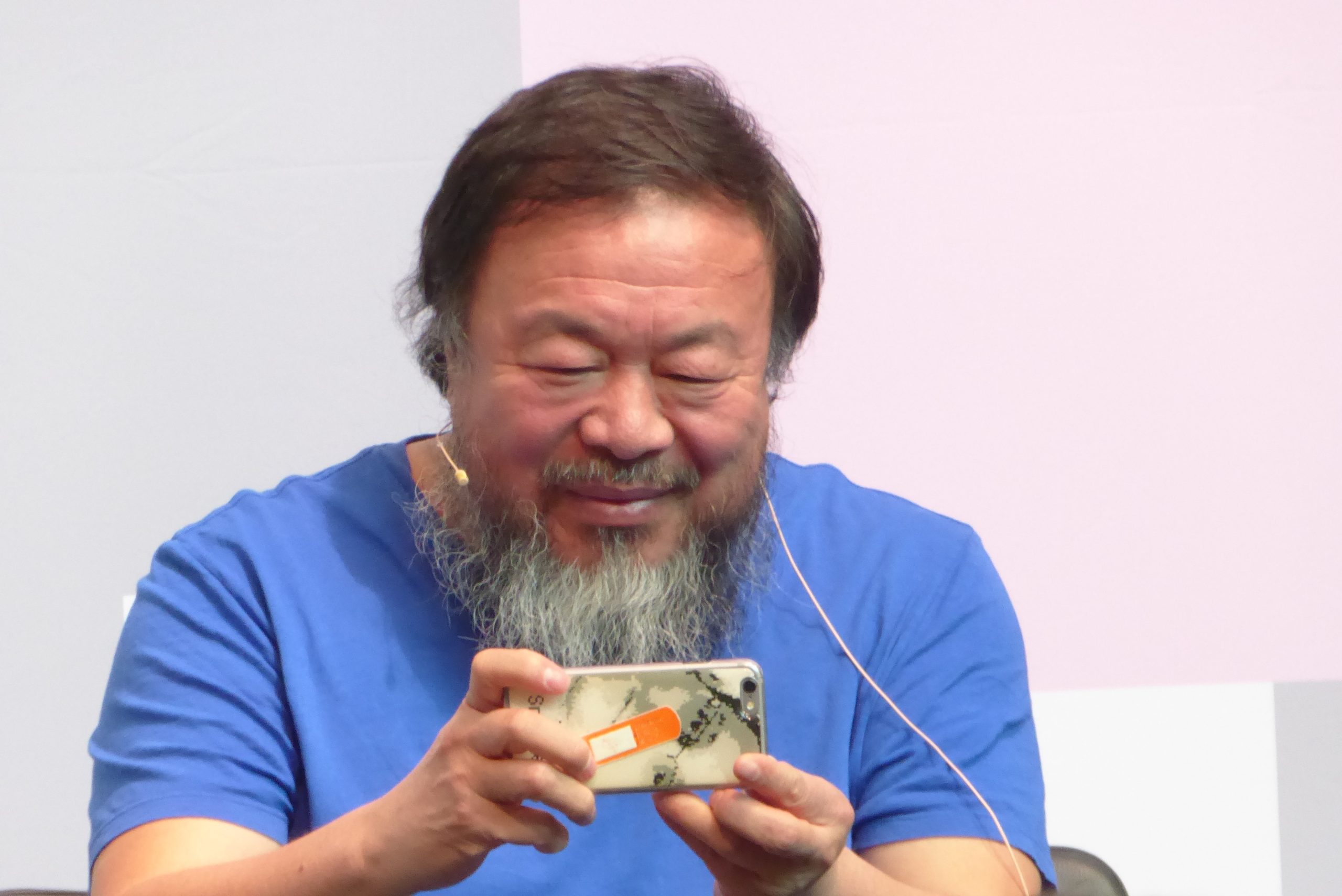
Ai Weiwei at media conference National Gallery of Victoria, Australia, November 2015. © Peter Hill.
AI WEIWEI
Ai Weiwei is one of several artists whose work only connects tangentially with the art of the Superfiction. However, like Jorg Immendorff, Group Irwin, and other Heroic Amateur artists, much of his work grows from a political-conceptual background. The Duchampian art object (in Ai Weiwei’s case) subverts dogma through poetic fiction. See profile at superfictions.com
FRANCIS ALŸS
Francis Alÿs uses many Situationist devices of walking, thinking, and doubting, which parallel Superfiction strategies. He exhibited at the 2007 Munster Sculpture Project and has been involved in projects and publications in New York, London and Mexico. Postmedia provides this brief biography:
“Francis Alÿs was born in 1959 in Antwerp, Belgium, and currently lives in Mexico City. His projects include Paradox of Praxis (1997), for which the artist pushed a block of ice through the streets of Mexico City until it melted, and, most recently, When Faith Moves Mountains (2002), in which 500 people at Ventanilla, outside Lima, Peru, formed a single line at the foot of a giant sand dune and moved it four inches using shovels.”
For more recent projects see Wikipedia.
THE AFTER SEX CIGARETTE
See THE ART FAIR MURDERS AND THIRTEEN MONTHS IN 1989
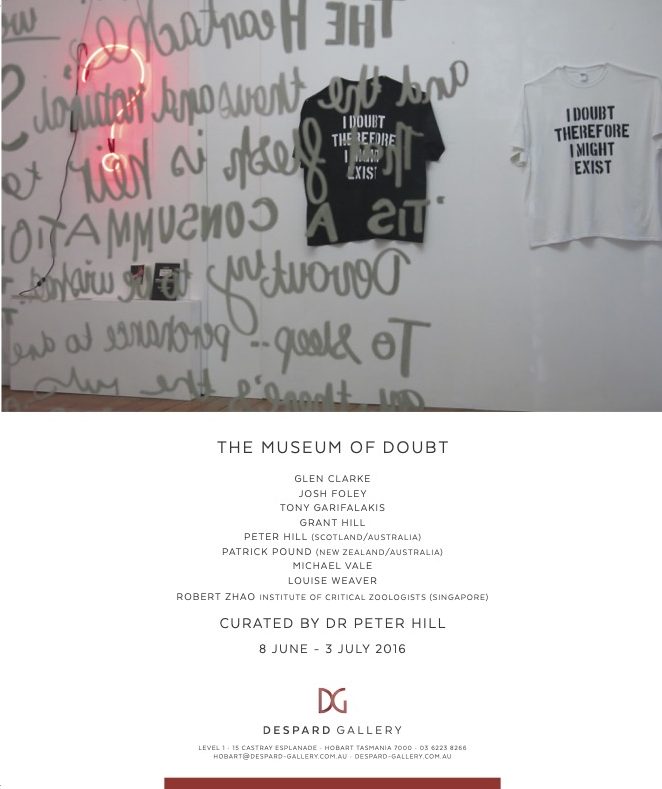
Advertisement for The Museum of Doubt exhibition, Despard Gallery, Hobart,
Tasmania, Australia, June 2016. © Peter Hill and Despard Gallery.
THE ART FAIR MURDERS
An on-going Superfiction created by Peter Hill in 1995 in Hobart, Tasmania. It is part installation, part novel, and part website. It is set in 1989, the great year of revolutions and world events: Tiananmen Square, the fall of the Berlin Wall, the execution of the Ceaușescu, the release of the Guildford Four. Its structure revolves around Twelve Chapters, Twelve Months, Twelve Murders, and Twelve Cities. It took three contemporary clichés – the serial killer in popular fiction; the overuse of the mannequin in installation art; and the widespread use of the colour orange in the advertising industry. It speculates on what would happen if a serial killer was loose in the art world, killing one art world personality at each of twelve art fairs around the world. The structure of the novel/installation follows the real world diary of international art fairs: January, Miami; February, Madrid; March, Frankfurt; April, London; May, Chicago; June, Basel; and so on though to November, Cologne; and December, Los Angeles.
The viewpoint of the narrative is further complicated by the fact that the novel is supposedly being written by Jacko, a taxi driver in Aberdeen, Scotland. Jacko is an ex-art transporter who was sacked when a small Lucian Freud went missing on a trip to Berlin. He had originally trained at Goldsmiths, three years ahead of the group that would become known as the yBas (young British artists). While waiting in his cab for fares, Jacko passes the time writing The Art Fair Murders.
Peter Hill has built “Chapters” of this Superfiction in galleries and museums around the world, including Auckland City Gallery, Museum of Modern Art, Oxford, Biennale of Sydney (2002) in MCA, Incinerator Gallery, Melbourne (See AUTHENTICITY…?), Hubert Winter projects, Vienna.
See www.superfictions.com/theartfairmurders
AUTHENTICITY...?
Opened on 1st April, 2016 (the holy day of Superfictions) Authenticity…?, at Incinerator gallery, Moonee Ponds, was curated by Richard Ennis and built on an earlier exhibition, see SUPERFICTIONS 2: as if, at King’s ARI, Melbourne in 2014. Writing in Art Guide Australia (May/June 2016), Natalie Thomas said: “Darren Sylvester, Jacqui Shelton, Michael Vale, Patrick Pound, Peter Hill and the DAMP Collective are presently taking some time off from the responsibilities of reality. Instead, these artists seek refuge in the magical mystery of make-believe. They use a range of strategies including humour, satire, mischief and fakery to question the ways authenticity functions within the art world and within the broader cultural landscape.”
In Authenticity…? these tricksters ask a range of questions, like what does an authentic artwork look like, and what does the artist who produced, say authentic artwork look like? In this exhibition, curator Richard Ennis has brought together a group of artists interested in the authentic versus the inauthentic.
Take Melbourne-based artist group DAMP for instance. DAMP has had more members than Mark E. Smith’s UK band, The Fall. The revolving door of group membership often illustrates the difficulties of collaboration. When viewing the shared artistic outcomes of a group of individual artists, it’s interesting to ponder what has played out behind studio doors to complete a project. Whose ideas have presented the strongest in the combined work, and are we actually seeing a collaboration at all?
Patrick Pound doesn’t even make his own art and yet, he’s a much-in-demand artist, his career the envy of many. A productive day at the studio for Pound might entail buying up collections of old photos off eBay and reclassifying the bounty into poetic subgroups. His sleight of hand is so slight you have to look extra hard to even see its trace. Of his practice, Patrick Pound says: “Photography is the medium of evidence, but we are never exactly sure of what exactly. Truth is a little overrated if you ask me. But I wouldn’t.”
To add, from the catalogue to Authenticity…?:
“Darren Sylvester presents a 27-minute, sitcom length, video self-portrait titled Me, 2013. Sylvester casts 16 different actors as modern day Adam and Eve style characters, to speak for and about him. The actors, both a male and a female Darren, contemplate the world through that old world performance, conversation. They talk about life through Facebook, Twitter, music, The Simpsons, Tupac, the death of MySpace, the death of Friendster, Sarah Silverman, the decision about having kids or not and how we all feel like we’re a failure in the eyes of our parents.”
“Peter Hill is well known for his Museum of Contemporary Ideas and his Superfictions which function both as artworks and as a testing ground for ideas. The conceptual framework of the works is more important than what the art is made from. Meaning is given precedence over form. Like the other artists within this exhibition, you’re not exactly sure what is being sincerely communicated through their art and what is a falsity. Surely an artist wouldn’t tell you a lie and keep a straight face, would they?”
BANALISTS
See SITUATIONISTS AND REALPH RUMNEY
BLAIR WITCH PROJECT
The Blair Witch Project was one of the first mainstream Superfictions in which the film’s directors and producers created a superfiction that played with the emotions of both cast and cinema audience. See Orson Welles’ The War of the Worlds.
A. A. BRONSON
A. A. Bronson describes himself as being “one of the three member group General Idea between 1969 and 1994.” He is the last surviving member. A biography of General Idea can be found at: http://www.aabronson.com/art/gi.org/biography/biointro.htm
The following interview with A. A. Bronson was made by Peter Hill at the Basel Art Fair in June 1993:
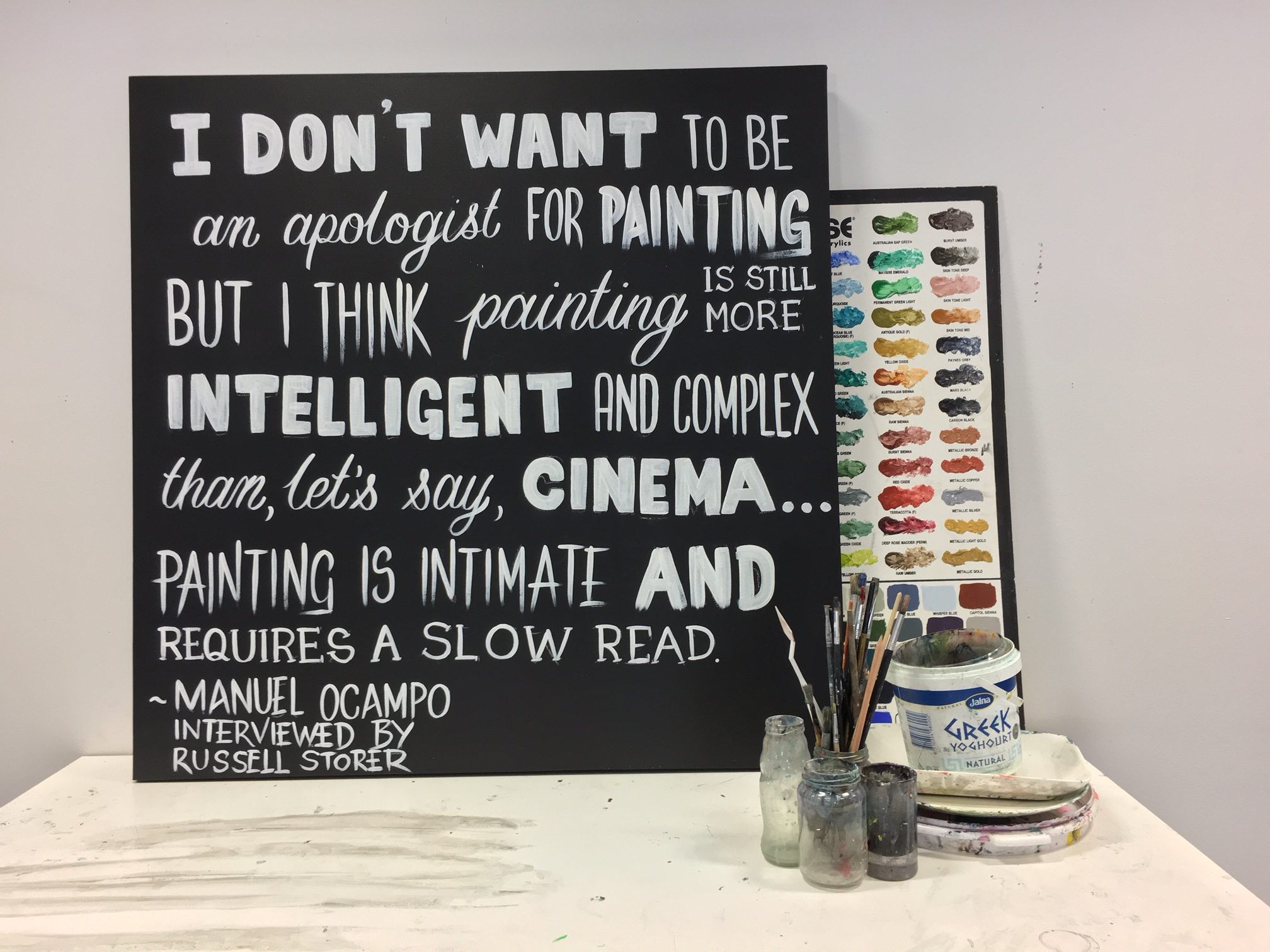
Paintforum International: Making Superfictions Real, by Peter Hill, Blindside Gallery, Melbourne, Australia (2015). © Peter Hill.
Peter Hill: General Idea is a fictional construct that finds its subversive outlets across a range of media including film, performance, installation, video and photography. It is 24 years since the three of you invented it. How close have you remained to your original vision?
A. A. Bronson: I don’t think there was anything we would call an original vision as such back in 1968, and we didn’t actually use the name General Idea until 1970 when we used it for a particular project. Later we established a programme for ourselves that would last us until 1984. When that date came around we had to decide whether we would continue to work together or whether we would stop. Our original intention was to close the project in 1984.
For the complete interview visit: www.superfictions.com
CAMERON OIL
A fictitious oil company created by Peter Hill in 1989. Within the fiction, Alice and Abner “Bucky” Cameron made their billions from the Cameron oil fields in Alaska. They bankrolled New York’s Museum of Contemporary Ideas on Park Avenue and their huge egos are loosely modelled on the Paul Gettys and Armand Hammers of this world. In the early 1990s, Cameron Oil began a new life on the newly available internet.
JANET CARDIFF
Janet Cardiff has, amongst many other projects, made a détournement of the Situationist derive and melded it with film noir and pulp fiction. She first came to international attention with her work at the Whitechapel Library, London, Case Study B, in which ‘spectators’ became ‘participants’, and were sent out into the streets of London with headphones and a CD that gave instructions on where to walk – across busy streets and down dark lanes. An audio equivalent of trompe l’oeil was explored when the noise of screeching traffic on the headphones merged with real traffic noises on the street. Much of her work has been made in collaboration with George Bures Miller. She has constructed ‘walks’ in many parts of the world which often have powerful touristic backdrops such as the Sydney Opera House and the Egyptian Pyramids.
GARY CARSLEY
Gary Carsley’s work creates a Superfiction from a range of cultural and technical tropes including post-colonial history, industrial production methods, and the idea of the “draguerrotype.” In 2009, when Peter Hill asked him about his recent project for the Singapore Biennale, curated by Fumio Nanjo, and his subversion of IKEA flatpacks into works of art, he said:
“I had been looking for a way to critically re-engage with the conceptually playful positions of the early 1960s. It was a radical moment, full of radicalising potential and IKEA’s flat pack is similarly idealistic, particularly in the way in which it co-opts the spectator in a form of expanded, collaborative authorship similar to the way FLUXUS artists like Yoko Ono were then doing.”
DAMP
Writing about DAMP in Photofile 59, in a section called ‘Encyclopaedia of Photofictions,’ Peter Hill described some of their projects up to 2000:
“DAMP: A collaborative art group based in Melbourne. They have been working together since 1995. They meet once a week in twelve-week blocks, usually in the TCB studios in Port Phillip Arcade. Established with Geoff Lowe, DAMP has developed into an independent collective with an extensive membership. Their work seems to work simultaneously with and against the media in a similar way to the UK’s latest tabloid art stars The Leeds 13. Peter Timms gave a good introduction to their work in The Age, Wednesday 18 August, 1999, when he wrote: “Apparently things got a bit out of hand at 200 Gertrude Street a week or so back. During an exhibition opening, when the gallery was packed with people, a young couple started arguing. It was unpleasant, but at first didn’t cause too much disruption, apart from the odd disapproving look. Then the dispute got louder and more insistent and one or two others became involved. A young man had a glass of wine thrown in his face, then the shoving started. Glasses and bottles were knocked over and smashed, and a girl was pushed through the wall. The installation work in the front gallery, by a group of artists calling themselves DAMP, was almost completely wrecked. Only gradually did people start to realise that DAMP’s installation was not being destroyed but created.”
JACQUELINE DRINKALL
Jacqueline Drinkall works across a range of conceptual and installation art, some of which grew from her time when she worked as an assistant to Marina Abramović, others growing from her investigations into art and telepathy. The project which came closest to a Superfiction involved employing the services of a psychic, at Sydney’s Circular Quay and instructing him to contact the spirit of Marcel Duchamp. The outcome of this meeting of minds was a series of drawings made by Duchamp channeled through the Australian medium.
IAN HAMILTON FINLAY
Ian Hamilton Finlays’ creation of The Saint Juste Vigilantes (a “real” Superfiction) and his battles with both the Hamilton Rates authorities and the French government were explored in an interview with Peter Hill in Studio International, No 1004, 1983 (London):
Peter Hill: Before we speak about the problems you have had to face over the past year or so it might be worth speaking about the philosophy behind your garden temple at Little Sparta. As one of the most beautiful collaborations between man and nature that I have ever seen, I wonder how it all began?
Ian Hamilton Finlay: Every question can be answered on different levels, or, that is, has a number of different answers. As a building the garden temple began as a cow byre which we converted into a gallery and then, over a period, into a garden temple, or as we at first described it ‘Canova-type temple’ – referring to the temple built by the Italian neo-classicist. This was not to equate our garden temple with Canova’s temple but to explain it by means of a precedent: a building which housed works of art but which did not present itself specifically as an ‘art gallery’. But in another way one could say that our garden temple began because we had a garden, and we have a garden because we were given a semi-derelict cottage surrounded by an area of wild moorland. This moorland represented a possibility, and produced our response. (I say ‘our’ to include Sue Finlay who has been, from the beginning, my collaborator on the garden).
For complete interview visit: www.superfictions.com
JOAN FONTCUBERTA AND PERE FORMIGUERA
Using taxidermy and sepia photography, these Catalan artists created the supposed zoological discoveries of Dr. Peter Ameisenhaufen who died in a car crash north of Scotland. Joan Fontcuberta has since gone on to create numerous superfictions, usually photographically and through analogue and digital techniques.
CHRIS CHONG CHAN FUI
Malaysian artist, Chris Chong Chan Fui, created BOTANIC (2013) which comprises eight large digital prints on paper (each 152 x 213cm). According to the catalogue of the 2013 Singapore Biennale: “Malaysian artist, Chris Chong is most commonly known for his work in film, but his most recent work and Singapore Biennale 2013 contribution, BOTANIC, is a series of drawings. These drawings follow the style of traditional botanical illustrations, an approach that is still used today to capture the image of a plant for scientific purposes. Botanical illustrations are traditionally made from observation of natural flowers, where the form, colour and details of the plant are rendered in great detail for referencing and understanding plant species. However, Chong’s illustrations, while depicting similar qualities, are derived from artificial flowers instead. At first, a viewer might not realise that the images are based on non-living plants, but closer looking will reveal unnatural textures and shapes to the array of plants illustrated. As an artist who commonly makes use of digital media, Chong’s process of hand drawing demonstrates a return to a more basic form of art making as he focuses upon observational drawing. These drawings are a reflection of the artificiality that is often found in contemporary culture today. The artist is critical of the fact that such artificiality is so widely accepted as a replacement for nature. Hence, he uses his drawings of artificial plants to capture an example of a commonplace substitute.”
RODNEY GLICK
An Australian artist based in Perth (WA), Glick has created many Superfictions, notably “the Glick International Collection” and the work of the philosopher Klaus. Klaus had a ten-step programme for reaching enlightenment and every year Klaus would announce the next step. Eventually he was due to disclose the 10th step at the United Nations in New York, but failed to appear at the appointed hour. Several weeks later, Glick was found by a gardener wandering in a garden in Bethlehem. Glick revealed the 10th step to the gardener, which was “Start again”.
RICHARD GRAYSON
Richard Grayson is an artist, curator, writer, and director of the 2002 Biennale of Sydney, (The World May Be) Fantastic. Many of the artists included in this event created work that could be described as Superfictions. In the introduction, he writes: “The traffic between ‘the real’ and the ‘not real’ is of course osmotic. Sir John Manderville published Manderville’s Travels at the end of the 14th century. To us, it is a work of fiction and fable, with its reports of one-eyed people in the Andaman Islands and dog-headed people in the Nicobar Islands – Manderville also locates paradise, but rather charmingly says he cannot say any more about it as he has not yet been there. Certainly by the 16th century ‘to Manderville’ had become a colloquialism for lying and exaggerating. However Columbus planned his 1492 expedition after reading the book, Raleigh pronounced every word true, and Frobisher was reading it as he trail blazed the northwest passage. So the ‘false’ maps gradually segue into the maps we now accept, but these too are open to constant revision.”
See also ALEKSANDRA MIR, SUZANNE TREISTER, JANET CARDIFF AND PETER HILL
GUILDFOR PUB BOMBINGS
The release of the Guildford Four in 1989 after 14 years of wrongful imprisonment was instigated by revelations of acts of fabrication by the police, as complex as any Superfiction. For one of the best overviews of this case see Ronan Bennett’s lengthy article in The London Review of Books, 24th June, 1993.
IRIS HÄUSSLER
One of Iris Häussler’s best-known projects, The Legacy of Joseph Wagenbach, begins with a series of “views” expressed by, in turn: “the visitor”; “the archivist”; “the protagonist”; “the artist,” and “the curator.” The first of these begins: “We left the Field Office to walk towards Wagenbach’s house, wearing white lab coats. The archivist knocked on the door before turning her key. We squeezed inside. Stale air. Dim light. Shapes formed in corners and shadows that I would have never imagined [...]” while the last one reads: “Approximately two years ago [...] Iris told me about an idea for a work titled The House of the Artist; however she had not yet developed it due to the scale, intensity and logistics of the project. [...] Basically that was it, a single idea of immense proportions. I immediately knew we had to make this happen and that it would be an extremely significant project.”
AMANDA HENG
In 2006, Amanda Heng created a fictitious travel agency that promoted a tour of four Chinese-Singaporean cultural collections that were notionally re-sited in the region, outside Singapore. The artwork, Worthy Tour Co (S) Pte Ltd, was first shown at the inaugural Singapore Biennale (City Hall building). This artwork has been recreated within the new National Gallery Singapore, halfway up the wide internal flight of stone stairs. According to the wall text: “These collections reveal the cultural intersections between Singapore and the rest of Asia, and also considers the place of these cultural materials within museology.” There are interesting parallels between this project and Urich Lau’s The End of Art Report (2013) exhibited at the 2013 Singapore Biennal

Plato’s Cave: Linking Drinking With Thinking, the bar in the basement of
The Museum of Contemporary Ideas (1989 – continuing). © Peter Hill, 1989.
PETER HILL
Peter Hill is a Glasgow-born Australian with dual nationality. In 1989, he launched New York’s Museum of Contemporary Ideas, supposedly the world’s biggest new museum and the first of many Superfictions he created (see The Art Fair Murders). Hill originally coined the term to describe the work of a number of artists operating independently in the late 1980s. These include Res Ingold (Switzerland) and his fictitious airline; SERVAAS (Netherlands) and his fictive world of deep sea herring fishing; the Seymour Likely Group (Netherlands); David Wilson’s Museum of Jurassic Technology (USA); Rodney Glick’s (Australia) theories of Klausian Philosophy; and Joan Fontcuberta’s and Pere Formiguera’s (Spain) creation of the German zoologist Dr. Peter Ameisenhaufen.
Since 1989, Peter Hill has gone on to create his Encyclopaedia of Superfictions which documents many more Superfictions artists and art groups, most recently The Bruce High Quality Foundation University (BHQFU) based at Cooper Union, New York (see Art in America, March 2010, pp59-64), and numerous Singaporean artists including Amanda Heng, Adeline Kueh, Urich Lau, and Robert Zhao.
When Peter Hill’s first Press Release for the Museum of Contemporary Ideas was mailed out in 1989 to newspapers, news agencies (Reuters/Associated Press), art magazines, critics, and artist friends, the German magazine Wolkenzratzer (Skyscraper), edited by Dr. Wolfgang Max Faust, believed it to be real and printed a story about the generosity of its benefactors Alice and Abner “Bucky” Cameron who made their billions from the Cameron Oil fields in Alaska. The article was written by Gabriela Knapstein (now curator at Berlin’s Hamburger Banhof), and as a result Wolfgang Max Faust was asked to chair a meeting of German industrialists and curators to see if Frankfurt could build a museum based on the model of Hill’s Museum of Contemporary Ideas.
See www.superfictions.com for complete Encyclopaedia, artist interviews, and exegesis of Peter Hill’s studio-based PhD on “Superfictions.”
PIERRE HUYGHE
Pierre Huyghe was born in 1962 and trained at the Ecole Nationale Supérieure des Arts Décoratifs. In 2001 Huyghe represented France at the Venice Biennale, where his pavilion, entitled Le Château de Turing, won a special prize from the jury. In 2002 Huyghe won the Hugo Boss Prize from the Guggenheim Museum, and exhibited several works there the following year. In 2006, Huyghe’s film A Journey That Wasn’t was exhibited at the Whitney Biennial in New York, and at the re-opening of ARC/MAM and Tate Modern. He is represented by the Marian Goodman Gallery.
The following is a description of the work Huyghe made for the 2008 Biennale of Sydney, directed by Carolyn Christov-Bakargiev, director of the 2012 documenta:
“At the Sydney Opera House a unique experience occurs throughout the course of a day and a night. An event with no beginning and no end, no division between stage and public, no specified path to take – it is a theatre liberated from rules. From the stalls to the circles to the stage, a forest of trees has grown and spread throughout the entire Concert Hall. The light of dawn barely shines on this valley obscured by clouds. This is an in-between reality, an image of an environment, a fact that appears for a brief moment just before vanishing.”
RES INGOLD
Ingold Airlines is the fictional creation of Res Ingold. His early work appeared only in business plans. And like the advertisements of SERVAAS and the press releases of Peter Hill, the work used only “spot colour” to sustain the illusion and to keep production costs to a minimum. Ingold logos appeared on executive jets flying in to Documenta 1X in Kassel. Through fiction he predated (in 1989) many innovations in 21st century intercontinental flight such as the use of gymnasiums and cocktail bars on long-haul flights.
INSTITUTE OF CRITICAL ZOOLOGISTS
See ROBERT ZHAO
INSTITUTE OF MILITRONICS AND ADVANCED TIME INTERVENTIONALITY
See SUZANNE TREISTER
ADELINE KUEH
See LULU
URICH LAU
In his installation The End of Art Report (2013) with three single-channel videos (duration 1:30 mins each), Malaysian-born Urich Lau (based in Singapore) asks the question: “When art is in the news, how does the media influence and inform our perception of it? Can I influence the perception that viewers have of art when it is coming through the media?”
To make this work, he persuaded former news reader Duncan Watt to deliver fictitious news reports about the closure of three of Singapore’s leading museums: National Art Gallery, Singapore, Singapore Art Museum (in which his installation was placed during the 2013 Singapore Biennale), and National Museum of Singapore. According to the Biennale catalogue, “The End of Art Report seeks to raise the awareness of Singaporeans about the possibility of the loss of national cultural institutions, so as to create a debate over the need to ensure the long-term viability of these institutions beyond being instruments of economic value. In recent years, independent art spaces in Singapore such as Plastique Kinetic Worms (1998-2008), p-10 (2004-2007) and Post-Museum (2007-20011) had to give up their spaces due to rising rents and the pressure of maintaining the premises and running programmes with limited resources. Will the national cultural institutions face a similar fate when resources become limited? Following Marxist theory, are cultural institutions in Singapore merely the superstructure to the economic base?...The public responses to the fictional news reports could range from those who believe in the veracity of the reports to those who are either skeptical or do not believe in it.”
THE LEEDS 13
“The Leeds 13 first gained notoriety when they leaked to the British tabloid newspapers that they were using university money to go on holiday to Spain. In fact, the 13 art students from Leeds University stayed in hiding for a week, spent none of the money and fabricated holiday photos on a nearby beach in Scarborough. A few weeks ago the Leeds 13 presented their final degree show, made up entirely of work by other artists, ranging from Rodin and Damien Hirst to Marcel Duchamp. How do university degree examiners assess such a submission? Should it get a first or a third? It is not the first time such problems have arisen. Not so long ago, identical twins Jane and Louise Wilson submitted identical projects at different art schools in the UK. They are now candidates for the 1999 Turner prize. The Leeds 13 is just the latest batch of artists to create a superfiction that plays with the media and with the viewer’s ability to correctly read visual material. It goes beyond the notion of a “hoax.” Instead it illuminates, to paraphrase Picasso, how “art is a lie that can reveal the truth.””
From an article by Peter Hill in the Times Higher Education Supplement London, 6th August, 1999. Google: Superfictions
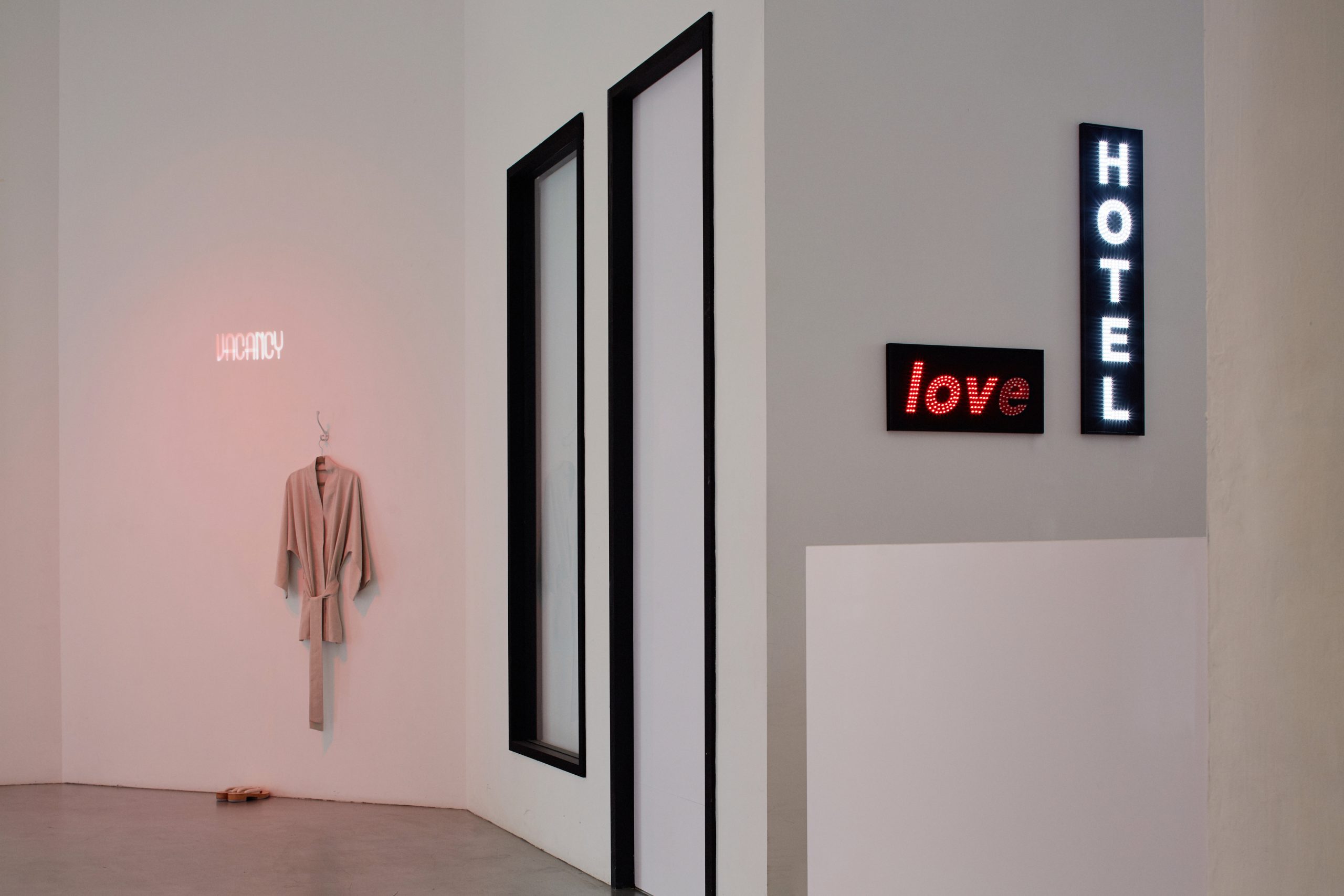
Adeline Kueh, Love Hotel (Installation view in What it is about when it is about nothing at Mizuma Gallery, Singapore),
LED Lights, aluminium, acrylic, sex appeal, Dimensions Variable, 2015. Photo courtesy of Tan Hai Han.
LULU
“Lulu” is the alter ego of Singapore-based artist Adeline Kueh. Through Lulu, Kueh explores the projected sexuality of an Asian woman. In Love Hotel, Lulu appears within the series of videos, photographs, installations & durational performances that take on the complexity of our desire for connection in an age of contemporary urban living. Having failed as a movie star, Lulu now runs a Love Hotel for a living. With En passant, Lulu’s chance encounters in transitory spaces are manifested. By looking at the gamut of emotions and issues surrounding our relationships to the city, acquaintances and even strangers, the works question experiences of isolation in the search for love as well as our expectations of what makes up these liminal spaces of intimacy.
MADE IN PALESTINE MADE IN ISRAEL
A fictitous team of artists created by Peter Hill as part of his ongoing Superfiction The Art Fair Murders. One artist is Israeli, the other Palestinian, though neither ever reveals his or her true name. For over 30 years they have been photographing artists and curators around the world at events such as The Venice Biennale, documenta, the Munster Sculpture Project, and the Sydney Biennale. Double portraits are then produced under the name, “Art World Fan Club,” with one portrait designated “Made in Palestine” and the other, “Made in Israel.” Peter Hill originally decided which artist would represent “Palestine” or “Israel” by the throw of a dice (see THE DICE MAN) – but now he invites the real artist to throw the dice. These works can appear in various scales from postcards to billboards. Artists so far included: Martin Creed; Marina Abramović; Dennis Hopper; Martin Kippenberger; Joseph Kosuth; Hermann Nitsch; The Ramingining Artists and Burial Poles; James Lee Byars; John Armleder and Sylvie Fleury; Res Ingold, Callum Innes, Fumio Nanjo, and Heri Dono.
This project grew from the post-traumatic stress Peter Hill experienced after witnessing the Guildford Pub Bombings (1974). In the aftermath of the trauma he experienced, he reduced his agnostic response to “No Idea Is More Important Than A Human Life.” Hill has since sent hundreds of ‘Made in Palestine, Made in Israel’ postcards to world leaders, religious leaders, journalists, and social commentators, with this phrase scrawled across the back of the card. Sometimes, alternative phrases are used, including “STOP THE KILLING NOW,” and “You Lied, You Said There Would Be A Ceasefire.”
ERN MALLEY
The Ern Malley hoax, which Peter Hill sees more as a Superfiction than a hoax, has parallels with the fictive Scottish poet ‘Ossian,’ created by James Macpherson who supposedly discovered him in ancient Gaelic texts. For those wishing to read about these ‘real’ poems by a fictitious poet (Ern Malley), the best starting place is Michael Heyward’s book on the subject.
ALEKSANDRA MIR
For profile and interview with Aleksandra Mir in THE BELIEVER, San Francisco, December ’03 / January ’04 see www.superfictions.com/encyclopaediaofsuperfictions.
MISS GENERAL IDEA
See A.A. BRONSON
MONA (MUSEUM OF OLD AND NEW ART)
The creation of polymath and multi-millionaire gambler David Walsh (whom Peter Hill describes as “an artist who choreographs the work of other artists. Who thinks and acts like an artist”), Mona is perhaps the world’s most astonishing museum. It is situated just outside Hobart, the capital of Tasmania, Australia’s island state. In 2011, Hill introduced its newly opened galleries, which are mostly underground, and its first exhibition “Monanism” to a French audience, in the pages of Artpress magazine, Paris:
“Far away, in an island state previously known as Van Diemen’s Land, an eccentric 49-year-old mathematician and gambler has just opened one of the world’s strangest museums, The Museum of Old and New Art (MONA). His name is David Walsh and his collection includes ancient Egyptian mummies and priceless coins, as well as an altered Porsche by Erwin Wurm, Wim Delvoye’s Cloaca Professional, and Chris Ofili’s The Holy Virgin Mary. So far, he has spent over $200 million dollars on this “campus” and his annual running costs will be in excess of $7 million (admission is free). In a soundproof room, a 30-channel video installation by Candice Breitz shows fans of Madonna singing a capella tributes from her Immaculate Collection album. Two visiting American artists, Tora and Rya, are invited to perform real and telephone sex in an unadvertised cleaners’ cupboard (most people miss this – look for the red fire extinguisher and open the door beside it). Elsewhere, an underground tunnel leads to Anselm Kiefer’s bookcase of lead and glass books, and close to that is an on-going project – an autobiography, if you will - by Christian Boltanski, documenting every day of the rest of his life and paid for every 24 hours. Daily video links flash between the artist’s studio in Europe and the museum in Australia. The longer Boltanski lives, the more Walsh has to pay for the artwork. What are the odds? Ask Walsh – he’s the professional gambler.
Welcome to Tasmania, once known as Van Diemen’s Land. For my money, it is one of the most remarkable, beautiful, and dangerous places on the planet. I lived there for eight years and I go back as often as I can. Errol Flynn was born here and his swashbuckling history is still alive in its pubs and clubs. Many people first encountered this astonishing island, and its capital Hobart, through the writings of Jules Verne: “Dumont d’Urville, commander of the Astrolabe, had then sailed, and two months after Dillon had left Vanikoro he put into Hobart Town.”
PHANTOM LIMBS
See ALEXA WRIGHT
PIGVISION
PigVision is a Superfiction created by Swiss artist/scientist Raymond Rohner while he was studying at the Centre for the Arts, Hobart, Tasmania. He asks the question: “Do Pigs See in Colour?” The project sometimes takes place in galleries, sometimes at agricultural fairs or in scientific meetings. The text on his website (http://www.artschool.utas.edu.au/PigVision/pigvision.html) begins:
“Paul Feyerabend, a foremost 20th century philosopher of science, became known for his claim that there was, and should be, no such thing as the scientific method.”

Babyface fictional cosmetics company, Eve Anne O’Regan, 2000. Photo courtesy of Eve Anne O’Regan. © Eve Anne O’Regan.
EVE ANNE O'REAGON
Creator of the Babyface Cosmetics Superfiction. The artist uses graphic design and elements of advertising in her gallery-based work.
KARL POPPER
Karl Popper’s teachings on “sophisticated methodological falsificationism” relate to Superfictions in terms of how we approach different visual truths. We can sight any number of white swans, he tells us, but we will never be able to say “all swans are white.” Whereas the single sighting of a black swan does allow us to say “not all swans are white.” Thus we approach the truth through falsifictionism rather than verificationism. See also Thomas Kuhn and Paul Feyerabend.
ORLAN
Orlan’s best-known Superfiction is her own body and the changes she has put it through. Her aim is to change her physical appearance through plastic surgery until it resembles the male Renaissance artists’ view of the ideal woman. Also known as Saint Orlan since she baptised herself with that name in 1971.
OSSIAN
‘Ossian’ is the narrator, and the supposed author, of a cycle of poems which the Scottish poet James Macpherson claimed to have translated from ancient sources in the Scots Gaelic. The furore over the authenticity of the poems continued into the 20th century and as such here are parallels with the Australian Ern Malley.
‘Ossian’ was supposedly the son of Fionn mac Cumhaill, a character from Irish mythology. See Wikipedia for further clues.
PATRICK POUND
Patrick Pound is a New Zealand-born Australian based in Melbourne. He has created many Superfictions, often submitting his fake identities to Who’s Who of Intellectuals and the Who’s Who Hall of Fame. Pound frequently uses a black and white photograph of East European soap carver Lester Gabo in place of his own. Pound also uses the name Simon Dermott, particularly for book reviews (See Photofile No 59, p 61 and p 63)
RALPH RUMNEY
Ralph Rumney was the founder of the English Psychogeographical Society and later a founder member of the Situationist International. Always one to back out of the limelight, he does not appear in the group photograph of the Situationists, taken in Cosio because he took them. Ralph Rumney was a painter who gave up painting (and has returned to it); an artist who regards artists as generalists whose primary function is to question, he has had a career in which both possibilities have been lived through. The interview is one aspect of his art, as is his conversation, as are the derives on which one might find oneself in his company, as are his writings.
For a three-way discussion between Ralph Rumney, Peter Hill, and Alan Woods see: www.superfictions.com. Also see SITUATIONISTS
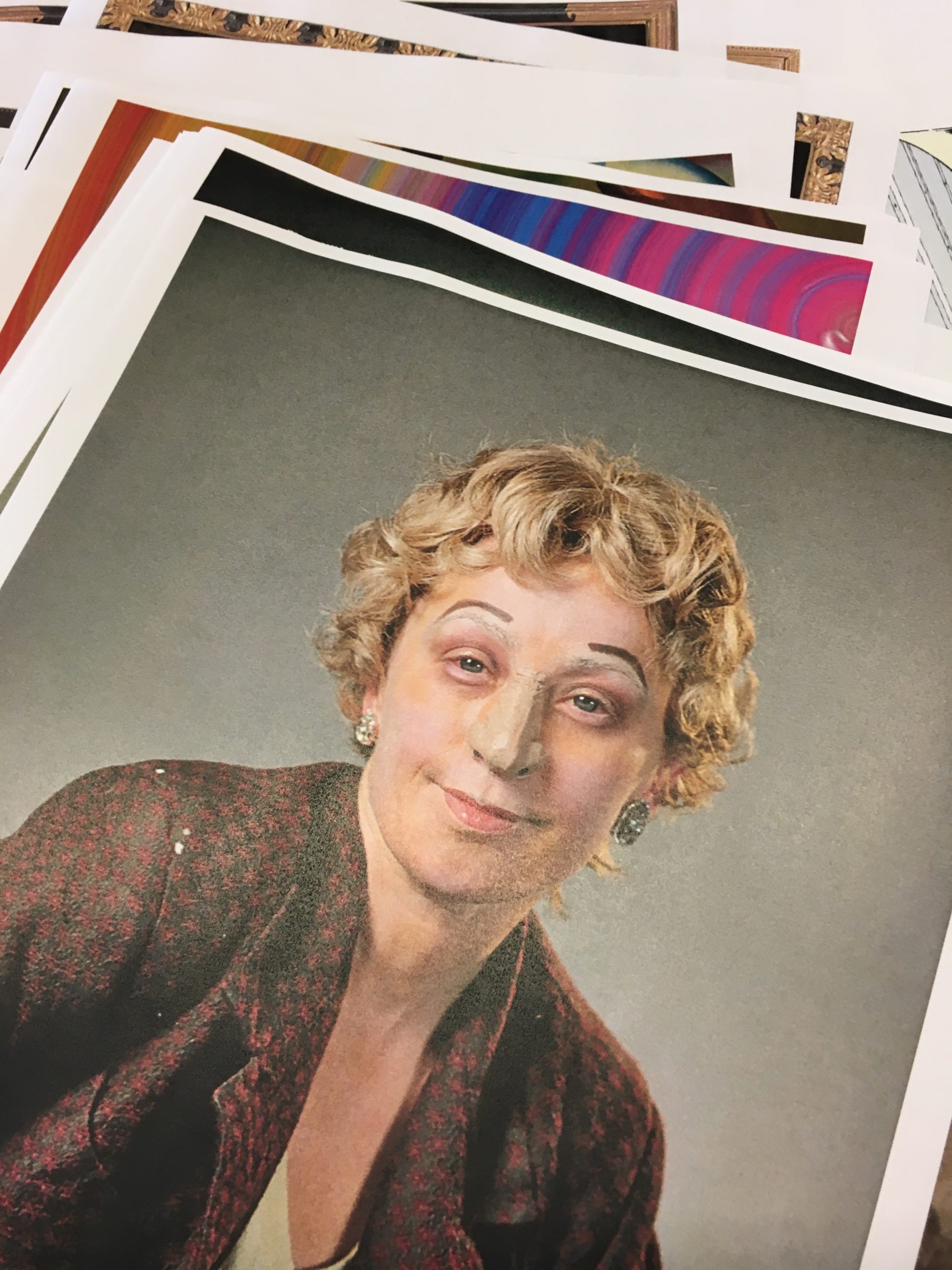
Cindy Sherman, photo taken in Queensland Art Gallery Press Office, Australia,
by Peter Hill, April 2016. © Peter Hill.
CINDY SHERMAN
Cindy Sherman’s early film stills, portraying herself in various roles - hitchhiker, babysitter, waitress - place her firmly at the forefront of female artists who question identity through the use of fragmented narrative. Her project continues, most recently at the Gallery of Modern Art (GOMA) in Brisbane (June 2016), Australia, where she adopts the persona of ageing women, often in outlandish clothing and heavy makeup.
SITUATIONISTS
The Situationist International evolved from a synthesis of various pan-European art movements and revolutionary philosophies including the College of Pataphysics; COBRA; the Lettriste Movement; the Lettriste International (LI); the International Movement For An Imaginary Bauhaus (IMIB); Asger Jorn’s Institute for Comparative Vandalism; Group Spur; and Ralph Rumney’s Psychogeographical Society. Its key members included Guy Debord, Ralph Rumney, Michele Bernstein, Alexander Trocchi, Asger Jorn, Isidore Isou, Gianfranco Sanguinetti, Raoul Vaneigem and Wolman. However, it was always a loose alliance of people and movements and many others were involved. Guy Debord is now regarded as the leader of the group, although it is debatable whether such an anarchistic conglomeration could ever allow itself to be ‘lead’.
THE SORBONNE CONFERENCE
A landmark conference in Paris (2006) organised by Dr Bernard Guelton on the theme of Art, Fiction, and the Internet (les arts visuels, le web, et la fiction). Artists and theorists who presented papers included: Jean-Marie Schaeffer, Jerome Pelletier, Kendall L. Walton, Jacinto Lageira, Marie-Laure Ryan, Peter Hill, Alexandra Saemmer, Monique Maza, Yannick Maignien, Andy Bichlbaum, Lorenzo Menoud, Jean-Pierre Mourey, Alain Declercq, Joana Hadjithomas and Khalil Joreidge, Eric Rondepierre, Melik Ohanian, Yann Toma.
For more conference details see: www.superfictions.com and the conference publication: ISBN 978-2-85944-636-9
SUPERFICTIONS
A term coined by Peter Hill to describe new uses for fiction in the contemporary visual arts using all media including the internet and the postal system. See other listings in The Encyclopaedia of Superfictions.
SUPERFICTIONS 2: AS IF
This exhibition of global Superfictions, curated by Peter Hill (Scotland/Australia) and Adeline Kueh (Singapore) was held at Kings ARI, Melbourne, from 26th September 2014 to 18th October 2014. It brought together the work of 11 artists:
Adeline Kueh
Cameron Bishop
Grant Hill
Jacquelene Drinkall
Michael Vale
Nathan Coley
Neon Kohkom
Patrick Pound
Peter Hill
The Institute of Critical Zoologists
Urich Lau
As if, curated by Peter Hill (Aus/Sco) and Adeline Kueh (Singapore), brings together 11 artists whose work explores fictive narratives through painting, sculpture, video, and installation. These range from Turner Prize finalist Nathan Coley’s collaboration with Cate Blanchett – a meditation on the laneways and dark alleys of Melbourne and Glasgow – to Melbourne painter Grant Hill’s images of suburbia that look “as if” they are something else. Several contemporary artists have, in recent years, investigated the animal and plant kingdoms, but few so poetically as the Singapore-based Institute of Critical Zoologists (aka Robert Zhao), represented in “As if” by a complex artists’ book. This is a celebration of the strange forking paths that confront our imaginations in the garden of Superfictions.
See AUTHENTICITY...?

Aesthetic Vandalism Robert Nelson, art critic for The Age newspaper
(Melbourne), suddenly slashes a canvas by Peter Hill’s fictive artist Herb
Sherman, during the opening of the exhibition As if: Superfictions 2 at King’s ARI,
curated by Peter Hill and Adeline Kueh, Australia (2014). © Peter Hill.
SYNTHETIC MODERNISM
In the early 1980s, Peter Hill became frustrated with the (over)use of the terms modernism and post-modernism that seemed to go head-to-head like sporting teams in an unhelpful binary opposition. He coined the term “synthetic modernism” to cover the grey area between modernism and postmodernism and found it useful as a way of describing the art of the Superfiction.
BOONSRI TANGTRONGSIN
Boonsri Tangtrongsin is a Thai artist currently working in Scandinavia. She is the inventor of “Superbarbara” a non-archetypal heroine that takes the form of an inflated sex doll. Superbarbara was exhibited as a single-channel video made up of 11 episodes in the 2013 Singapore Biennale. According to the catalogue: “Although much of Superbarbara’s encounters are allusions to social realities in Thailand, at the heart of these works are philosophical conundrums that are universal in human existence. By transforming Superbarbara from a sex toy into a saviour, yet positioning her as both victim and valiant hero, the artist reflects on the potential of ordinary people to play the role of heroes.”
Boonsri Tangtrongsin and Superbarbara were curated into the exhibition Faux Novel at RMIT Project space by Peter Hill and Anabelle Lacroix, from 26th September to 23rd October 2014.
THIRTEEN MONTHS IN 1989
See THE ART FAIR MURDERS AND THE AFTER SEX CIGARETTE
TORCH GALLERY
This Amsterdam Gallery run by the late Adriaan Van Der Have was pioneering in its support of artists working with Superfictions including: Guillaume Bijl, Res Ingold, SERVAAS, Seymour Likely, Gary Carsley, and Peter Hill.
SUZANNE TREISTER
Suzanne Treister is the founder of the Institute of Millitronics and a widely exhibited artist, including in the 2002 Biennale of Sydney (The World May Be) Fantastic. One of her most endearing creations has been the time travelling Rosalind Brodsky who is like a cross between Dr. Who and Woody Allen’s Zelig (she mysteriously appeared on the set of Schindler’s List alongside Ben Kingsley).
Treisters’s book No Other Symptoms: Time Travelling with Rosalind Brodsky is described in the catalogue to the 2002 Biennale of Sydney (The World May Be) Fantastic: “Loosely resembling an adventure game, the story is set in 2058, at an institute of esoteric advanced technology. The facility is crowded with paraphernalia through which visitors can explore Brodsky’s life and adventures…In the bedroom a large Introscan TV screen shows excerpts from Brodsky’s career as a television cook, where she loftily disregards the laws of physics with a recipe for converting gâteau into Polish pierogi dumplings.”
MICHAEL VALE
Creator of many Superfictions, Vale is perhaps best known for his Smoking Dog series of works, including the award-winning video set in various locations including Venice and Paris.
DAVID WALSH
See MONA
ORSON WELLES
Orson Welles’ U.S. radio adaptation of H.G. Wells’ War of the Worlds was one of the earliest and most successful Superfictions. Across the country, listeners tuned in to what many believed to be an invasion of Earth from outer space. Sadly, there was at least one death caused by the panic on the streets and freeways.
FRED WILSON
By commenting on the place of African Americans within U.S. museums – and his projects often position them working as gallery attendants or cleaners, rather than customers and spectators – Wilson has caused many museum directors and curators to re-think their programmes and attitudes. He has also commented on the content of colonial paintings and their depictions of both slavery and domestic interiors. For one influential project, he dressed as a museum attendant himself and ‘lived’ in the gallery for a week – approaching white middle-class couples and interpreting the paintings for them.
ALEXA WRIGHT
Alexa Wright works across many areas from installation to photography and social commentary. Perhaps only one of her projects really fits the notion of the Superfiction. In it, she photographed a number of people who had lost limbs in car and motorbike accidents, in their homes. Through computer manipulation, Wright documented the slowly disappearing phantom limbs that each experienced for some months after their accident. These works were presented in panels of three photographs. In one instance a man has his hand, wearing his wedding ring, resting on the table. However, there is a gap between the wrist and the elbow where he feels nothing. In the next image the hand has disappeared entirely and the finger with the wedding ring now grows out of the stump of his arm. (See STRANGER THAN TRUTH)
XU BING
Creator of a fictional language that in its visual form, closely resembles (to foreigners) classical Chinese script. He has exhibited globally in events such as the Venice Biennale, the Asia Pacific Triennial (Brisbane, Australia), and is currently director of the Central Academy, Beijing.
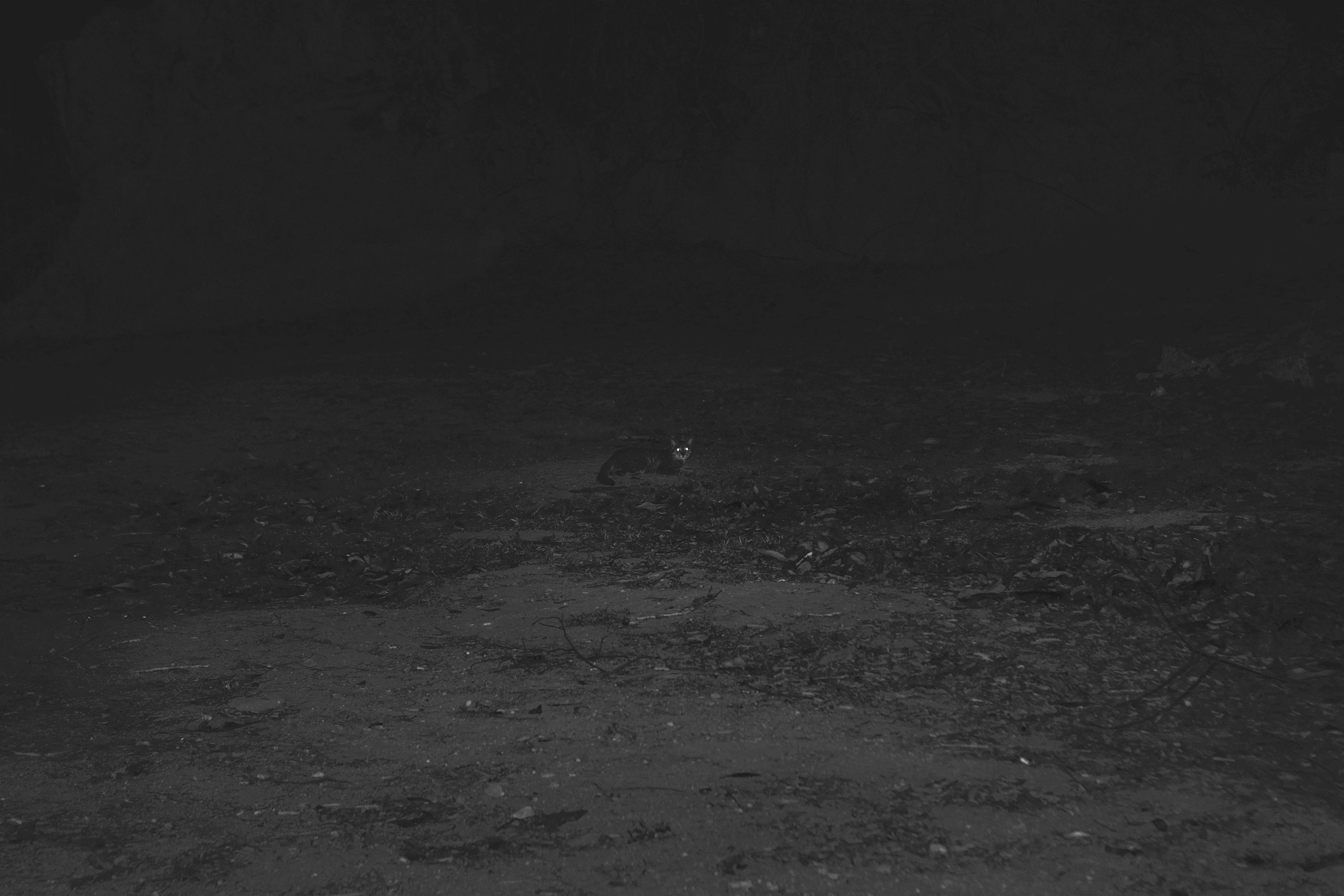
Robert Zhao Renhui
Last Cat On Christmas Island, 2016
60cm x 40cm, Diasec, 2016
www.landarchive.org
www.criticalzoologists.org
Courtesy of the artist.
ROBERT ZHAO
Robert Zhao is a Singapore artist who created The Institute of Critical Zoologists in 2008. His work is both poetic and scientific, dealing seriously, and at times humorously, with the fragile ecologies of our planet. In the 2013 Singapore Biennale, he exhibited A Guide to the Flora and Fauna of the World, described in the catalogue as: “an installation which seeks to document and reflect on the myriad ways in which human action and intervention are slowly altering the natural world. Based on the evolutionary premise that all living things constantly change and adapt to cope with and respond to their changing environments (or risk extinction), Zhao’s Guide presents a catalogue of curious creatures and life-forms that have evolved in often unexpected ways to cope with the stresses and pressures of a changed world. Other organisms documented in the installation are the results of human intervention – mutations engineered to serve various interests and purposes ranging from scientific research to the desire for ornamentation. Several specimens in this installation are based on fact; others are works of fiction. The line between the two is often an indistinct one, as scientific advances in the last half-century have made possible what was previously believed to be impossible.”
In 2016, Zhao exhibited a major research project in the 20th Biennale of Sydney (Carriageworks). This examined the flora and fauna of Christmas Island and linked its colonial past to both Australia and Singapore. It was a beautifully poetic analysis of a fragile ecosystem.
Essays
Subjects in the Mirror are Closer than they Appear A Post-traumatic Fictive Dream Disorder (PTFDD)
8th March, 2016
Đà Nẵng, zero five hundred Golf, Astronomical Twilight
A party of some 20 men lie flat and face-down on the white sands of China Beach. On the command “sẵn sàng, căng!”, they push themselves up to their elbows, slowly lift their heads and shoulders and look up at the sky.1 They hold for 15 seconds and repeat two times. Roughly 50 feet further up the shore, a zombie-eyed re-embodiment of a U.S. Army nurse from ABC television-series China Beach lies fully uniformed and lipsticked in classic beach-pose on her side. She leans her head on her left hand and speaks to the camera: “Make no mistake about it. Vietnam is a hotbed… (she pauses to look at a chopper that does not pass overhead) …of opportunity.”2
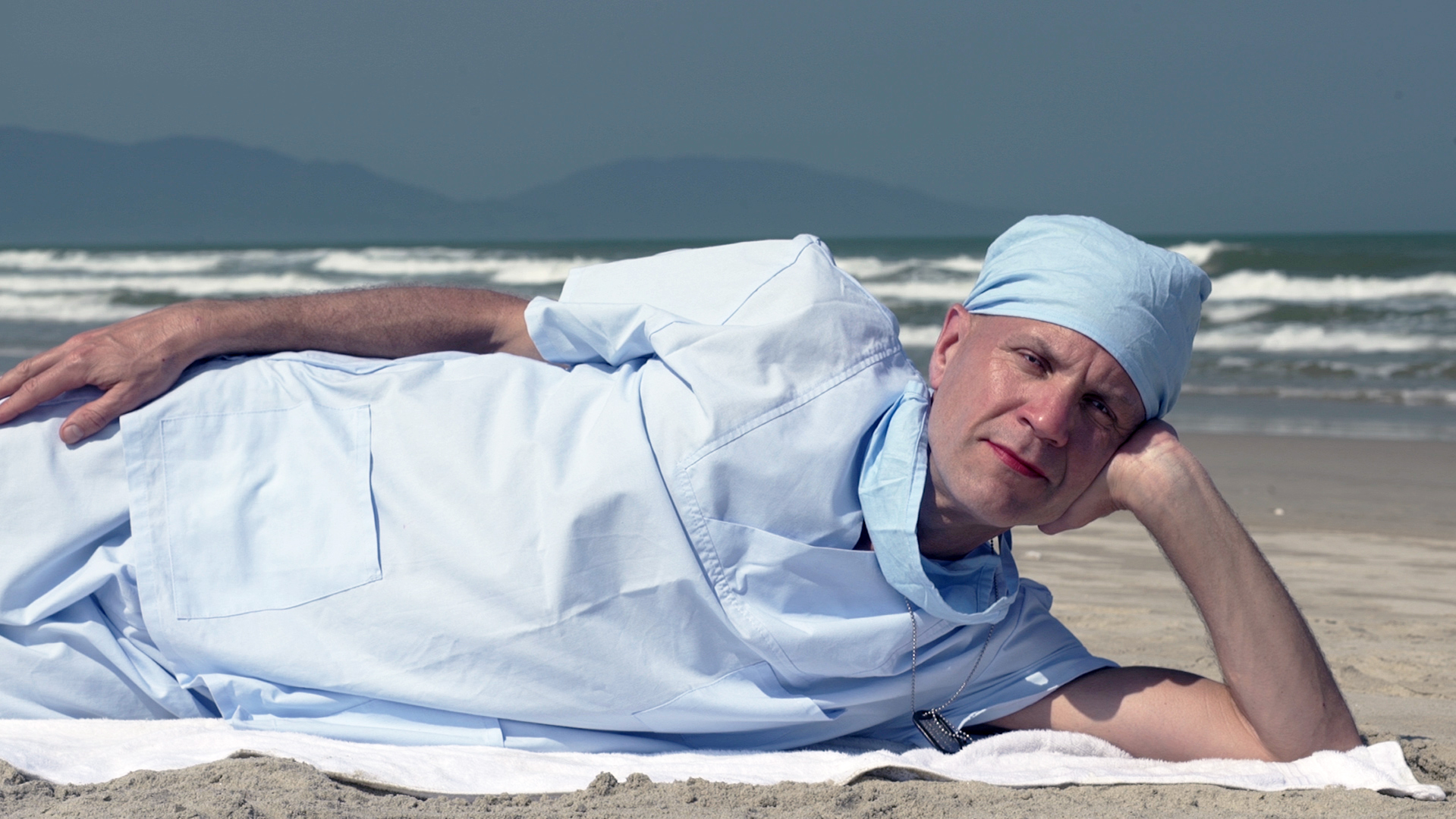
The sound in the background is that of low-flying “Huey helicopters scoping out the beach for Air Force and Army nurses who might be sunbathing, hopefully topless,” as one former pilot recalls in his memoir from the time when Đà Nẵng not only hosted the world’s busiest airport but also the U.S. Army’s main in-country station for Rest & Relaxation (R&R).3 Back across the boulevard, on a high-rise with a grand view on Cầu Rồng, the prize-winning and pyrotechnically equipped Dragon Bridge that roars and spits plumes of fire on the weekend, lies the nurse. She reclines on a hammock by the rooftop swimming pool taking in as much joy as the living dead can have in her second life as a real-estate agent. In the background, the early morning sounds of metal hitting concrete from the construction site can be heard. There’s more and then some throughout the city, where scads of tourist hotels and holiday resorts, most of them gated vacation communities, are popping out of the ground like wild mushrooms.4 “Đà Nẵng”, she says, “I am an idea whose time has come.” And if it ain’t the truth, it sure is real. The red gold-starred Communist Party flags that lined the streets since 1975 were removed from the urban landscape last year and in their stead, the impending shift towards a consumerist society is being brand-marketed through Vietnam’s newly found American love-affair, complete with Hotel Elvis, and Obama Bar.


And their affections are also being kindled in the smoke-filled room. After Obama visited Vietnam this summer for talks on China’s expansion in the South China Sea, and announced the lift of the U.S. embargo on lethal arms sales which had been operative since the ’60s, the return of American military units to its shores is becoming a very real prospect for the not-so-distant future.5 It was because of recent events that the name China Beach was snuffed out in 2010 with a ban on hotel’s use of the word ‘China’ for promotion in any way, shape, or form.6 And not because of any resentment towards the American troops that named it. They are quite welcome and especially on behalf of young Vietnamese under 30, who comprise no less than half of the entire country’s population and whose recollection of the war has little meaning to their daily lives or future ambitions. This tech-savvy generation is rapidly shaping their lifestyle by adopting global trends which they can access online. And which is spilling out as an unmistakable desire to look like America.7

Back on the shore, distant trumpets begin to sound with the glorious song of why and how it all began. “He has sounded forth the trumpet that shall never call retreat; He is sifting out the hearts of men before His judgment-seat; As He died to make men holy, let us die to make men free”… and so on. In the foreground, the apparition of a ghost by the name of Big Jim stands silently squinting at the sun. He does not know what he is doing there, or who he is or ever was. He remembers he once embodied Jim Morrison, revived as a guardian angel in the 21st century, but also has a particularly strong recollection of that day in 1964 when he visited his father on the USS Bon Homme Richard. This was only some months before Admiral Morrison commanded the U.S. naval forces into the Gulf of Tonkin Incident, sparking the U.S. involvement in the Vietnam War. They had declared each other dead that year. Standing with his back to the sea, he still wears his timeworn, bare-breasted, sleeveless hemp-jacket, but now also an army cap, combat trousers and two dog-tags dangling beside the black stone necklace he wore at the Hollywood Bowl in the zoned-out summer of ’68.
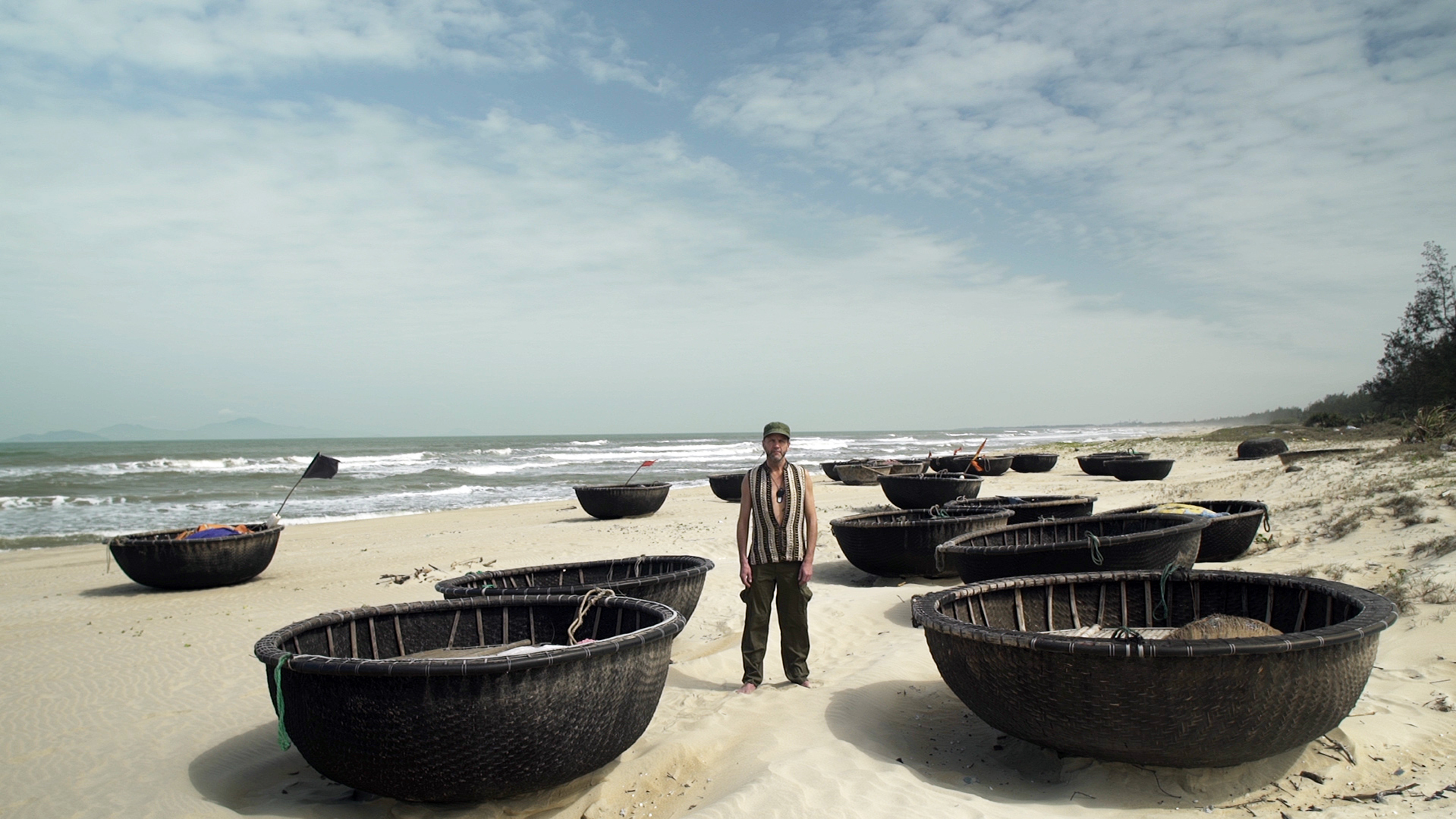
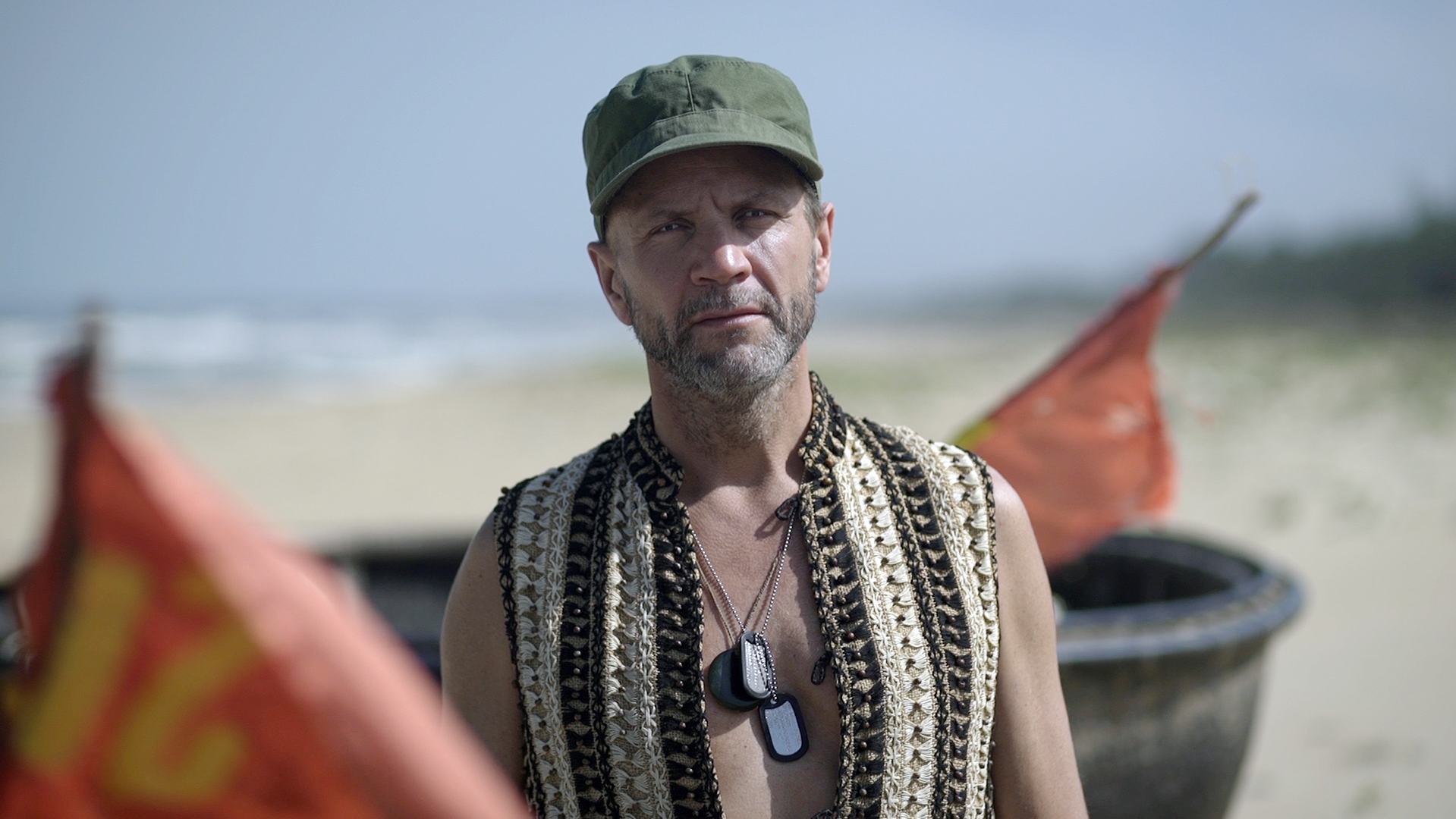
That summer was shortly after the Tet Offensive had made quite suddenly clear that the U.S. presence in Vietnam might actually not be a won battle. The countrywide strikes throughout January-February of 1968 had struck terror into the hearts of imperialism, and shock froze many Americans’ uncontested belief that the U.S. was an undefeatable force whose troops in Vietnam were practically superheroes.8 And for the first time, the realities of war were being blasted into the world’s living rooms – uncut and uncensored – through the beams of the television screens. Still squinting, Big Jim lifts up a voice… “Flying high, flying high, Am I going to die?”
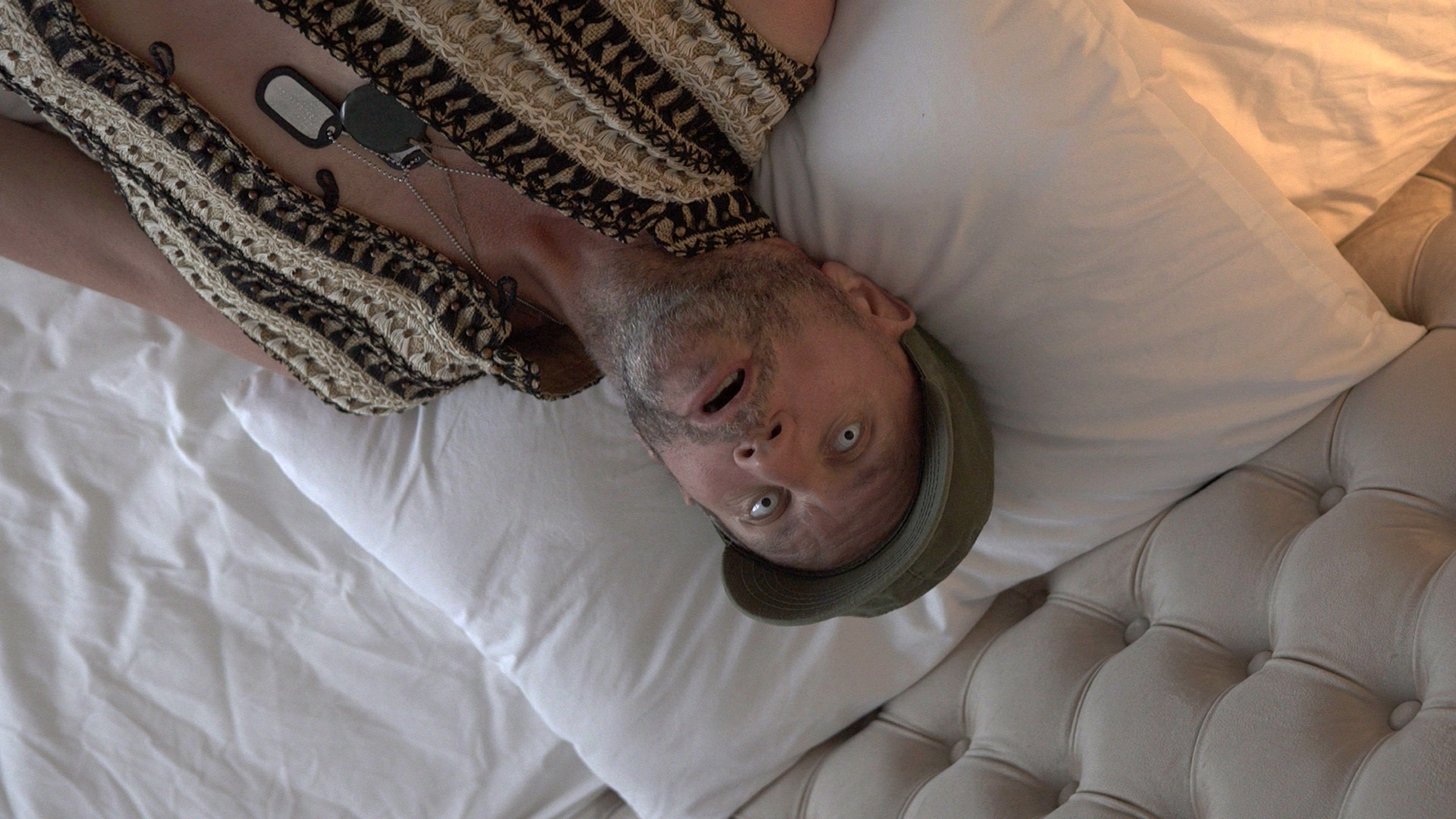
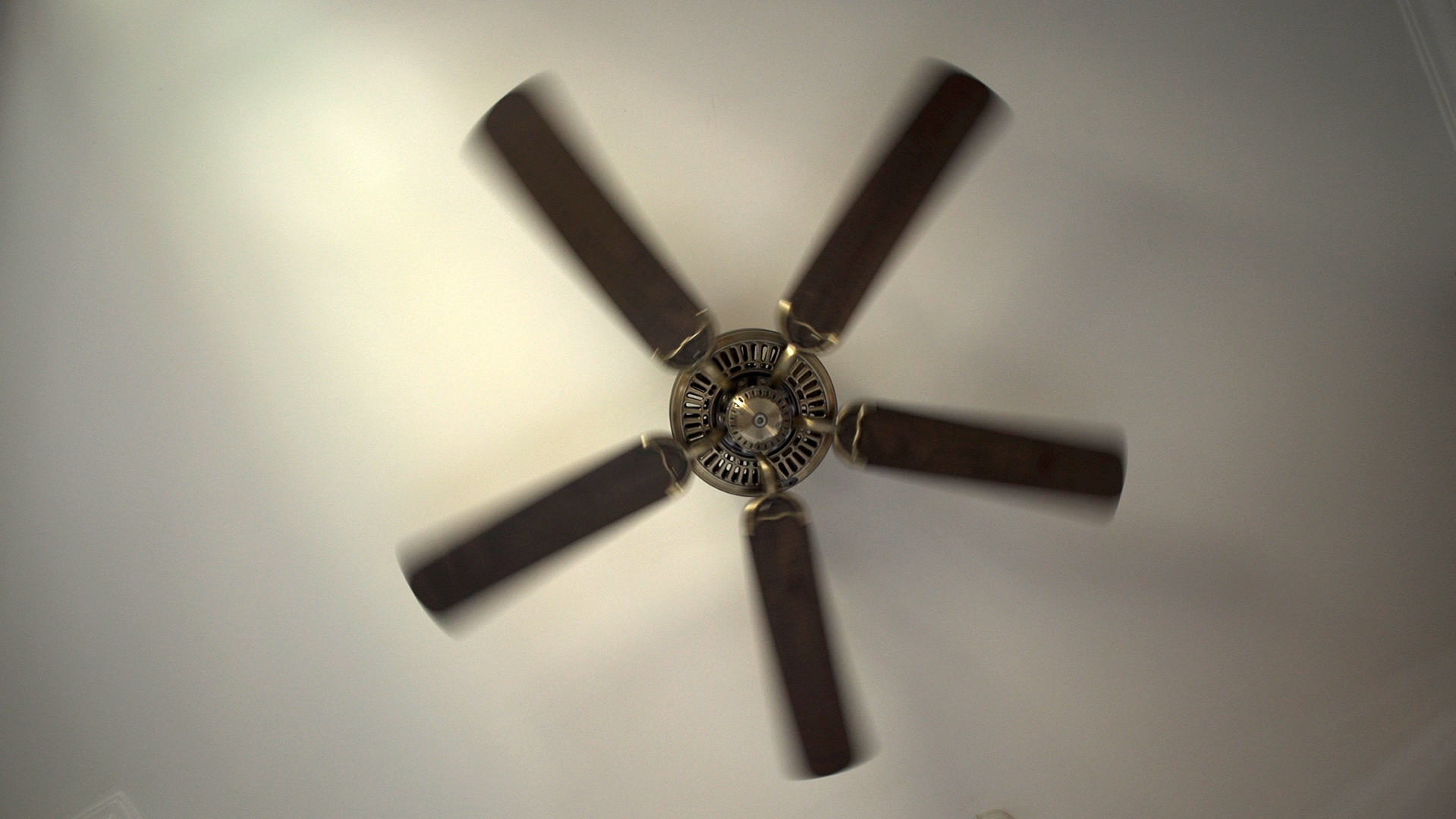
Meanwhile, in a hotel room, Hanoi Hannah’s voice sounds over the radio: “How are you, GI Joe? It seems to me that most of you are poorly informed about the going of the war, to say nothing about a correct explanation of your presence over here. Nothing is more confused than to be ordered into a war to die or to be maimed for life without the faintest idea of what’s going on.”9 Big Jim lies spread-limbed on the bed and changes the stations but hears only static. Head-shot upside-down, he gazes at the fan on the ceiling. The sound of a passing helicopter fades into cymbals and a guitar-riff, and then the lyrics: “This is the end, beautiful friend. This is the end, my only friend, the end. Of our elaborate plans, the end. Of everything that stands, the end…”10 When he opens his eyes, the fan is still turning, now in the daylight-sensor activated purple backlight bleeding from the cornice of his suite. He turns his head and looks into the camera, eye-to-eye. “Did you have a good world when you died,” he asks, “enough to base a movie on?”
Whatever the claims about victors writing history, the war of attrition and guerrilla warfare certainly made for plenty of American movies over the past decades, which encountered little trouble in telling narratives from the U.S. perspective. In Specters of War – Hollywood’s Engagement with Military Conflict (2012), Elisabeth Bronfen claims that “cinema functions as a privileged site of recollection, where American culture continually renegotiates the traumatic traces of its historical past, reconceiving current social and political concerns in the light of previous military conflicts. As a shared conceptual space, cinema sustains a reflection of and on the past.”11 This entertainment-as-dream-as-PTSD-relief and “national iconography of redemptive violence” is not only directed at the traumas from the actual carnage of war, but also at those from cinematic re-conceptualisations of them.12 Hollywood war films “continue to attest to the way soldiers never fully return home, even when they bring nothing more than quiet despair back with them from the war zone. In a similar vein, we, revisiting their experience on screen, also never fully work through the experience that the stars of these films embody for us.”13


Stranger and more dangerous things than the enemy, lurk in the thick of the forest. In the humidity and mosquito-clad, dingy labyrinth of the A Sầu Valley or “Valley of Death,” the spectre of Tele-Dorothy walks, to the haunting realisation that she seems to be dreadfully lost. Searching amid the foliage for a path, an exit, a way leading home, a phrase crosses her mind, “It has been written I should be loyal to the nightmare of my choice.”14 She walks on. In her mind, she tries to remember the guiding words that the good witch spoke to her: “Follow the Ho Chi Minh Trail… Follow the Ho Chi Minh Trail…” And there, at the edge of the “colossal jungle, so dark-green as to be almost black, fringed with white surf… far, far away along a blue sea whose glitter was blurred by a creeping mist,” it lies: the Yellow Brick Road.15 She once heard that from above, it “appeared as a massive yellow streak meandering its way north and south with tributary roads breaking off in all directions.”16 Some call it hell, some call it home. She follows it, until it finally opens up to the beach and to a wide, open view of the brightest full moon she ever saw.
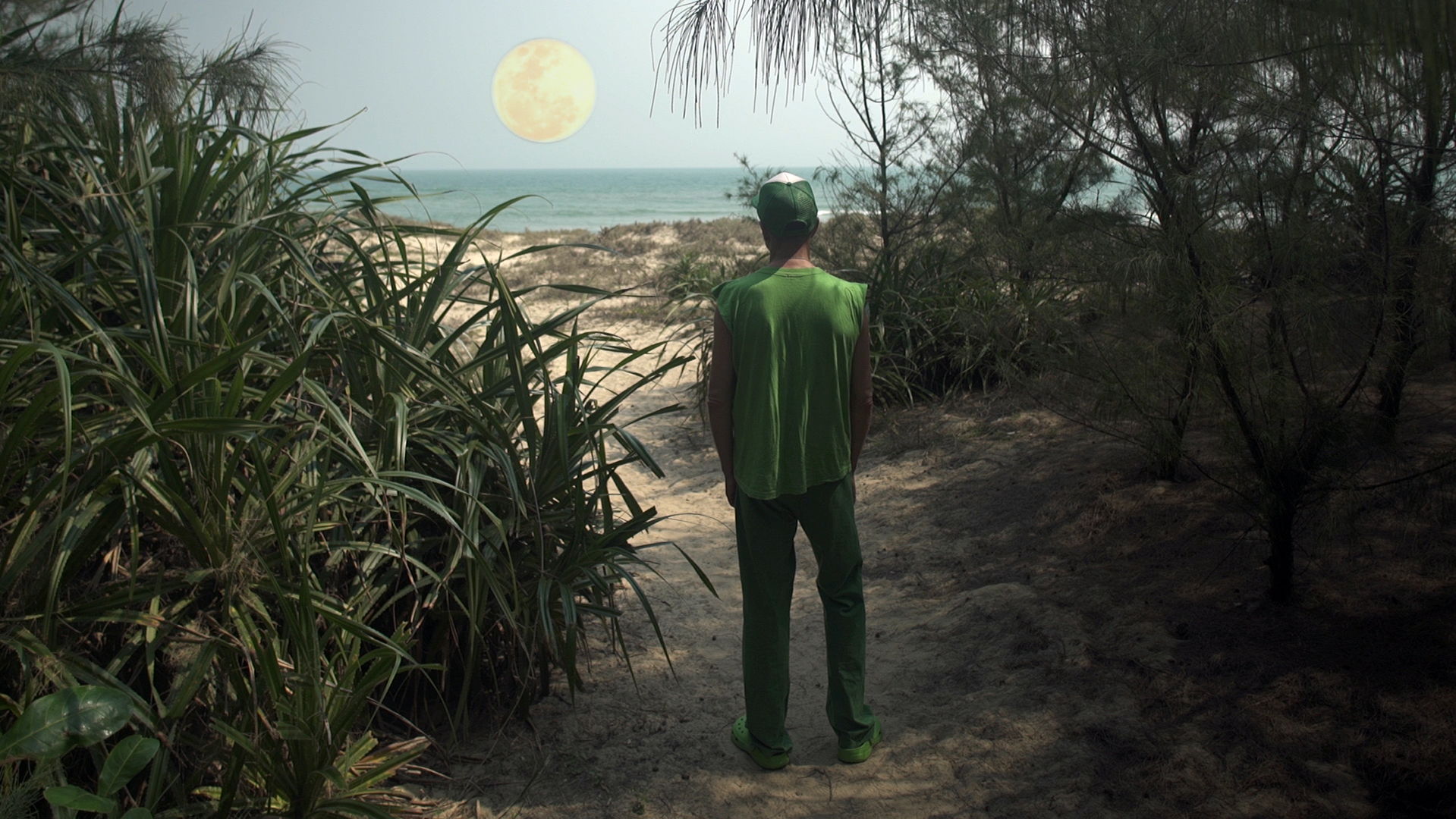
Not to touch the earth
Not to see the sun
House upon the hill
Moon is lying still
…The mansion is warm, at the top of the hill
Rich are the rooms and the comforts there
Red are the arms of luxuriant chairs
Wake up, girl, we’re almost home
We should see the gates by mornin’
We should be inside the evenin’
Soon, soon, soon
Moon, moon, moon
I will get you17


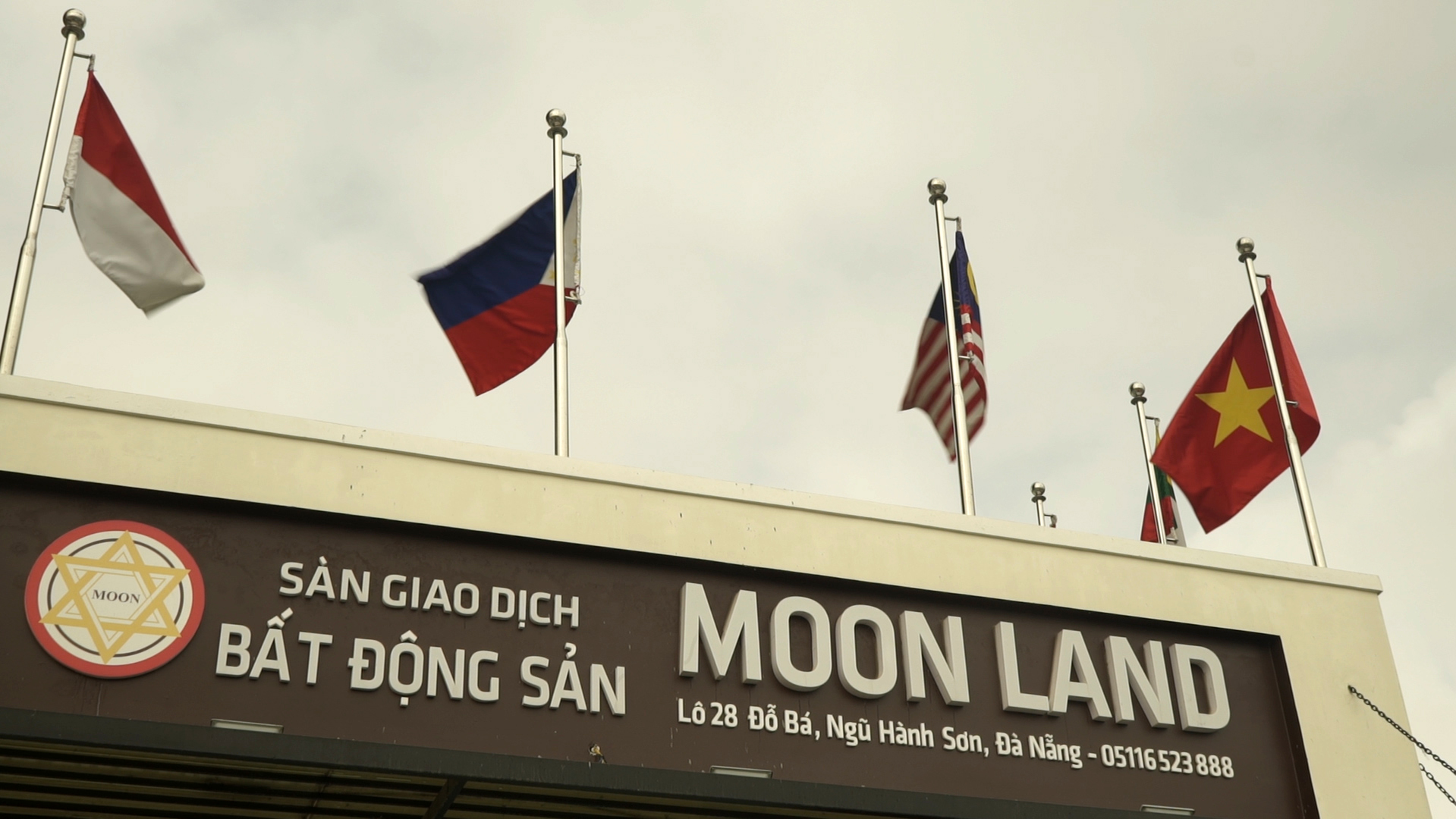
Day breaks at the foot of the Marble Mountains, where a block of stone from the quarry is being transformed into a life-sized Apollo astronaut, neighbouring a Happy Buddha, a Pietà, and a multitude of unicorns, dragons, monkeys and pixiu. “In the beginning God created the heaven and the earth. And the earth was without form, and void; and darkness was upon the face of the deep… And from the crew of Apollo 8, we close with good night, good luck, a Merry Christmas – and God bless all of you, all of you on the good Earth.” One Private Jim who “had just heard over AFVN radio, that the moon landing had taken place” recalls going outside to look at the moon: “All I could think of was how far away they were compared to my situation… It seemed strange – the great amount of human endeavour in technology to put men on the moon and there I was in the middle of a war. Seemed like two opposite ends of human achievement.”18 Rotating from dusk to dawn, ebb and flow, the figure is now being forged out of the slabs of the earth, assuming the posture of Buzz Aldrin walking on the surface of the moon.19

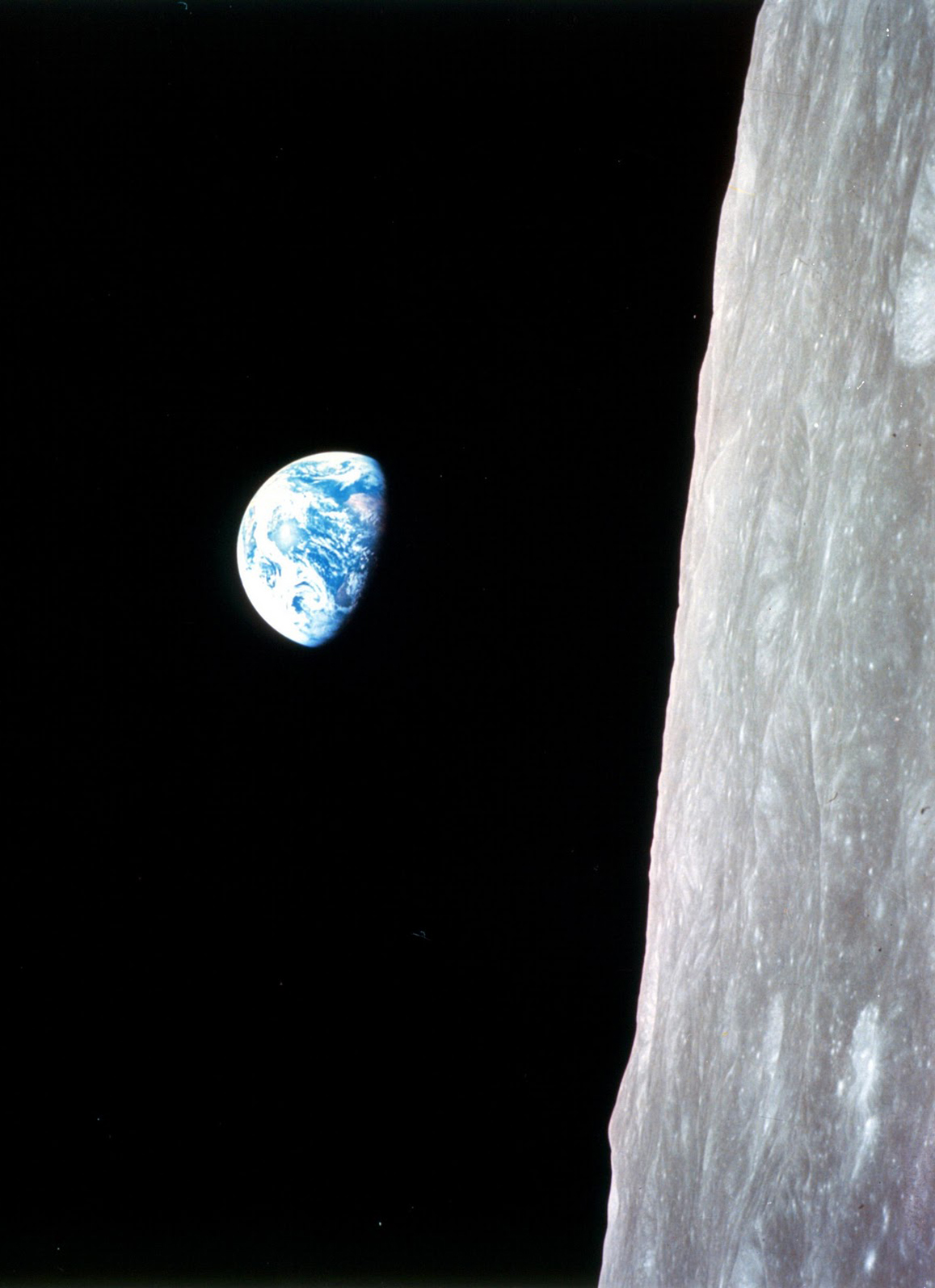
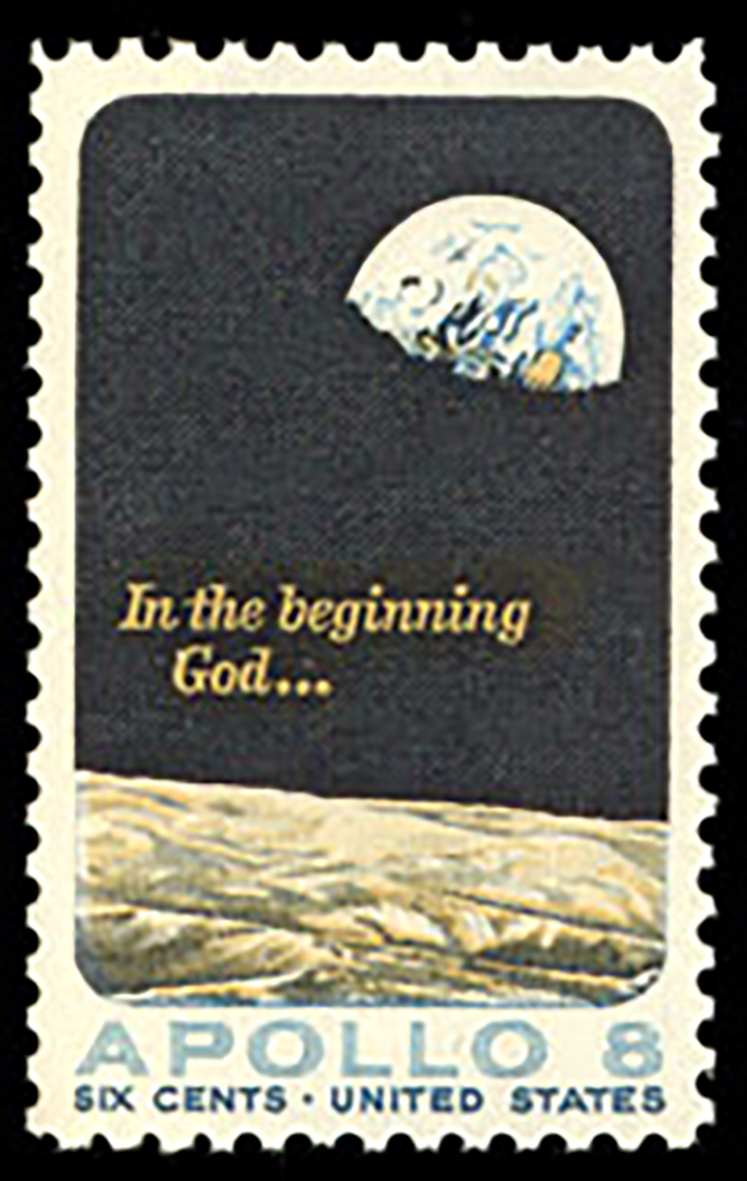
In truth, the U.S. was exceptionally well aware of the value of bridging distance. Having taken heed of the power of television in simulating proximity to deeply influence emotional response on a mass scale, they were now intent on taking advantage of this magical medium towards a victory of their own. NASA was in pains not only to land man on the moon, but also to televise the event live across the world.20 Some conspiracy theorists even claimed the Apollo programme was a fake to distract the world from the war in Vietnam. Others, who took the moon landing as a fact, saw at least a strong connection: “The American Patriot Friends Network claimed in 2009 that the landings helped the United States government distract public attention from the unpopular Vietnam War, and so manned landings suddenly ended about the same time that the United States ended its involvement in the war” in 1972.21 Whatever the case may be, and even in the event that the NASA’s film footage had been directed by none other than Stanley Kubrick himself, in the earthbound London-suburb set he had created for 2001: A Space Odyssey (as his wife had claimed), it was the most widely watched broadcast in the history of television, and even won an Emmy 40 years later.22 On Christmas Eve, 1968, the world’s televisions flickered in concert, and where the dark images of war once shown, pristine whites and greys lit up the screens. Some would have thought, “It’s not easy facing up when your whole world is black.”23 But that day, the U.S. felt second to nobody: “…Let there be light: and there was light. And God saw the light, that it was good: and God divided the light from the darkness.” And the public compliantly followed suit, in “an escapism that made use of the universe as an ivory tower.”24
But by releasing the image of the whole earth, the struggle for ideologies and national borders also came into question. For the first time in history, humankind looked at the fragile blue marble. It was the beginning of a global ecological movement, and a booster for economic globalisation. The Whole Earth Catalog, first published by Stewart Brand in 1968 “played an essential role in mediating between technological determinism on the one side and hippie revolt, i.e. back-to-nature romanticism, on the other.”25 Released in the same year as The Mother of All Demos, in which Brand was also closely involved, the two worked in tandem towards an interconnected and collaborative, if not collectivist vision of the human race.26 Based on the key principles of self-sufficiency and sustainability, the aim was to provide users with technological and knowledge-based tools that would empower them to “know better what is worth getting and where and how to do the getting.”27 The ensuing shift would supplant the old order of “remotely done power and glory—as via government, big business, formal education, church,” with a new model that was determined by proximity: “intimate, personal power.”28
Up in the heights, Frank, Jim and Will were the first to see Earth in its entirety. Nobody anticipated it would be of any interest to look back:
For its first three revolutions, the astronauts kept [the Service Propulsion System (SPS) rocket’s] windows pointing down towards the Moon and frantically filmed the craters and mountains below… It was not until Apollo 8 was on its fourth orbit that Borman decided to roll the craft away from the Moon and to point its windows towards the horizon in order to get a navigational fix… A few minutes later, he spotted a blue-and-white fuzzy blob edging over the horizon. Transcripts of the Apollo 8 mission reveal the astronaut in a rare moment of losing his cool as he realised what he was watching: Earth, then a quarter of million miles away, rising from behind the Moon. “Oh my God! Look at the picture over there. Here’s the Earth coming up,” Borman shouts. This is followed by a flurry of startled responses from Anders and Lovell and a battle - won by Anders - to find a camera to photograph the unfolding scene. His first image is in black-and-white and shows Earth only just peeping over the horizon. A few minutes later, having stuffed a roll of 70mm colour film into his Hasselblad, he takes the photograph of Earthrise that became an icon of 20th-century technological endeavour and ecological awareness. In this way, humans first recorded their home planet from another world. “It was,” Borman later recalled, “the most beautiful, heart-catching sight of my life.”29
Later this came to be called ‘The Overview Effect,’ a phrase coined by philosopher and writer Frank White, in his book of the same name, which “refers to the experience of seeing firsthand the reality of the Earth in space, which is immediately understood to be a tiny, fragile ball of life, hanging in the void, shielded and nourished by a paper-thin atmosphere. From space, the astronauts tell us, national boundaries vanish, the conflicts that divide us become less important and the need to create a planetary society with the united will to protect this ‘pale blue dot’ becomes both obvious and imperative.”30

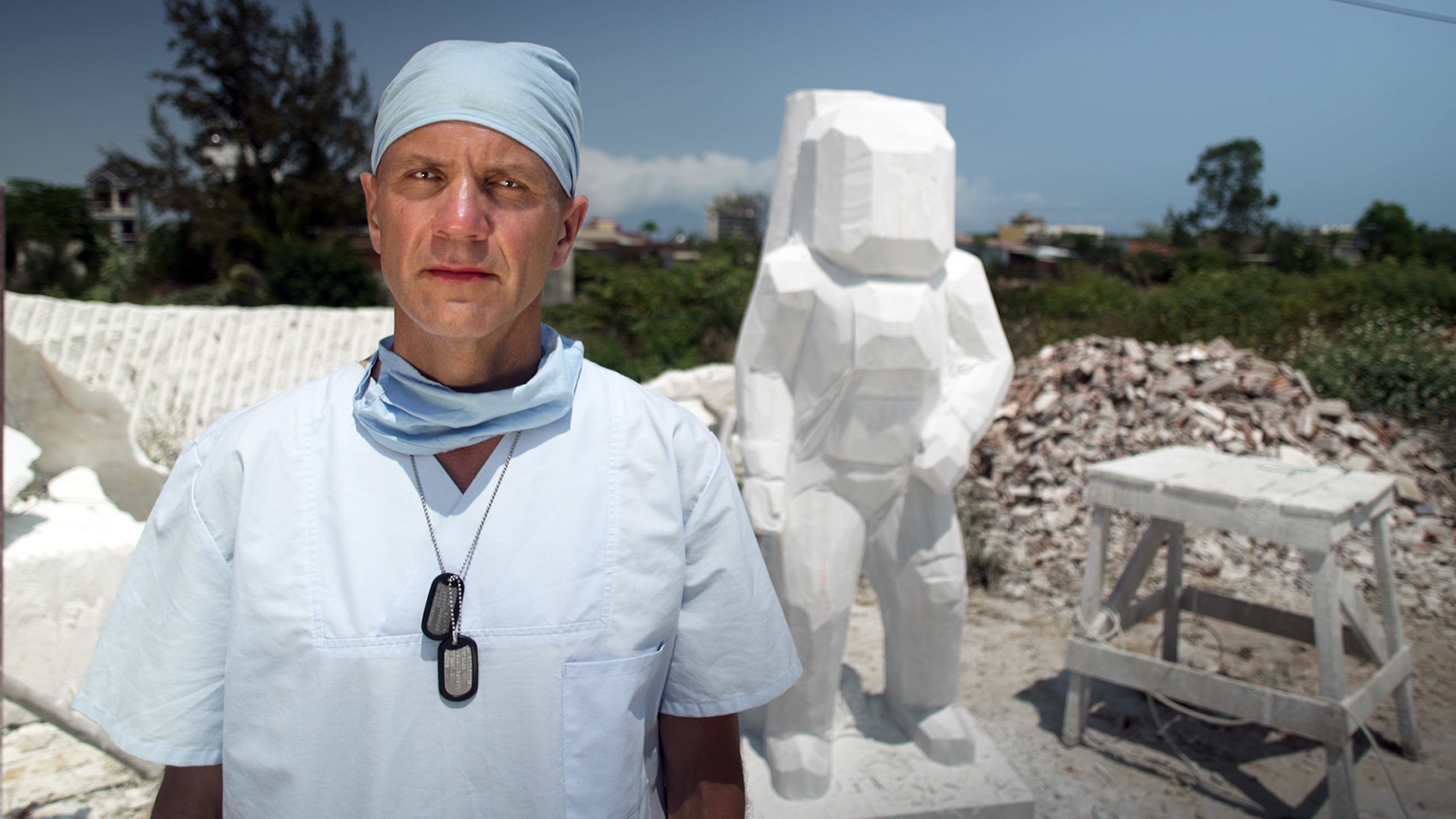
In the case of Buzz, this insight-bordering-on-sacrosanctity took a foul turn with a catholic tang. He recounts what he did while the cameras stopped running: “I poured the wine into the chalice our church had given me. In the one-sixth gravity of the moon the wine curled slowly and gracefully up the side of the cup. It was interesting to think that the very first liquid ever poured on the moon, and the first food eaten there, were communion elements.”31 This is especially striking given that the 1966 Geneva “Treaty for Outer Space” stated that “astronauts are envoys of mankind” and that “Space activities and their results are to be reported for the benefit of all.”32 But Buzz’s idea that his moon communion was in no way incompatible with the “all” and “mankind” parts of Space Law is far from exceptional. Rather the norm, the dictionary entry for “catholic” lists it as an adjective that is synonymous to the terms: “global,” “comprehensive,” “worldwide,” “planetary,” and “universal.”33
In the case of space exploration, something similarly unsettling and territorial transpired. Objectivist philosopher Harry Binswanger has proposed passing a new policy by which the first person to land on Mars, to reside there for a previously determined amount of time, and return alive, should be given ownership of the entire Red Planet.34 Ron Pisaturo takes it a step further, proposing that: “In order to have a successful venture, a venture to invest in, the property must be valuable… Whoever implements the concept of getting to Mars and living there turns a virtually worthless ball of rock into something of substantial value, into real estate.”35 Even the Whole Earth Catalog, once “a counter-culture archive” that embodied the DIY environmental movement and rising computer culture as a means of empowering society from down up, would later give rise to “digital network capitalism” and “in turn decisively shape the postmodern globalisation euphoria of the New Economy.”36
The Overview Effect has become a marketing tool for the first tourist journeys into the stratosphere, which are corporately owned and which cater to an American public, in Christianly affected aesthetics. A giant silver-coloured balloon hovers in space and a man in a spacesuit dangles from it by a cable, the curvature of the Earth glowing Hallelujah-blue in the background. One can almost hear the angels singing. Today, for only quarter of a million US dollars, one could buy a luxury villa in Đà Nẵng, or a place up in heaven next to Richard Branson and his million-dollar smile: Virgin Galactic Enterprises - Because Space Exploration Makes Life Better on Earth. Either way, the heights and the depths are being made of the same stuff, and are moving steadily towards becoming perfectly indistinguishable.
Except for the US postage stamp (May 1969), Earthrise (1968), and The Blue Marble (1972), images courtesy of Bjørn Melhus.

Footnotes
1 Translated as “ready, stretch!”
2 China Beach was an American award-winning and highly acclaimed TV drama series set at an evacuation hospital during the Vietnam War. The title refers to a beach in Vietnam. It aired for three years (four TV seasons), from 1988 to 1991.
3 Thomas Yarborough, Đà Nẵng Diary: A Forward Air Controller’s Gunsight View of Flying with SOG (Philadelphia: Casemate, 2013).
4 Its central location as a transport-hub with port, airport and railway infrastructure, proximity to four of the country’s UNESCO protected sites and a young and aspiring labour force have made it a magnet for foreign investors. By the end of 2015, the foreign direct investment (FDI) flow into Vietnam’s real estate sector exceeded US$2 billion. Source: english.vietnamnet.vn/fms/business.
5 Though Obama assured that the decision “had nothing to do with China or any other circumstance,” the International New York Times observed that “after China placed a deep-sea drilling rig to explore for oil and gas right off Vietnam, and Mr. Trong, the party’s general secretary, could not even get his phone calls to Beijing returned,” Vietnam “now appears more interested in playing one superpower off against the other” (www.nytimes.com/2016/05/22). A return of American military units would be the first since ‘Operation Frequent Wind’: the panicked mass-evacuation during the Fall of Saigon that took place just before the Tet holiday on 29-30 Jan 1975, which with a 7,000 evacuee headcount, is the largest helicopter evacuation in history.
6 www.seattletimes.com/nation-world/vietnam-bans-hotels-from-promoting-china-beach/
7 Bluer Vietnam Productions’ promotional short film, The Day Dreamers: A Day in the Life of a Saigon Hipster (BlueR Vietnam, 2014) portrays this generation as embracing graffiti, BMX bikes, skateboarding and good vibes.
8 For a more detailed analysis of how comics shaped the Vietnam War and vice versa, see: H. Bruce Franklin “The Vietnam War as American Science Fiction and Fantasy,” Science Fiction Studies Vol. 17, No. 3, Indiana: SF-TH Inc, 1990, Web. 341-359.
9 Radio Hanoi, 16th June, 1967. Hanoi Hannah (official name: Trịnh Thị Ngọ) was a Vietnamese radio personality who made anti-war propaganda broadcasts from Hanoi in English and directed at U.S. troops. As ABC war correspondent Don North describes, U.S. soldiers’ dependency on radio-broadcasts was divided between “disinformation from the enemy in Hanoi and misinformation from the US Army in Saigon.” www.psywarrior.com/hannah.html.
10 The Doors, “The End,” in The Doors (album), 1967.
11 Elisabeth Bronfen, Specters of War – Hollywood’s Engagement with Military Conflict (New Jersey: Rutgers, 2012) 2.
12 From book description, retrieved via: www.worldcat.org.
13 Elisabeth Bronfen, Specters of War – Hollywood’s Engagement with Military Conflict (New Jersey: Rutgers, 2012), 233.
14 Joseph Conrad, Heart of Darkness (1899).
15 ibid.
16 Leslie A. Chapman, Secret Soldiers of the Second Army (Bloomington: AuthorHouse, 2011), 201.
17 Excerpts from: The Doors, “Not to Touch the Earth,” Waiting for the Sun (album), 1968.
18 Jim Johnson (mechanical & design engineer), quoted from: wherewereyou.com/frames/war.html
19 One of the most widely used photographs in the mass-media coverage of the moon landings, it has become one of the iconic images of the 20th century.
20 Notwithstanding the numerous existing challenges and technical demands ahead of the astronauts during the mission, and even after they had instantly replied in unison with a heavyset ‘No’, they were forcibly urged to also take care of transporting and operating heavy-duty filming, sound, and broadcasting equipment. Quoted from: Dwight Steven-Boniecki, Live TV from the Moon (Burlington: Apogee Books, 2010).
21 Wikipedia, ref to: Was The Apollo Moon Landing Fake? (And why haven’t we been back to the moon in 42 years?), American Patriot Friends Network (APFN), APFN.org, 21/07/2009.
22 For more on conspiracy theories, see: www.apfn.org/apfn/moon.htm. For more on the historic telecast from Apollo 8 on 24 Dec 1968, see: www.pbs.org/wgbh/amex/moon/peopleevents/e_telecasts.html.
23 From the lyrics of Paint it Black, The Rolling Stones, 1966.
24 Translated by Melhus, from: Günther Anders, Der Blick vom Mond. Reflexionen über Weltraumflüge (1994), 61.
25 Anselm Franke, Introduction in “Earthrise and the Disappearance of the Outside,” The Whole Earth California and the Disappearance of the Outside (Berlin: Sternberg Press, 2013), 13.
26 ““The Mother of All Demos” is a name given retrospectively to Douglas Engelbart’s 9 Dec 1968, “computer demonstration” in San Francisco and “demonstrated almost all the fundamental elements of modern personal computing: windows, hypertext, graphics, efficient navigation and command input, video conferencing, the computer mouse, word processing, dynamic file linking, revision control, and a collaborative real-time editor (collaborative work).” It was “the first to publicly demonstrate all these elements in a single system.” From: en.wikipedia.org/wiki/The_Mother_of_All_Demos.
27 From opening page, 1969 issue. To consult more back issues, see: www.wholeearth.com/back-issues.php.
28 ibid.
29 Robin McKie, “The Mission that Changed Everything,” The Guardian, 30 Nov 2008.
30 www.overviewinstitute.org/about-us/declaration-of-vision-and-principles.
31 At Webster Presbyterian church, Aldrin’s communion on the moon is still celebrated in July, known as Lunar Communion Sunday.
32 Space Law cited in “Whole Earth Catalog.” Manifesto for a Republic of the Moon (exhib.cat.). Ed. Claudia Lastra. London: Arts Catalyst, 2014.
33 www.thesaurus.com.
34 Ron Pisaturo, “Mars: Who Should Own It.” capitalismmagazine.com, 20 Jan 2004.
35 ibid.
36 Anselm Franke, Introduction in “Earthrise and the Disappearance of the Outside,” The Whole Earth California and the Disappearance of the Outside (Berlin: Sternberg Press, 2013), 13.
Essays
How to escape the end, the dead-end of existence, the ultimate death in both art and life? This has been the definitive question that fuels many dreams of being. In art, death’s inevitability has inspired ideas of transcendence from Gilgamesh’s lamentation on the loss of his friend Enkidu, to the myth of Orpheus and Eurydice and beyond. To continue, to linger on, to endure beyond the expected art formats is a guiding principle of a particular kind of performance art. Following music’s transcendental nature and its possibility to linger on in our consciousness, performance art deals with the tasks of expanding the time limits of a viewing experience. Speaking in general terms, this is yet another stage in humanity’s dream of continuity. As an illustration, I think of the example of Marina Abramović’s art practice and her Marina Abramović Institute’s endeavour.
Abramović’s oeuvre has never shied away from the transcendental and the manifestly tragic, in its reliance on the power and ethos of myth. The romanticism of myth is complicated by its metaphorical association to the tragic premise of death or loss or ending. The symbolic core of her practice is organised around and propelled by its dialectical opposition to limitations – ideological, spatial and in relation to time. Her most daring oppositional works challenged and subverted – via artist’s body as a medium – ideological restrictions (the famous works dealing with the communist ideological symbol embodied in the five-point star). But even her earliest works had the tendency of speaking not only to human construction of power, but going against elemental and primal limitations — that of space and time. It is in this light that I tend to see her early work, Freeing the Horizon of 1973.
Abramović’s early explorations comprise of post-object installations and sound environments in which she recognised their transformational potential for viewers. One of her first sound environments, although unrealised, was The Bridge (1971), an actual bridge with loudspeakers installed on it, that would emit the sound of the bridge collapsing. The audience, on the bridge, would experience a sensory representation of its disappearance, and ultimately contemplate the abrupt ending of an existence. However, this scenario of destruction is meant to do precisely the opposite – to go beyond the death of the material – and it led to her other works inspired by the transcendental dimension in art.
The similar transformative urge inspired her photographic works such as Freeing the Horizon, in which she manipulated cityscapes in order to delete buildings and let the sky behind them become visible. This strategy of freeing the imaginative realm in the tissue of the real has become her signature and a lesson she shared with the generations of performers dedicated to actions that are different in manifestations, styles and scopes but share a similar propensity, which is, to free the clogged, overburdened horizon line and let the emptiness allow the viewer to go beyond – in both spatial and time dimensions. Most recently, the artists associated with the Marina Abramović Institute (MAI) have reiterated this specific transformative viewing, and, as I would argue, show many possibilities of freeing the horizon.
MAI partnered with non-profit organisation NEON to present a performative exhibition titled As One at Benaki Contemporary Museum in Athens, with newly commissioned performance pieces by Greek artists, and other public participatory events such as workshops and lectures on the Marina Abramović method. NEON, which means “new” in Greek, is founded by Dimitris Daskalopoulos, an art collector. As One took place in March and April of 2016, and was described as the largest and most ambitious project dedicated to performance art in Greece to date. Offering long-duration performance, As One aimed to reach out to and inspire the Greek public.
From an open call that drew 320 people, MAI and NEON chose 24 young Greek performance artists of varying disciplines – six who do long-duration works and others who perform for shorter periods. These artists engaged in a range of long-duration performances for eight hours a day, for seven weeks, in this marathon event that boasted more than 22,000 visitors.
Through the intensity of the performances and their explorations of time, fear, entrapment, discomfort and control, the works offered an abstract reference to the contemporary political environment: it corresponded with the emotions of anguish that plagued the economically-troubled country. It is interesting to note that the general artistic striving to free the horizon is provoked by the actual existential crisis of this European nation. It situates art within the realm of everyday action without making it manifestly political in its content. The art practices are thus rooted in resistance to all limitations. It thematises the questions of artists’ active engagement in their immediate reality (and consequently engaging their audiences) by not having an explicit political message – their involvement is decidedly opposed to escapism.
Does this make them fiction and dream-like? It is up to the viewers to gauge their fictive involvement in order to move beyond reality toward an ending. The actions remind us of the lessons of the 1960s - that dreams can be revolutionary, in their radical imaginative potential. We would like to think that these practices hold the promise of freedom beyond another capitalist reiteration of packaging it as a consumable commodity. Passionately believing in the dream that horizons can be freed, the following six artists engaged in long-duration performances, an artistic medium that overturns the conventions of showing only finished works in the gallery and pander to other museum-going clichés, as time, a fundamental element in performance, changes each and every viewer’s experience of the pieces.
In her 324-hour long-duration performance Corner Time, Despina Zacharopoulou, who is based in London and Athens, binds and unbinds herself with rope and carries out a series of actions and rituals. The goal of her performance is to explore the mental spaces that open up during ‘control-exchange’ situations in human relationships. Over the course of seven weeks, for eight hours per day, the artist hosted the audience in an enclosed space, and performed a set of actions combining methods and goals drawn from practices of meditation, discipline and restriction. The goal of this piece was to create potent, experimental situations of ‘control-exchange’ while playing with the multiple functions of the gaze: a mechanism for introspection, surveillance, recognition and communication.
Thodoris Trampas interpreted the task of “dwelling in time” to meditate on nature and creation, division and composition in his performance titled Pangaia. Trampas delineated a process of union through destruction, and the need for reconciliation with the other side. In an enclosed space, six metres by seven, for seven weeks (and eight hours each day), the body is set against the material world – a large piece of rock – in order to create its replica in plaster. This copying, this repetition, is a way of experiencing the existence of nature from scratch. Smashing the rock differentiates the copy from the original, and the resulting fragments accumulate and change the mass of the material — transform it, give it new form.
In White Cave, an allegory of Plato’s Cave, dancer and a performance artist Nancy Stamatopoulou directs her own “spiritual confinement” within a constructed ‘reality’ composed of everyday actions and everyday objects. During the course of seven weeks, the artist remained within a narrow area, which limits were set by the sights of a camera lens, confined inside her own personal “cave” in a shadowy re-enactment of a personal truth. Time passes slowly, like the movement of a turtle. Actions are repetitive, like a punishment. Reality becomes imperceptible, the possibility of escape remote. While the artist is enclosed in a tiny white box, monitors show recordings of the previous week’s performance. The artist wanted visitors to examine the ways they are trapped in their own lives, only to prompt the breakdown of the illusory limitation — the aforementioned freeing of the horizon.
Lambros Pigounis is a sound artist who specialises in the field of contemporary, classical and electroacoustic composition. His long-duration work titled Micropolitics of Noise was driven by his research in acoustic ecology in relation to the human body. The artist was attempting to give physical form to the micropolitics of sound-signalling threats and to demonstrate ways in which noise can be used as a form of violence, while also shaping the soundscape of the future. In the work, he created a long-durational situation in which his body is exposed to subsonic vibrational forces, triggered by the presence of people around him. Left in a state of constant threat for seven weeks, the body unconsciously experiences three kinds of fear-induced reactions: fight — flight — freeze. Pigounis drew on military research in the use of sound as a nonlethal weapon to destabilise populations in conflict situations. He spent eight hours a day on a sloped platform under which speakers rumble while his body experienced impulses of conflict, escape, immobilisation. The artist also noted that the audience showed empathic responses of fear and overcoming it. The effects on his body included nausea, chest constriction, loss of mental capacity, proving how the work can be ultimately transformative for the artist and audience alike.
The long-duration piece Jargon (2016) by Virginia Mastrogiannaki, is the performance in which audience sees Mastrogiannaki counting seconds for eight hours a day for the seven weeks. A human clock measures time as it passes, as it tests the limits of body and mind. Mastrogiannaki renders her own body an analogue machine, a tool for calculating time, the hours we work, the time of the space in which she finds herself. Her mind battles to remain focused on every minute, eight hours a day, for seven weeks, and the piece itself changed dramatically for the artist as time progressed. This is an ascetic act that nevertheless links her with others through the overlay of time and place. The inability of the mind to follow the passage of time means mistakes are unavoidable, but notes taken on paper restore the spirit to the task at hand.
One Person at a Time (2016) by Yota Argyropoulou, one of most popular works, comprises two identical rooms divided by a sheet of glass, one inhabited by the artist and the other by any person who decides to enter the space. The artist then mimics or interacts with the person who comes into the space until they leave. This work showed the most pronounced range of responses as it progresses, because it cannot be controlled: sometimes the outcome is not great because the visitor may be tense, and at other times, the artist achieved a wonderful unity with the visitor. One Person at a Time explores two sides of a “mirror” – what is real and what is a construct. Argyropoulou enters into a fictional world of emotional experience and invites visitors to follow her into action and inaction, detachment and connection. For eight hours each day and for seven weeks, one room will be her own ‘truth’, where time is suspended, a place of privacy ‘shattered’ by the arrival of the real: the visitor in the other room. The glass between them isolates but at the same time invites communication - a possibility of the freeing of horizon performed a quattro mani.
These performances ranged from the endearing to the borderline terrifying, and all artists pushed themselves both physically and mentally, as Abramović herself has done throughout her career. The artist herself had an important lesson to share with the younger performers – how to retain their faculties when pushing themselves to such lengths. MAI is a place where one can develop his or her practice through processes of dreaming, which can ultimately transform perceived reality and continue above and beyond the ending — a new chapter in art’s pursuit of the eternal (ars longa, vita brevis). These examples passionately and affirmatively answer the age-old question: can art be both transcendental and revolutionary at the same time?
Photographs Courtesy of Marina Abramović Institute (MAI)
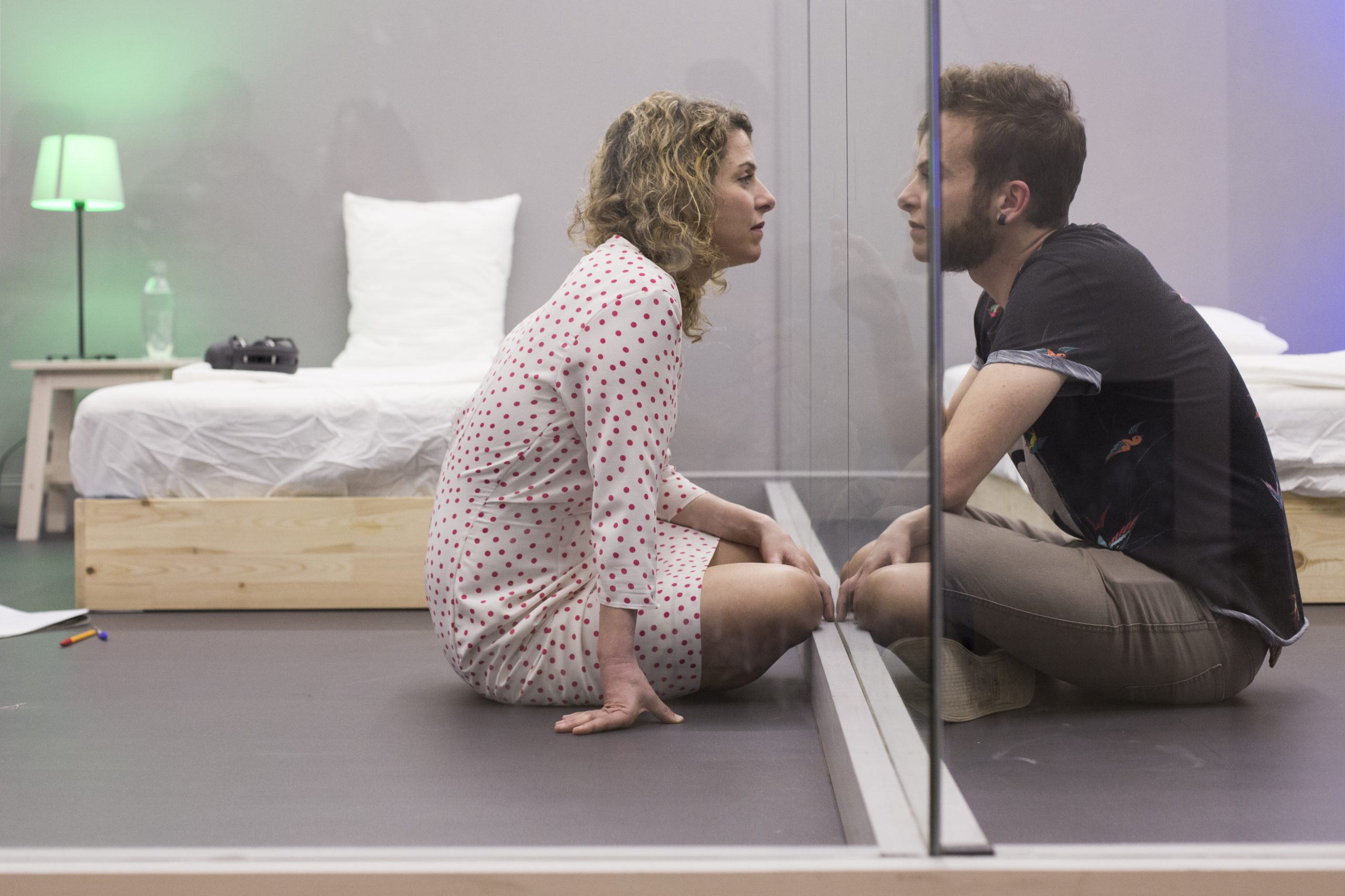
Yota Argyropoulou | Natalia Tsoukala
One Person at a Time, 2016
Commissioned and produced originally by NEON + Marina Abramović Institute, on the occasion of AS ONE,
Benaki Museum, Athens, 10 Mar-24 Apr 2016.
Photography by Natalia Tsoukala.
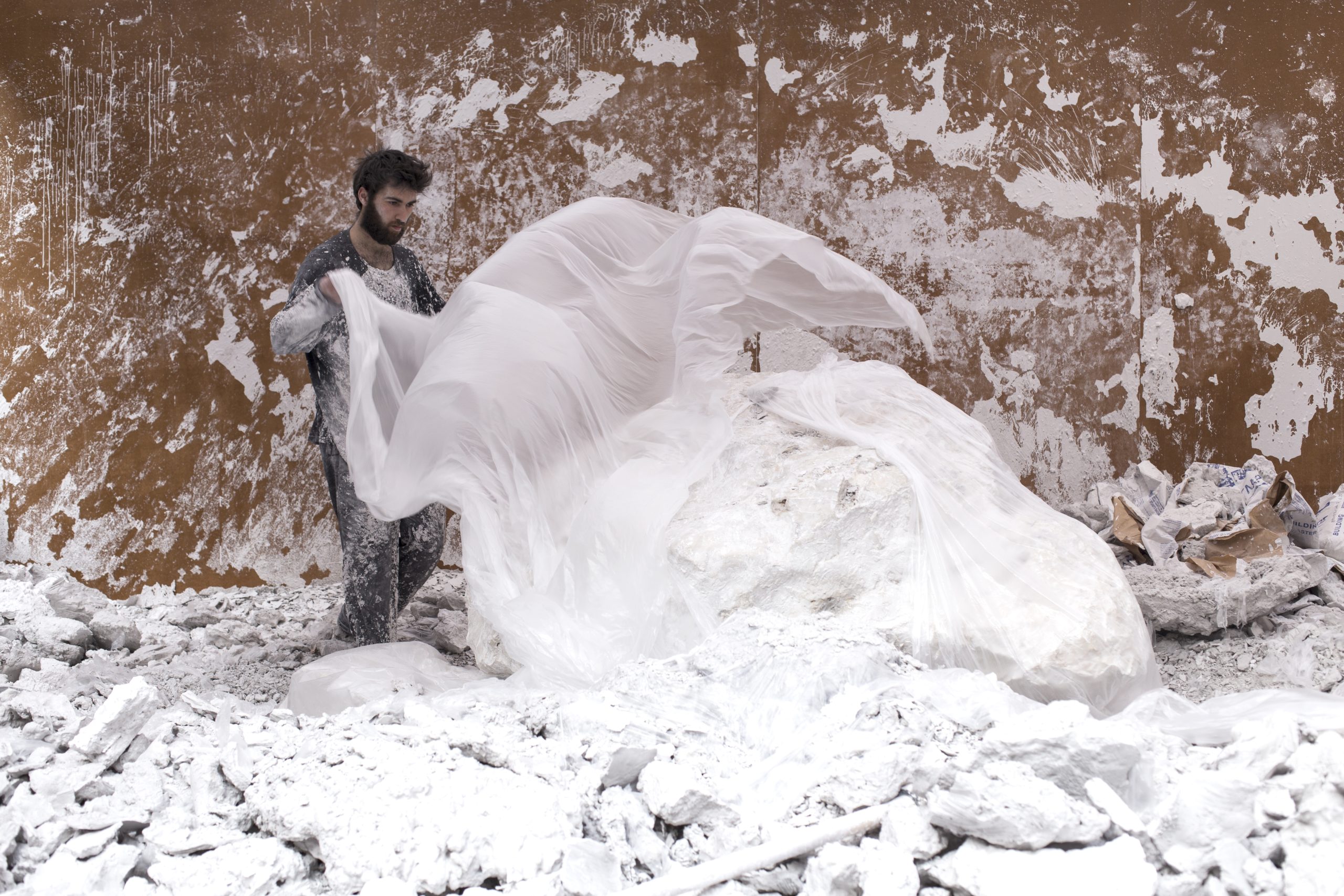
Thodoris Trampas | Natalia Tsoukala
Pangaia, 2016
Commissioned and produced originally by NEON + Marina Abramović Institute, on the occasion of AS ONE,
Benaki Museum, Athens, 10 Mar-24 Apr 2016.
Photography by Natalia Tsoukala.
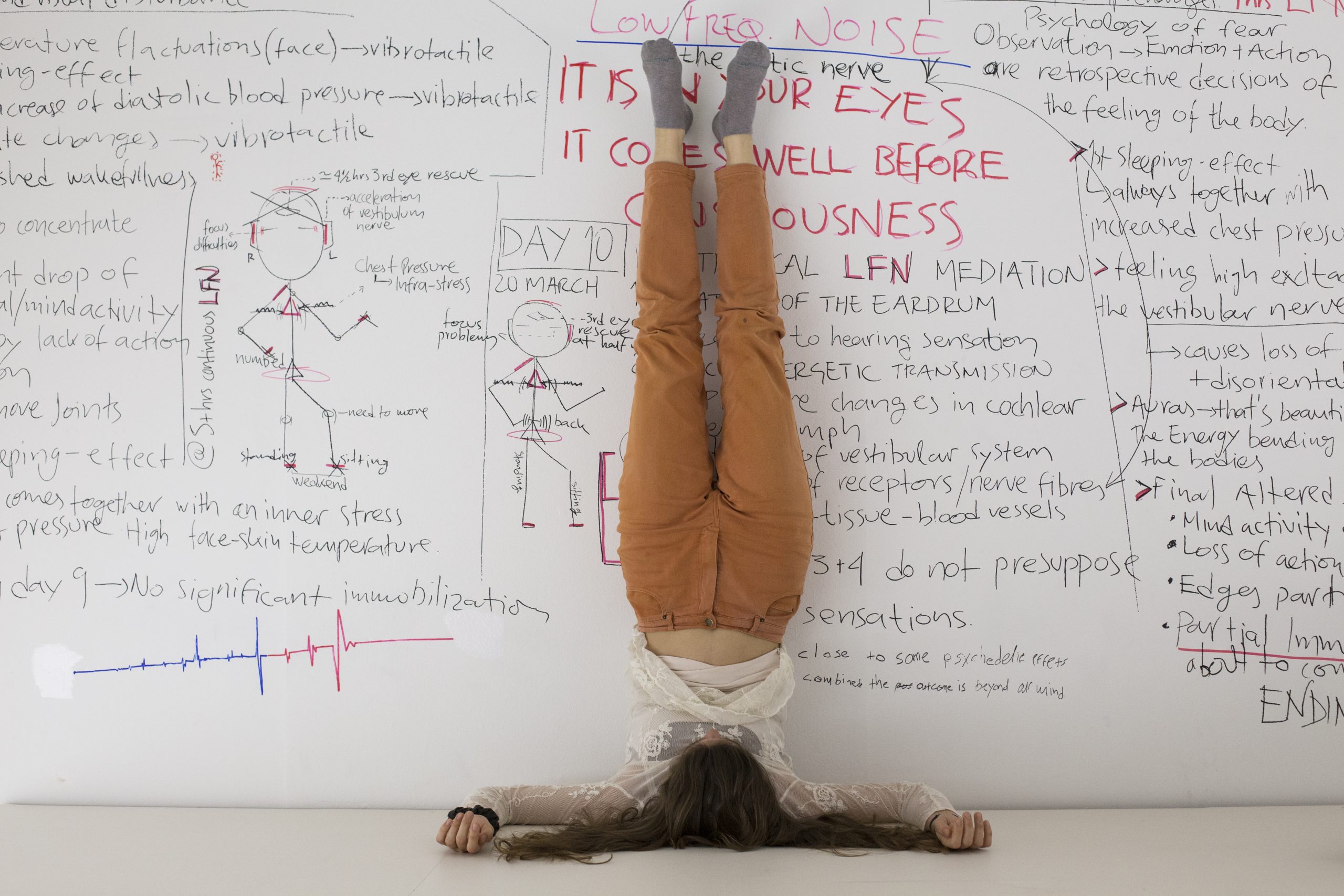
Lambros Pigounis | Natalia Tsoukala
Micropolitics of Noise, 2016
Commissioned and produced originally by NEON + Marina Abramović Institute, on the occasion of AS ONE,
Benaki Museum, Athens, 10 Mar-24 Apr 2016.
Photography by Natalia Tsoukala.
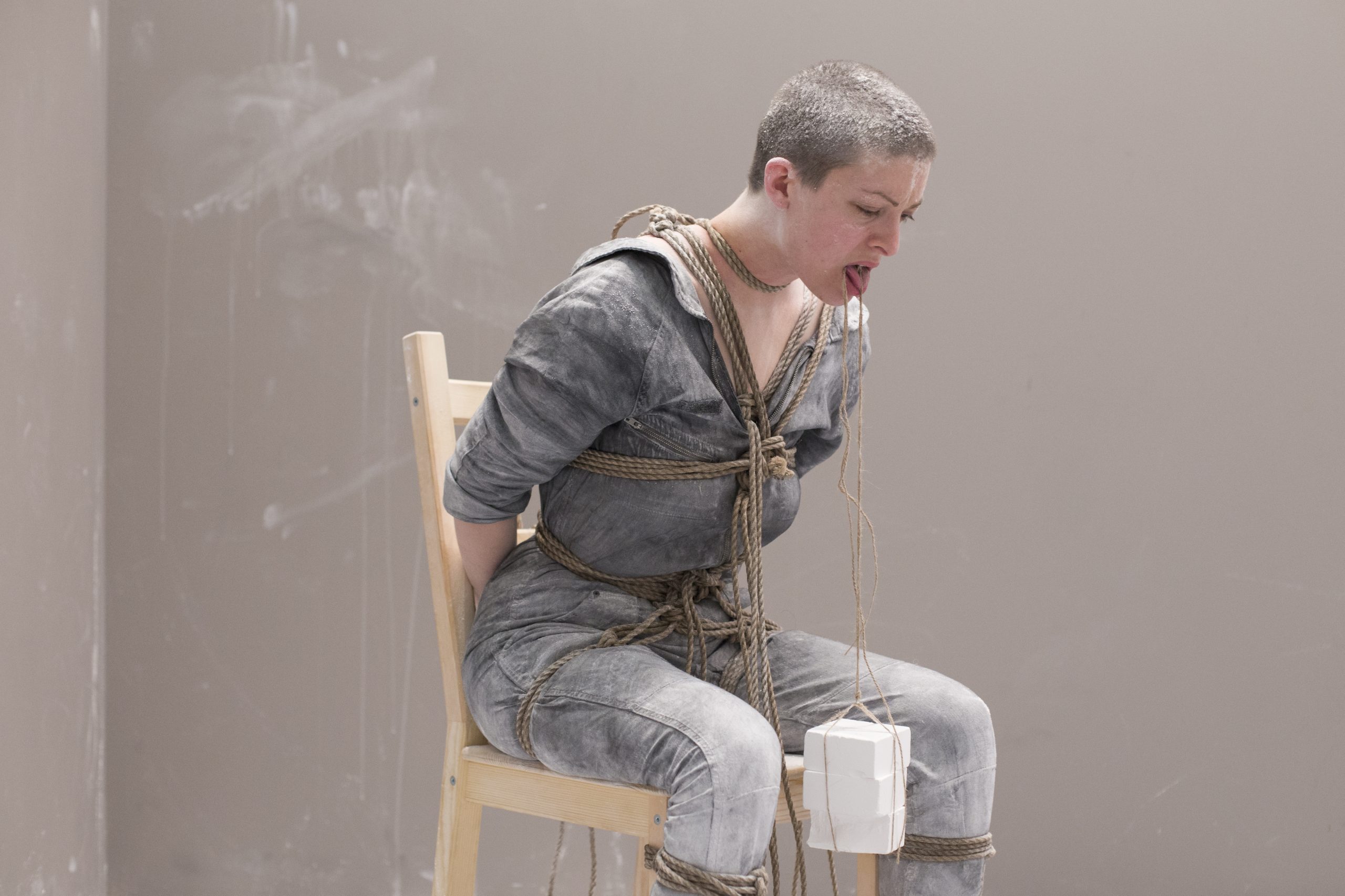
Despina Zacharopoulou | Natalia Tsoukala
Corner Time, 2016
Commissioned and produced originally by NEON + Abramović Institute, on the occasion of AS ONE,
Benaki Museum, Athens, 10 Mar-24 Apr 2016.
Photography by Natalia Tsoukala.
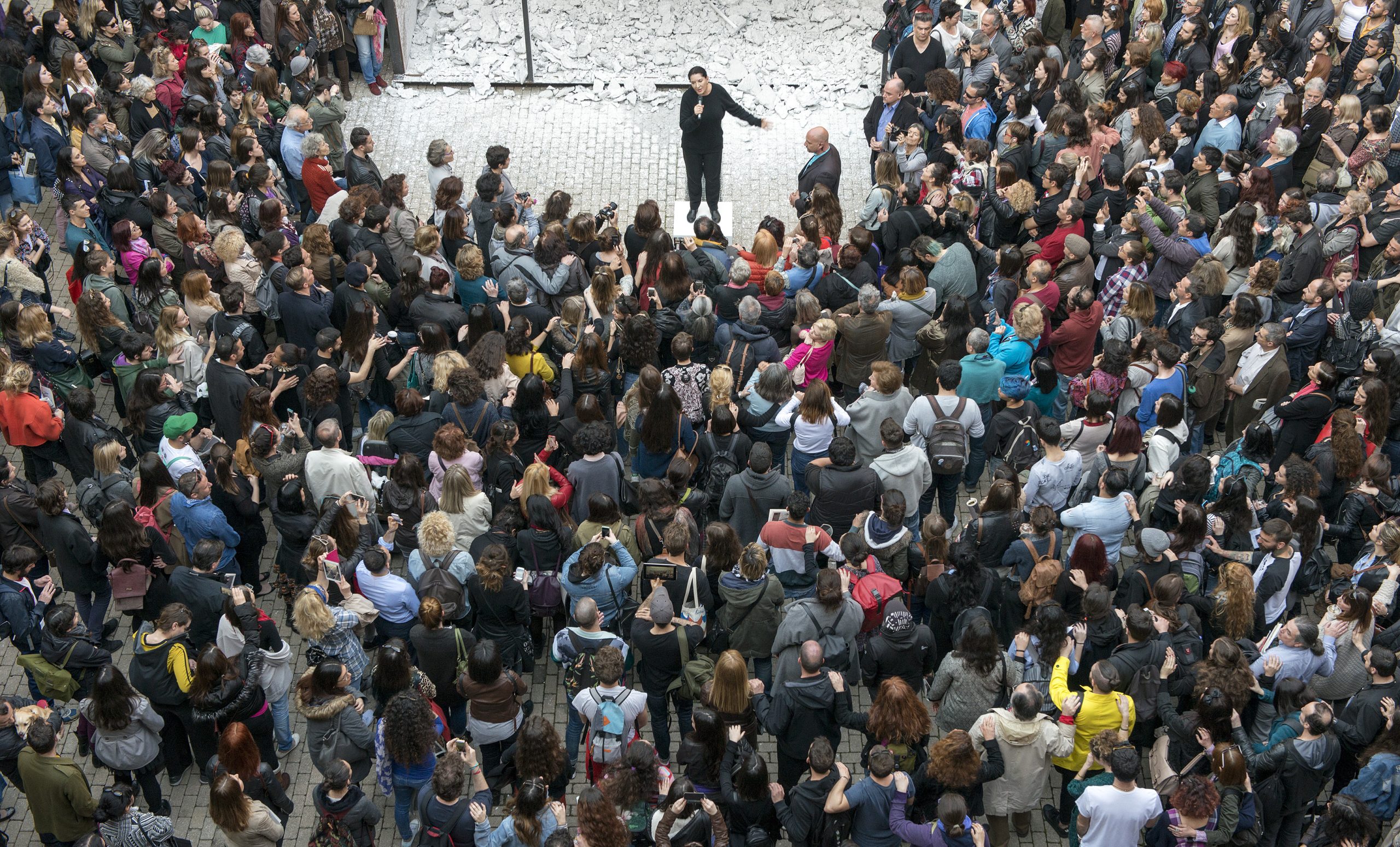
Panos Kokkinias
Communal Moment, 2016
Commissioned and produced originally by NEON + Marina Abramović Institute, on the occasion of AS ONE,
Benaki Museum, Athens, 10 Mar-24 Apr 2016.
Photography by Panos Kokkinias.
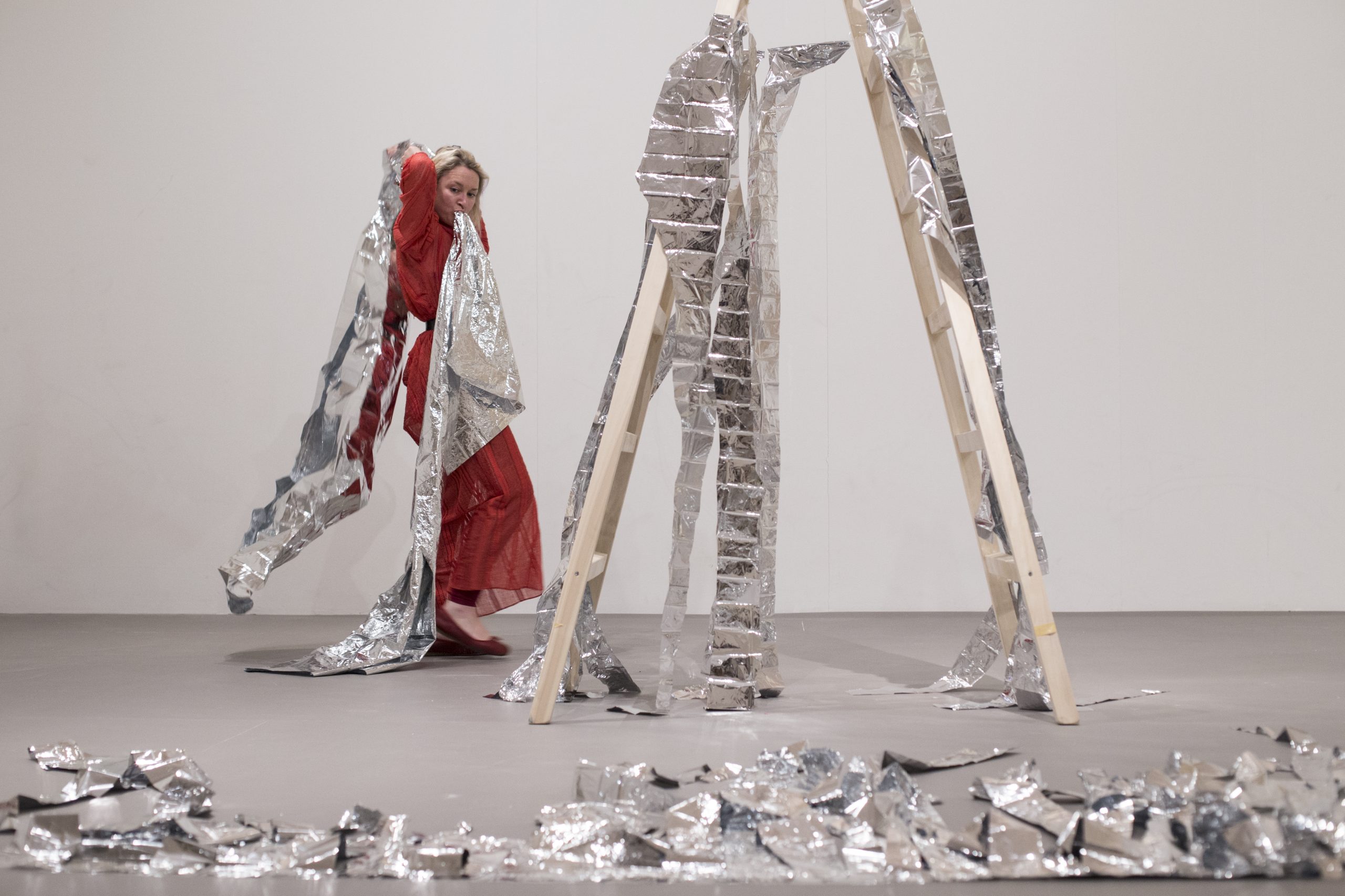
Amanda Coogan | Natalia ¬Tsoukala
You don’t push a river, 2016
Commissioned and produced originally by NEON + Marina Abramović Institute, on the occasion of AS ONE,
Benaki Museum, Athens, 10 Mar-24 Apr 2016.
Photography by Natalia Tsoukala.
Essays
After Russia
After Russia1
Are not dreams in some manner already fictive? Or does the word ‘fictive’ together with ‘dreams’ refocus our attention on the work of art, be it art, poetry, novel or film. Nevertheless, these forms are not involuntary nor the direct result of the unconscious as of dreams. Rather, they are conscious, deliberate acts of creation, the makings of the imagination. This is their great value precisely because they can draw upon history, events, life as much as the imagination. As such, the significance of these artistic forms is to be found in their capacity to create a space for hope, desire and belief. They are the stuff of dreams.
The films of Andrei Tarkovsky did just that. Apart from a small handful of documentaries and books, Tarkovsky made seven feature films before he died at the age of 54 in 1986. His films were Ivan’s Childhood (1962), Andrei Rublev (1966), Solaris (1972), The Mirror (1975), Stalker (1979), Nostalghia (1983) and The Sacrifice (1986). Individually these films are each quite extraordinary. And together, these films, in different ways, explore the concept of ‘fictive dreams.’ They are often times based on true historical events or on novels, shaped in the form of allegories or parables that each are a measure of and reflect on the exigencies of life. Speaking about Andrei Tarkovsky, the film director Ingmar Bergman once reflected:
When film is not a document, it is a dream. That is why Tarkovsky is the greatest of them all. He moves with such naturalness in the room of dreams.
And, Tarkovsky himself wrote in his book Sculpting in Time that:
Faced with the necessity of shooting dreams, we had to decide how to come close to the particular poetry of the dream, how to express it, what means to use…All this material found its way it’s the film straight from life, not through the medium of continuous visual arts.2
Tarkovsky’s films were often categorised as ‘Science Fiction,’ a genre in which fictive imaginings spin off the real. This fictive real suggests a parallel world, a future time or alien presence. Traditionally, this genre, especially in Russia, served as a critique of society, of totalitarian governments and lack of free will, a dystopia in short. We can well remember the novels of Yevgeny Zamyatin (amongst others) we published and banned in the early period of the Soviet Union. Tarkovsky’s films are not based simply on an imagined future. Rather, they weave historical memory and an imagined past, a past out of which the real can be shaped and understood.
Tarkovsky’s first film Ivan’s Childhood (1962) tells the story of 12-year-old orphan boy Ivan and his experiences working for the Soviet army as a scout behind the German lines during World War Two. However, it was his second film Andrei Rublev (1966) that begins to explore more extensively what we are calling the world of the fictive real. Presented3 as a tableau of seven sections in black and white, the film depicts medieval Russia during the first quarter of the 15th century, a period of Mongol-Tartar invasion and growing Christian influence. Commissioned to paint the interior of the Vladimir cathedral, Andrei Rublev leaves the Andronnikov monastery with an entourage of monks and assistants, witnessing in his travels the degradations of his fellow Russians, including pillage, oppression, torture, rape and plague. Faced with the brutalities of the world outside the religious enclave, Rublev’s faith is shaken, prompting him to question the uses or even possibility of art in a degraded world. After Mongols sacked the city of Vladimir, burning the very cathedral that he has been commissioned to paint, Rublev takes a vow of silence and withdraws completely, removing himself to the hermetic confines of the monastery.
The film’s final section concerns a boy named Boriska who convinces a group of travelling bell-makers that his father passed on to him the secret of bell-making. The men take Boriska along, and are quickly enthralled by the boy’s ambition, determination, and confidence that he alone knows how to build the perfect bell. Boriska is soon commanding an army of assistants and peasant workers. Rublev appears; at first standoffish and mistrustful of the boy, he finds himself drawn to Boriska’s courage and unselfconscious desire to create. Moved to put aside his vow of silence, Rublev serves finally as the boy’s confessor, and he finds that, through Boriska, his faith, and art, have been renewed.
The film ends with a montage of Rublev’s painted icons in colour.
It was not until some six years later that he was able to release his third feature film Solaris (1972). The work goes beyond the boundaries of the historical real, uncovering a fictive world whose characters are filled with hope and disenchantment.
Co-written and directed by Tarkovsky, the film was an adaptation of the Polish author Stanislaw Lem’s novel Solaris (1961). Both the novel and film are largely set aboard a space station orbiting a fictional planet ‘Solaris.’ The scientific mission has stalled because the crew of three scientists have each fallen into an emotional crisis. A psychologist is flown out to the space station to evaluate the situation, but finds himself experiencing also the same mysterious phenomena as the crew.4 The planet Solaris is trying to make contact with the crew by reaching into their subconscious and creating living replicas of whatever it finds locked in there. A replica of the psychologist’s wife, who committed suicide years before, appears to him on board the space station and they embark on an intense affair. The replica is an embodiment of his lost love and the residual guilty memory he has of her. Romantic fulfilment becomes an ‘an impossible ideal buried in the past.’
Following Solaris, Tarkovsky made The Mirror (1975), a non-narrative, stream of consciousness, autobiographical film-poem that blends scenes of childhood memory with newsreel footage and contemporary scenes examining the narrator’s relationships with his mother, his ex-wife and his son. The oneiric intensity of the childhood scenes in particular are visually stunning, rhythmically captivating, almost hypnotic.5 Tarkovsky weaves together scenes of nature and mundane everyday life with archival footage of events that have occurred within the narrator’s lifetime, notably The Spanish Civil War, the Sino-German conflict during World War Two and the Atomic Bomb. These two sets of images contrast with one another.
In 1979, Tarkovsky finished Stalker, another adaptation this time from Boris and Arkady Strugatsky’s novel Roadside Picnic. Stalker is far more pessimistic than his previous films. The film follows a Writer and a Scientist, who are guided by a man called the ‘Stalker,’ on a journey through a mysterious wasteland referred to as the “Zone.” The people are exhausted and as worn down as their surroundings. Although the Zone is off-limits to civilians, illegal guides known as ‘Stalkers’ make their living by guiding customers through the Zone to the ‘room.’
The three protagonists have left the confines of a grim, rotting Eastern European city. They walk through a charming-looking rural setting.6 The Zone is lush and green, an organic profusion of growth and chaos which creates a stark contrast to the decaying rigidity of the city. Their goal being to travel to the ‘room,’ at the centre of the Zone, where their innermost desires, wishes and dreams may be fulfilled. To enter the ‘room’ is to be granted one’s deepest unconscious wish.
After much soul-searching, they fail in their quest through a lack of willpower. None of the three men dare enter the ‘room’ and the ‘Stalker’ returns to his distraught wife and daughter, who has been born crippled probably due to her father’s constant exposure to the atmosphere of the ‘Zone.’
The arguments among these men slowly close in around the Stalker’s central concerns: the relationship between hope and reality, the vagaries of human intentions and need for mystery. The Professor seems intent on measuring the forces at work within the Zone. He is, the Writer claims, “putting miracles to an algebra test.” Even the seemingly supernatural granting of wishes, the Professor believes, will leave some physical trace, something which can be measured (or annihilated).7 A disappointed idealist, the Writer expects little good to come of hope. As Nietzsche wrote “Hope: in reality it is the worst of all evils, because it prolongs the torments of Man” (Human All Too Human).
The film was shot near Tallinn. Vladimir Sharun, the film’s sound designer notes:
We were shooting near Tallinn in the area around the small river Piliteh with a half-functioning hydroelectric station. Up the river was a chemical plant and it poured out poisonous liquids downstream. There is even this shot in Stalker: snow falling in the summer and white foam floating down the river. In fact, it was some horrible poison. Many women in our crew got allergic reactions on their faces. Tarkovsky died from cancer of the right bronchial tube. And Tolya Solonitsyn too. That it was all connected to the location shooting for Stalker became clear to me when Larissa Tarkovskaya died from the same illness in Paris...8
Six years after the completion of the film the fourth energy block in Chernobyl exploded and the 30-kilometre Zone became a reality.

Andrei Tarkovsky.
In Nostalghia (1983) an exiled poet Andrei Gortchakov (Oleg Yankovsky), travels to Italy to research the life of 18th-century Russian composer Pavel Sosnovsky, who lived there and, despite achieving international recognition away from his homeland, eschewed fame and returned to the humble life of a serf, only to sink further into despair and commit suicide. Andrei and his interpreter Eugenia (Domiziana Giordano) have travelled to a convent in the Tuscan countryside, to look at frescoes by Piero della Francesca. Andrei decides at the last minute that he does not want to enter the convent.9
Their visit to the therapeutic hot springs pool of St. Catherine in Bagno Vignoni proves to be the catalyst that spurs Andrei into action. Historically, the hot springs were constructed to alleviate the suffering of the ill. Furthermore, St. Catherine of Siena, after whom the pool was named, was an advocate for the reunification of the Eastern (Orthodox) Church and the Western (Roman Papal) Church during the Great Schism of the Ecumenical Church. Figuratively, Andrei too, is a supplicant to the pool of St. Catherine seeking to heal the sickness within his divided soul. In essence, Andrei’s uneventful biographic research trip has developed into a personal pilgrimage to find his own personal unity.
Eugenia attempts to engage him in a conversation over Arseny Tarkovsky’s (Tarkovsky’s father) poetry but Andrei dismisses his father’s work, reasoning that the simple act of translation loses the nuances of the native language. Eugenia then argues, “How can we get to know each other?” He replies, “By abolishing frontiers between states.” Eugenia is attracted to Andrei and is offended that he will not sleep with her. Andrei feels displaced and longs to go back to Russia. He is haunted by memories of his wife waiting for him. Instilled with a pervasive sense of melancholy, Andrei becomes profoundly alienated from his beautiful companion, his family, his country, and even himself.
And yet, during this visit, Andrei becomes intrigued by the presence of an eccentric old man named Domenico (Erland Josephson), who once imprisoned his family for seven years in an apocalyptic delusion. After asking Eugenia to translate some of the descriptive words used by the villagers to characterise the inscrutable Domenico, Andrei rationalises, “He’s not mad. He has faith,” and asks Eugenia to act as an intermediary. Unable to convince Domenico to grant an interview to Andrei, Eugenia leaves in frustration.
Domenico ultimately accepts the company of the attentive Andrei, and invites him to the abandoned house where he had kept his family in captivity, and who were freed by the local police after seven years. Domenico reflects on the folly of his actions as a desperate and selfish attempt to spare his family from a self-destructive and dying world. He implores Andrei to perform a seemingly innocuous task, to cross the pool of St. Catherine with a lighted candle. This is part of a greater redemptive design, Domenico claiming that when it is finally achieved, he will save the world. Andrei is reluctant to undertake Domenico’s illogical request. Yet he is intrigued and cannot refuse him.
Andrei immerses himself in the solitude of his memories and vague conversations with Domenico. Separated from his family, far from his homeland, and now alone, Andrei slips further into a state of profound isolation and unrequited longing, his own spiritual nostalghia. The two men both share a feeling of alienation from their surroundings.
During a dream-like sequence, Andrei sees himself as Domenico and has visions of his wife, Eugenia and the Madonna as being all one and the same. Andrei thinks of cutting short his research to leave for Russia. But, he gets a call from Eugenia, who wishes to say goodbye. She tells him that she has met Domenico in Rome by chance who had asked if Andrei has walked across the pool as he promised. Andrei says he has, although it is not in fact true. Later, Domenico delivers a speech in the city about the need of mankind of being true brothers and sisters and to return to a simpler way of life. Finally, against the fourth movement of Beethoven’s Ninth symphony playing in the background, Domenico immolates himself.10 The artist and the madman understand each other because they are part of the same person. Andrei, after learning from Domenico about the supposedly spiritually fulfilling task of walking a lit candle across a hot mineral pool. Andrei returns to the mineral pool to fulfil his promise, only to find that the pool has been drained. Nevertheless, he enters the empty pool and repeatedly attempts to walk from one end to the other without letting the candle extinguish. These attempts take in real time over nearly 10 minutes. As he finally achieves his goal, he collapses.11
The powerful last and long shot shows Andrei in the foreground of an ethereal coexistence between the two worlds, as the Russian farmhouse becomes encapsulated within the arching walls of a Roman cathedral. It is both an idealised and an ominous closure, as the muted colours of the Russian landscape now suffuse the Italian streets — a tenuous reunification of the spiritual schism within Andrei’s soul.
It is through long durational scenarios that Tarkovsky manages to elucidate something resembling spirituality. An allegory, Tarkovsky presents the two disparate worlds — the spare, monochromatic landscape of the Russian countryside and the lush, idyllic meadows of rural Italy — that collide within the soul of the Russian author, Andrei. Through the melancholic Andrei, Tarkovsky attempts to reconcile his own feelings of emotional abandonment, loss of cultural identity, alienation, and artistic need.
The abolition of frontiers is a subject explored in Tarkovsky’s earlier films, Solaris (1972) and Stalker (1979). However, while the principal figures in both films coexist in a metaphysical realm between reality and the subconscious, Andrei in Nostalghia (1983) is profoundly aware of his physical separation from his beloved, his distant homeland and it is his innate longing to find unity within himself that unconsciously guides him. Ironically, his actions become antithetical to his own thoughts on the abolition of frontiers, as he creates artificial barriers to isolate himself from his physical reality.
In his book Sculpting in Time, Tarkovsky wrote that he wanted Nostalghia, his first film after leaving Russia to escape censorship, to be “about the particular state of mind which assails Russians who are far from their native land.” Tarkovsky’s personal struggle between love of country and creative freedom inevitably led to his defection to the West in 1983 with his wife, Larissa, leaving behind their son, Andriuschka, in the Soviet Union.
By the time Tarkovsky started work on his next and final film, The Sacrifice (1986), he knew he was seriously ill with cancer. A Swedish production, The Sacrifice is an allegory of self-sacrifice in which Alexander the principal figure, played by Erland Josephson again, gives up everything he holds dear to avert a nuclear catastrophe.
The film opens on the birthday of Alexander. He lives in a beautiful house on a remote island, with his actress wife Adelaide (Susan Fleetwood), stepdaughter Marta (Filippa Franzén), and young son, “Little Man,” who is temporarily mute due to a throat operation. Alexander and Little Man plant a tree by the seaside, when Alexander’s friend Otto, a part-time postman, delivers a birthday card to him. When Otto asks, Alexander mentions that his relationship with God is “nonexistent.” After Otto leaves, Adelaide and Victor, a medical doctor and close family friend, who performed Little Man’s operation, arrive at the scene and offer to take Alexander and Little Man home in Victor’s car. However, Alexander prefers to stay behind and talk to his son. In his monologue, Alexander first recounts how he and Adelaide found this lovely house near the sea by accident, and how they fell in love with the house and surroundings, but then enters a bitter tirade against the state of modern man.12
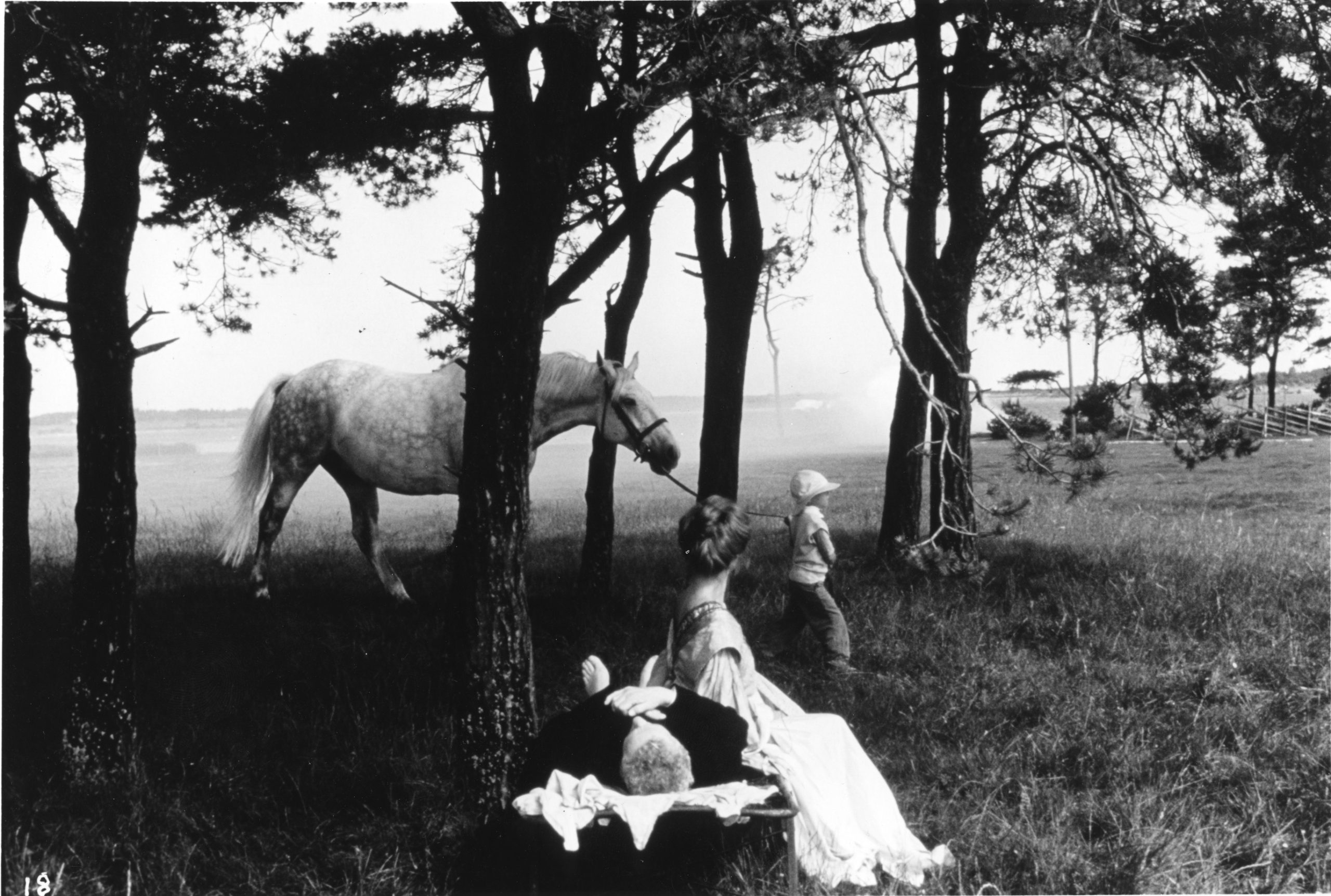
Still from film The Sacrifice (1986) by Andrei Tarkovsky
The family, as well as Victor and Otto, have gathered at Alexander’s house for the celebration. The family maid, Maria, leaves while the nursemaid, Julia, stays to help with the dinner. People comment on Maria’s odd appearances and behaviour. The guests chat inside the house, where Otto reveals that he is a student of paranormal phenomena, a collector of “inexplicable but true incidences.” Just when the dinner is almost ready, the rumbling noise of low-flying jet fighters interrupts them, and soon after, a news programme announces the beginning of what appears to be war and threat of nuclear disaster. In despair, Alexander vows to God to sacrifice all he loves, even their Little Man, to avert disaster of nuclear warfare.
Otto advises him to slip away and be with Maria, whom Otto convinces him is a benign witch. Alexander takes his gun, leaves a note in his room, escapes the house, and rides his bike to where Maria is staying. She is bewildered when he makes his advances, but when he puts his gun to his temple, at which point the jet fighters’ rumblings return, she soothes him and they make love. When he awakes the next morning, in his own bed, everything seems normal. Having followed the doctor’s instructions, the threat seemingly past, Alexander then sets about destroying all traces of his former life, thus fulfilling his private vow. After members of his family and friends leaves for a walk, Alexander, who had stayed back, sets fire to the house. As the group rush back, alarmed by the fire, Alexander confesses that he set the fire himself. Maria appears and Alexander tries to approach her, but is restrained by others. Without explanation, an ambulance appears in the area and two paramedics chase Alexander, who appears to have lost control of himself. Maria begins to bicycle away, but stops halfway to observe Little Man watering the tree he and Alexander planted the day before. As Maria leaves the scene, Little Man, lying at the foot of the tree, speaks his only line, quoting the opening line of the Gospel of St.John “ ‘In the beginning was the Word’… Why is that, Papa?”13 Is he a saint whose sacrifice rescued humanity, we are invited to ask, or is he a madman caught up in messianic delusions?
As with all of Tarkovsky’s films, reality is caught in a state of flux between present/past, memory/perception, reality/fantasy, dream-time/real·time. For Tarkovsky, this movement between inner and outer states is more significant than the abstract rationalism and science for understanding reality. It is captured by the duration of long takes and, as the philosopher Henri Bergson proposed, the understanding of reality through immediate experience and intuition rather than rationalism and science. Moreover, this sensation of time, is not only achieved by the duration of the shots or camera movement, but by the entire mise-en-sc ène. All that is seen and heard within the frame is woven together to complement and augment the rhythm of the scene or shot and establish the temporal flow of the film.
There is a persistent sense in Tarkovsky’s work of an ineffable spirituality within the constant presence of nature, of an ineffable spirituality and the spirit of a fictional real that haunts the present, which are constantly threatening to disappear in today’s world.
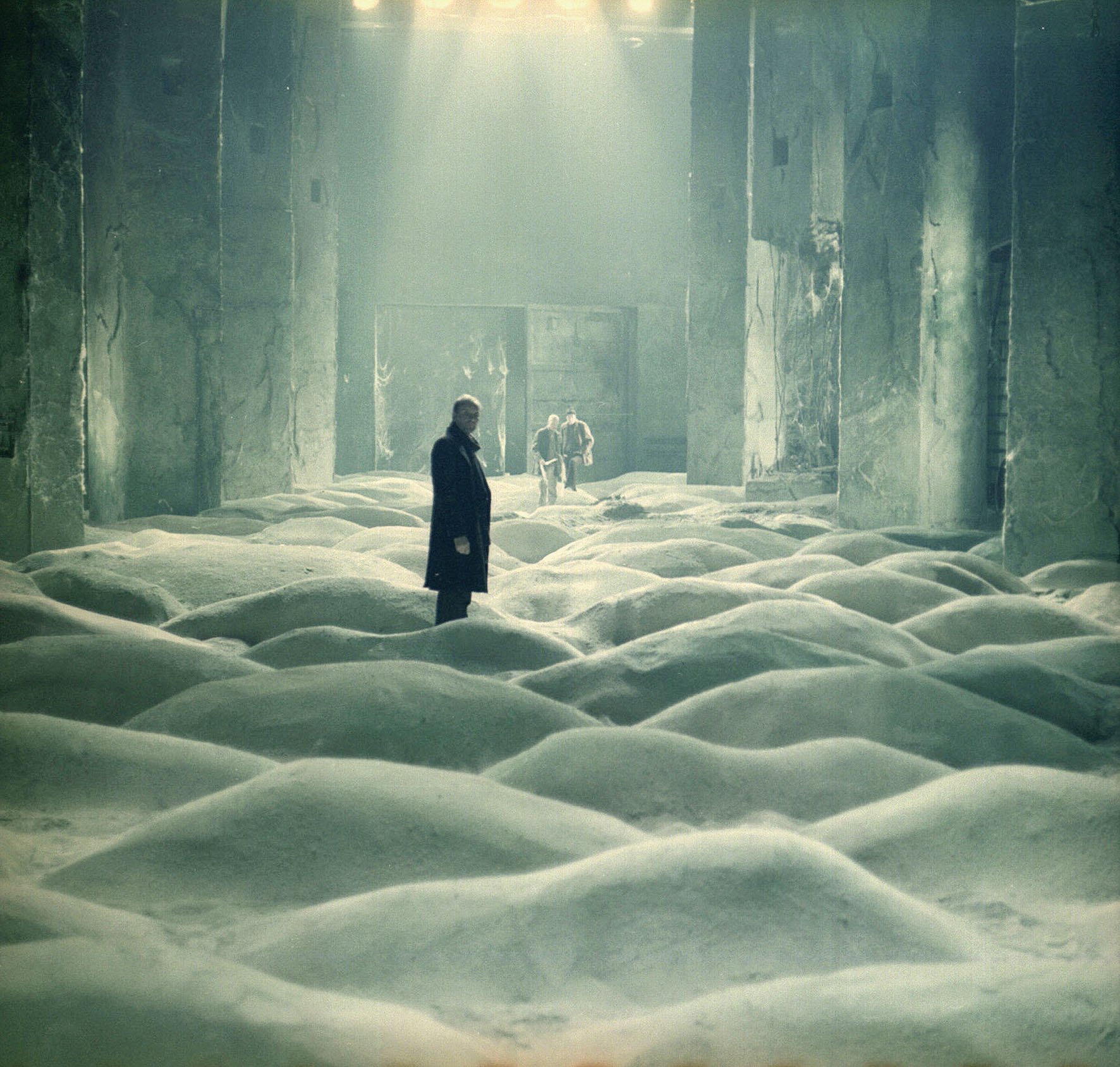
Still from film Stalker (1979) by Andrei Tarkovsky
Footnotes
1 This is in memory of my Russian mother who left her homeland. I want to thank my dear friend Milenko Prvački for his friendship and support. I wish to thank also all the authors I have inadvertently cited or drawn upon, inspired to try to come to terms with the work of this extraordinary filmmaker.
2 Andrei Tarkovsky, Sculpting in Time, trans. Kitty Hunter-Blair (Austin: University of Texas Press, 1989).
3 The following summary of the film is drawn from Andrei Rublev (1965), by P.G. R Nair, http://www.boloji.com.
4 See Solaris (1972 film) in Wikipedia.
5 See The Mirror (1975 film) in Wikipedia.
6 ibid.
7 See Stalker (1979 film), op.cit. Wikipedia.
8 Cited in Stas Tyrkin, “In Stalker Tarkovsky foretold Chernobyl,” Komsomolskaya Pravda, 23 March 2001.
9 See both Kalvin Henely review in Slant, 13 May 2013, and Wikipedia.
10 ibid.
11 ibid.
12 See Sacrifice (1986 film) in Wikipedia.
13 ibid.
Image source
https://mubi.com/lists/films-admired-by-tarkovsky#read-more
http://thecinemaofeasterneurope.blogspot.sg/2013/02/solaris-1972-andrei-tarkovsky-vs.html
http://weirdfictionreview.com/2013/07/in-the-zone-an-excursion-into-andrei-tarkovskys-film-stalker/
Andrei Tarkovsky. Festival de Cine Africano de Córdoba (http://www.flickr.com/photos/mcatarifa/8033226904/) [CC BY-SA 2.0 (http://creativecommons.org/licenses/by-sa/2.0)], via Wikimedia Commons
Essays
…Morpheus, a master craftsman and simulator of human forms.
No one else is as clever at expressing the movement,
the features, and the sound of speech.
Ovid 1
All poetic art and poeticising
Is nothing but interpreting true dreams.
Hans Sachs 2
The German Origin
In his Three Books Of Occult Philosophy (1533), German polymath Heinrich Cornelius Agrippa defines magic as “the most perfect and chief science, that sacred, and sublime kind of philosophy [….] For seeing that all regulative philosophy is divided into natural, mathematical, and theological.”3 Knowledge canon surrounding Northern Renaissance was founded by a tensional juxtaposition between the surviving medieval esotericism and the upcoming humanism and naturalism channeled by Italian Renaissance. Furthermore, no other cultural scenario in Western history produced an iconography of alchemy as abundant as Northern Renaissance. The alchemist, in his crossroad between nature and metaphysics, will be represented surrounded by equal amounts of books and instruments for chemistry practice.4 The alchemist personifies a more extended aim to disclose transcendental mysteries by means of science.
It should not surprise that after such an influential backdrop, modern notion of ‘magic realism’ for literature and art would originate within a Germanic scholarly tradition, where an articulation between the uncanny and the empirical world has prevailed. In 1925, German art critic Franz Roh coined the term magischer realismus in his book After Expressionism: Magical Realism: Problems of the Newest European Painting. Roh’s notion of magic realism was associated with the return to realism by post-expressionist German painters such as George Grosz, Otto Dix, Christian Schad and Max Beckmann.5 The purpose was to address the spirit of the “objective world” in an epoch marked by the aftermath of the industrial revolution.6 Roh wrote: “with the word ‘magic’ as opposed to ‘mystic,’ I wished to indicate that the mystery does not descend to the represented world, but rather hides and palpitates behind it.”7 This kind of “animism” of the modern world opened a new aesthetic territory founded in the apparent antithetical pair of the “magical” and the “real”, within the understanding of art as the construction of alternative realities.
A representative case for Roh’s notion of magic realism is a series of artworks George Grosz made in 1920 in which the main characters – depicted as a sort of cyborgs or mannequins – inhabit silent, geometrically sketched cityscapes. The mixed-media piece Daum marries her pedantic automaton George in May 1920, John Heartfield is very glad of it shows extreme contrast of attitudes between the two characters, highlighted by styles and techniques.8 Grosz’s wife Eva Peter (nicknamed by her husband as Maud, the anagram of “Daum”) is portrayed in a sensual attire and pose, with softened forms expressed in dynamic ink and watercolour. Conversely, Grosz depicts himself as a cold and mechanical figure made up of a puzzle of collaged magazine paper cuts with references to early 20th century industrial world. Daum and George are sited in a hollow, sterile, Giorgio-de-Chirico-fashioned metaphysical urban environment.
It is precisely Grosz’s metaphysical enquiry on reality based on ideal-analytical models what makes this series an illustration of Roh’s interest about the eerie or magic essence concealed under the facade of a mathematically objective realism. Such objectivist aesthetics made Grosz part of society’s obsession with machinery that characterised the German branch of Dadaist movement he has been associated with, in the period between the world wars. The apparent incommensurability of the paradigmatic dualism portrayed at the marriage between the sensual and vitalist Daum and the rational and mechanist George points to two opposite forms of excess in 1920s German society: sexual decadence (a leitmotif in Grosz’s art) and techno-militarism.
The ‘automaton’ George repeats the visual pattern of other German Dadaist icons such as Raoul Hausmann’s (in the same year, 1920) equally impassive assemblage entitled This triMechanical Head (Spirit of Our Age).9 Both characters bear instruments related to precision and quantification. Noticeably, they both wear ‘rulers’ glued to their foreheads. Such ‘rulers’ suggest the measurable quality of the intellectual or operational capacity of those mechanical totems. Today, in the same fashion, the capacities (HD data, RAM, and weight) becomes the forerunning value of electronic media. In contrast to such mathematical equations of ratio, the all-too-human Daum, misplaced in such a clinical space, recalls Francis Bacon’s poignant figures melting down in the midst of solid, neutral and aseptic confinements.
Daum and George wed the two opposite and complementary forms of alienation of interwar Germany: apocalypse and integration (recalling Umberto Eco); hedonism and pragmatism; hyper-sensuality and hyper-rationality. They also emblematise the two sides of a predicament addressed by German philosophy since Immanuel Kant’s Critique of Judgment (1790): the (dis)articulation between art and reality. Discussing the nature of “disinterest” of the aesthetic judgment regarding the reference (reality), Kant said:
Now, where the question is whether something is beautiful, we do not want to know, whether we, or any one else, are, or even could be, concerned in the real existence of the thing, but rather what estimate we form of it on mere contemplation (intuition or reflection). [….] One must not be in the least prepossessed in favour of the real existence of the thing, but must preserve complete indifference in this respect, in order to play the part of judge in matters of taste.10
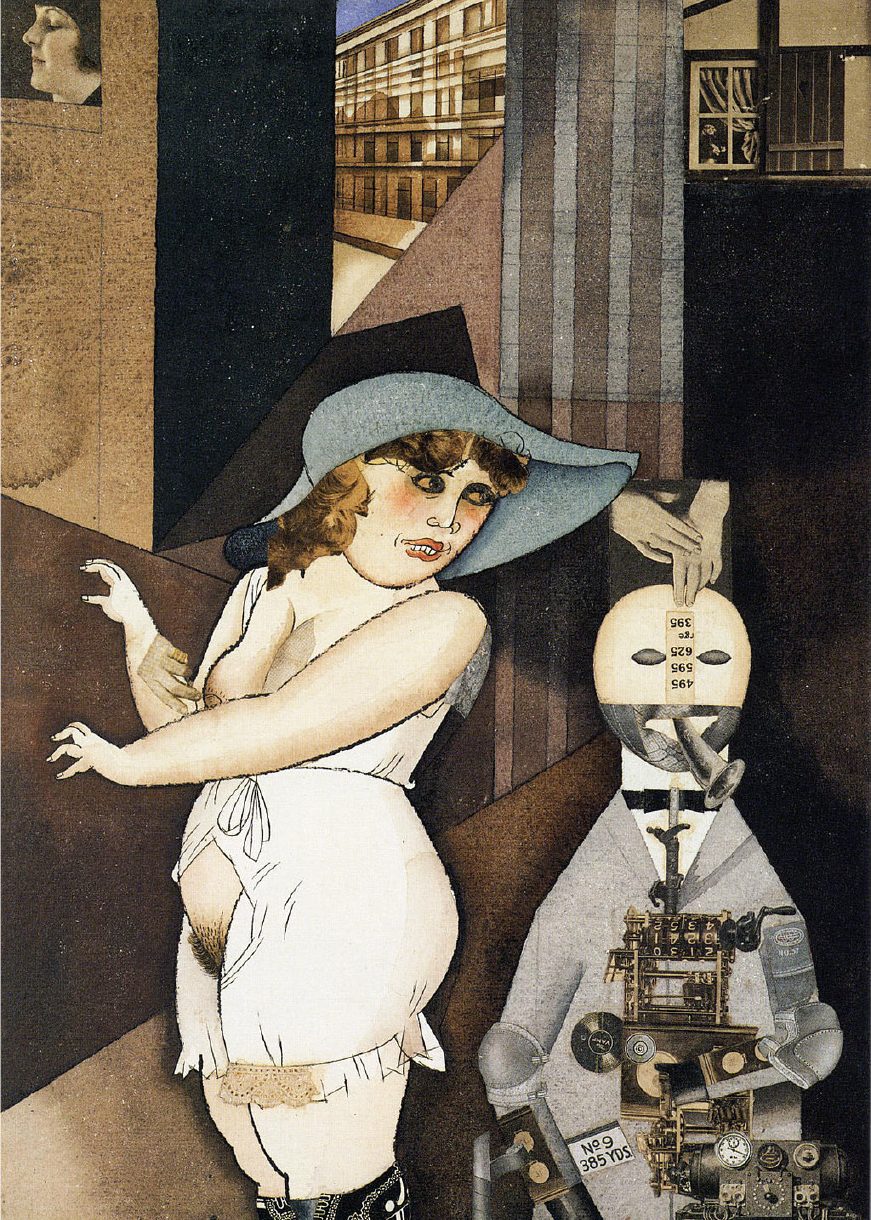
George Grosz
Daum marries her pedantic automaton George in May 1920, John Heartfield is very glad of it,
Watercolours over drawing pen, collage on card, 1920, Berlinische Galerie, Berlin
Kant contentiously announces that the aesthetical experience can only be fulfilled by renouncing reality as a reference for artistic measurement. Since then, the horizon between the “real existence of the thing” and the reflective realm of “mere contemplation” would become a conceptual battleground in view of modern and contemporary art.
These two dimensions would be subsequently addressed in Friedrich Nietzsche’s first book The Birth of Tragedy (1872) and in Martin Heidegger’s essay, The Origin of the Work of Art, drafted during the 1930s. Nietzsche would perceive the contemplative experience as a sort of dream allegorised by Apollo. He wrote:
In the same manner the Greeks expressed this joyful necessity of the dream experience in their Apollo. Apollo, as the god of all the plastic arts [….] he also rules over the beautiful appearance of the inner fantasy world. [….] But also that delicate line which the dream image may not cross so that it does not work its effect pathologically— otherwise the illusion would deceive us as crude reality—that line must not be absent from the image of Apollo, that boundary of moderation, that freedom from more ecstatic excitement, that fully wise calm of the god of images.11
The Dionysian world as such was the ‘pathology’ against which the German philosopher considers the boundary of the Apollonian “dream image.” Nietzsche related the artistic compulsion, or kunsttrieben, in the encounter between Apollo and Dionysus: brothers in arm-wrestling, light and wine, reason and ecstasy, poetics and “earthly delights.” Nietzschean aesthetics would become a currency in the 20th century’s intensive struggle with the (im)possibility of art to build a universe on its own.
Apollonian George and Dionysian Daum would continue their tensional and dialogical relationship as a form of heaven and earth. Heidegger argued that the work of art “sets up a world” and yet, it cannot mask its earthen materiality.12 Apollo (or George) aims to settle his own reality, his spiritual kingdom. And yet, he cannot do without the “down-to-earth” substance offered by Dionysus (or Daum). The work of art is spirit as it is also clay. It points upward and downward. It is ethereal and telluric. The work of art becomes a self-driven third dimension between heaven and earth.
Latin American and the Marvel Underground
Today, magic realism is no longer associated with Roh’s view nor with post-World War One German artistic apogee. The idea of a rational world that performs as imitation of dreams, a naturalisation of fantasy in the ordinary reality, found an especially fecund terrain in 20th century Latin American literature and art, due to certain historical and cultural conditions.
In the prologue to his novel The Kingdom of this World (1949), Cuban writer Alejo Carpentier elaborated on these conditions under his concomitant notion of “the marvelous real.” Basically, this notion consists of the localisation of magic realism in the historical circumstances of ethnical, cultural and mystical hybridity of America, which he considers “a chronicle of the marvellous in the real.”13 Some scholars like Maggie Ann Bowers consider both, this notion and this novel, as the origin of Latin American realismo mágico.14
The novel is a portrait of the social imaginary and popular beliefs surrounding the Haitian Revolution and its historical/mythical leader Henri Christophe, who was born slave and died as Henry I, King of Haïti. The title of The Kingdom of this World refers to the marvels of the earth by contrast with those assigned to the Kingdom of Heaven. It could be also interpreted with reference to the magical reality of a European-style African descendent monarchy in the New World, which in few years built dozens of palaces, châteaux and fortresses. That included the magnificent Palace of Sans-Souci, regarded as the Caribbean Versailles and the crown jewel of Haitian nobility.
Writers such as the Argentinian Jorge Luis Borges, the Guatemalan Miguel Ángel Asturias, the Colombian Gabriel García Marquez and the Chilean-American Isabel Allende would be identified with the notion of magic realism; along with a number of visual artists, mostly settled in Mexico, such as the Spanish Remedios Varos, the English Leonora Carrington and the Mexican Frida Kahlo.
These visual artists have been generally misplaced in the backseats of European surrealism. In his 1938 trip to Mexico, when André Breton enthusiastically declared this nation to be “the surrealist place par excellence” he was decontextualising Mexican ethnographic and cultural repertoire, as much as Picasso had previously done with African masks in the faces of Les Demoiselles d’Avignon.15 Latin American magic realism would have little of psychic automatism, in a context in which an umbrella and a sewing-machine may have plenty of reasons to settle a meeting on a dissecting-table.16 An oneiric reality in Latin American cultural history would be less associated with a Freudian informed idea of the unconscious, and more with a socio-historical context in which rationalism ‘shipped’ from European enlightenment have been syncretised with and corrupted by local (para)rational “flavours.”
Carpentier visited Haiti in 1943 and Breton went right after in 1944-45. Yet, they interpreted Haitian cultural and spiritual intricacies in very dissimilar ways. It was so, even though both were attentive to the same historical ingredients and influences, such as the ideology of the French Revolution mixed with domestically grown anti-slavery and anti-colonialism, French enlightenment blended with the “endarkenment” of voodoo, and the above-mentioned black aristocracy.
Carpentier’s defined “the marvelous real” in opposition to what he would perceive as two extreme positions: surrealism and the “return to the real.” As a part of the existing “codes of the fantastic,” Carpentier called surrealist practice a “timeworn formulae” of “cheap magic” “born of disbelief” by which “determined to invoke the marvelous at any cost, the miracle workers turn into bureaucrats.”17 For Carpentier, the difference between “the surreal” and “the marvelous real” is how fantasy roots in an intellectual operation or in a cultural history, respectively. He believes that the “true marvelous”:
…arises from an unexpected alteration of reality (a miracle), a privileged revelation of reality, an unaccustomed or singularly favourable illumination of the previously unremarked riches of reality, an amplification of the measures and categories of reality, perceived with peculiar intensity due to an exaltation of the spirit which elevates it to a kind of “limit state.”18
Against the idea of surrealism as a form of methodological madness, Carpentier claims that the flow of marvels of The Kingdom of this World developed from “the most rigorous documentation, [….]which conceals, beneath its apparent intemporality, a meticulous collation of dates and chronologies.”19
In the case of the visual arts, the paradoxical possibility of a “rational interpretation of the irrational” for most of what have been labelled under “Latin American surrealism” appears remarkably obvious. Tracing the visual narrative of artists such as Remedios Varo, one realises that her dreamlike ambiances convey fully readable inner logics, leaving no room for the deliberate senselessness of surrealism. After her active involvement with the surrealist circle in Paris, Varo left for Mexico in 1941 and there, her art, evolved into a personal cosmogony. Her paintings appear to unfold as a series of analytical chapters that Mexican writer Octavio Paz called “machinery of fantasy.”20
A close observation of her painting Harmony (1956), for instance, may produce a hermeneutic situation not so dissimilar from the one demanded by a heavily symbolic artistic forms of the Northern Renaissance. This painting shows one of her typical modern gothic interiors in which an androgynous character is occupied in trying to communicate with an other worldly dimension.21 Mexican art historian Luis-Martin Lozano interprets this painting as follows:
Armonía (Harmony) was conceived as a suggestive self-portrait in which Varo assumes the function of keeper of the universe. She communicates with the beyond by means of a musical stuff. With magic crystals and quartz stones, Varo rediscovers – like a Helmes Trismegisto, keeper of universal wisdom – consonance in a dual world.22
In this case, a composer creates a piece of music by stringing real objects together, using the lines of a three-dimensional treble clef musical staff . The objects fall into three categories: vegetation (flowers, leaves, crops…); paper scraps with mathematic notations; and three-dimensional geometric shapes. Music is made out of harmonising nature and science, the empirical and the metaphysical. The lines of the musical staff become the subtle connecting strings, the living vessels between the two dimensions.
Harmony may recall what has been considered the most studied print in Western Art History: the equally symbolically overcharged Albrecht Dürer’s Melencolia I (1514). This print features a winged figure who, absorbed in contemplation, appears to be detachedly using a compass.23 As much as in Varo’s painting, geometry is a prominent feature in Dürer’s engraving. Two geometrical solids, a polyhedron and a sphere, occupy prominent locations within the composition, complemented by instruments of measurement such as a magic square, a scale and a sand clock. The composer and the “melancholic angel” ‘systematise’ beauty by geometrical knowledge.
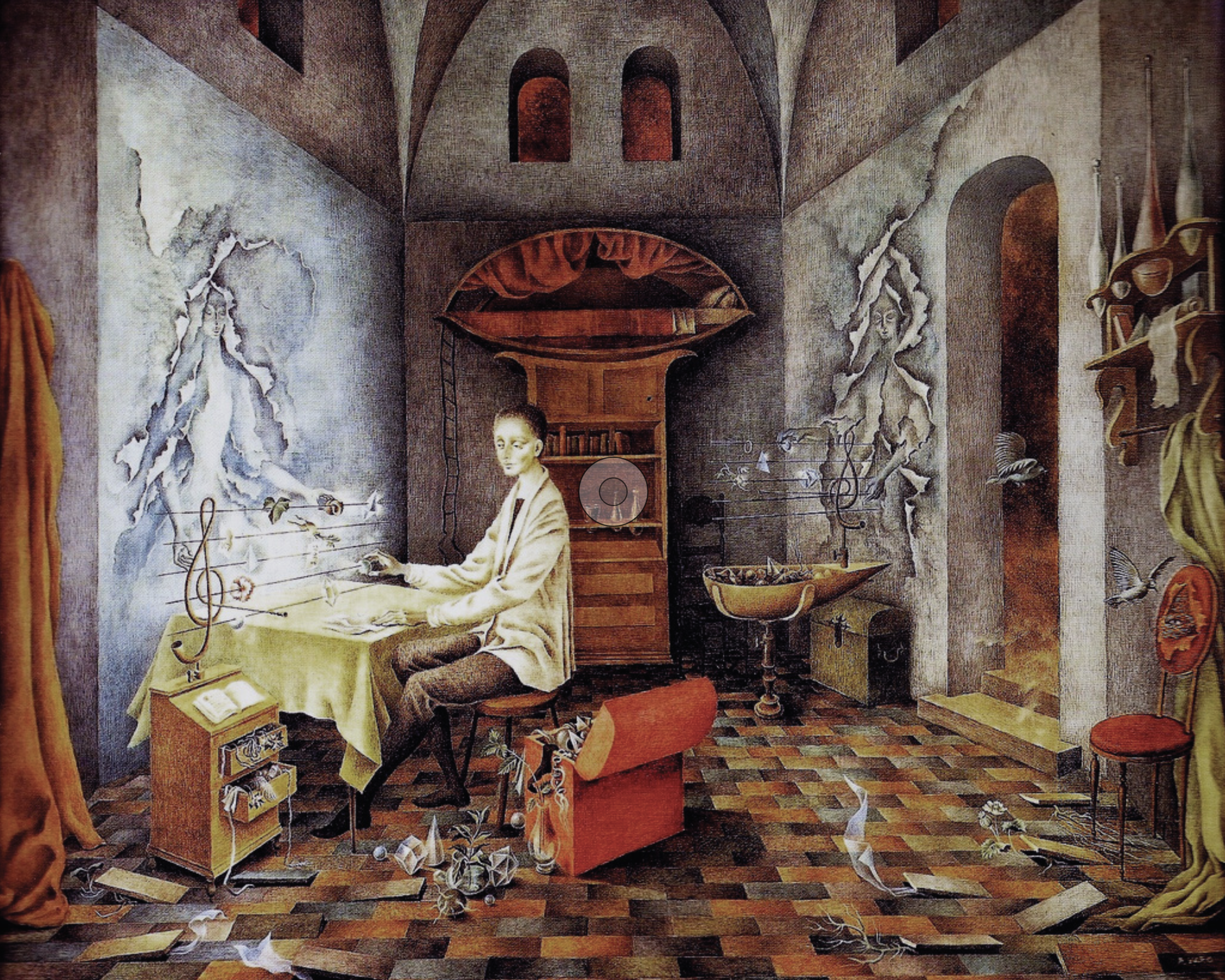
Remedios Varo
Harmony, 1956, Oil on masonite, Private collection
Agrippa begins his Three Books Of Occult Philosophy explaining that the world is made up of a threefold alchemical enquiry: the ‘elementary’, the ‘celestial’ and the ‘intellectual.’24 Harmony and Melencolia implicates the same three dimensions in the empirical, the spiritual and the rational. In Harmony, a shelf containing books and items related to chemical experiments dominates the background.25 Some scholars believe that the title Melencolia I may refer to the first of the three types of melancholy defined by Agrippa that Dürer had access to. The “I” must stand for ‘imagination,’ the melancholic positioning of the artist. This is in contrast to ‘reason’ and ‘spirit,’ the sentiments of the intellectual and theologian, respectively.26
Dürer’s print embodies the singular moment in European cultural history, framed by such a triangular relationship of these ideas. The artist’s status was under negotiation between the tradition of craftsmanship and the increasing intellectual demands. Instruments of abstract thinking along with instruments of carpentry surround the angel of melancholy. She bears wings and yet she is grounded by her own weight. She may be able to contemplate the celestial occurrences – the comet and the rainbow – but she remains shackled by her physical imminence.
Melencolia I and Harmony reveal a continuum – from the beginning until the present of Modern era – regarding the anxiety about the cryptic universal principles that determine human condition. Both images appeal to a secret geometry as its Rosetta Stone, to decipher those principles. Melencolia I‘s polyhedron and Harmony’s quartz stones resemble the Platonic solid models for the understanding of the Solar system that again, German Renaissance astronomer Johannes Kepler had detailed in his groundbreaking book Mysterium Cosmographicum.
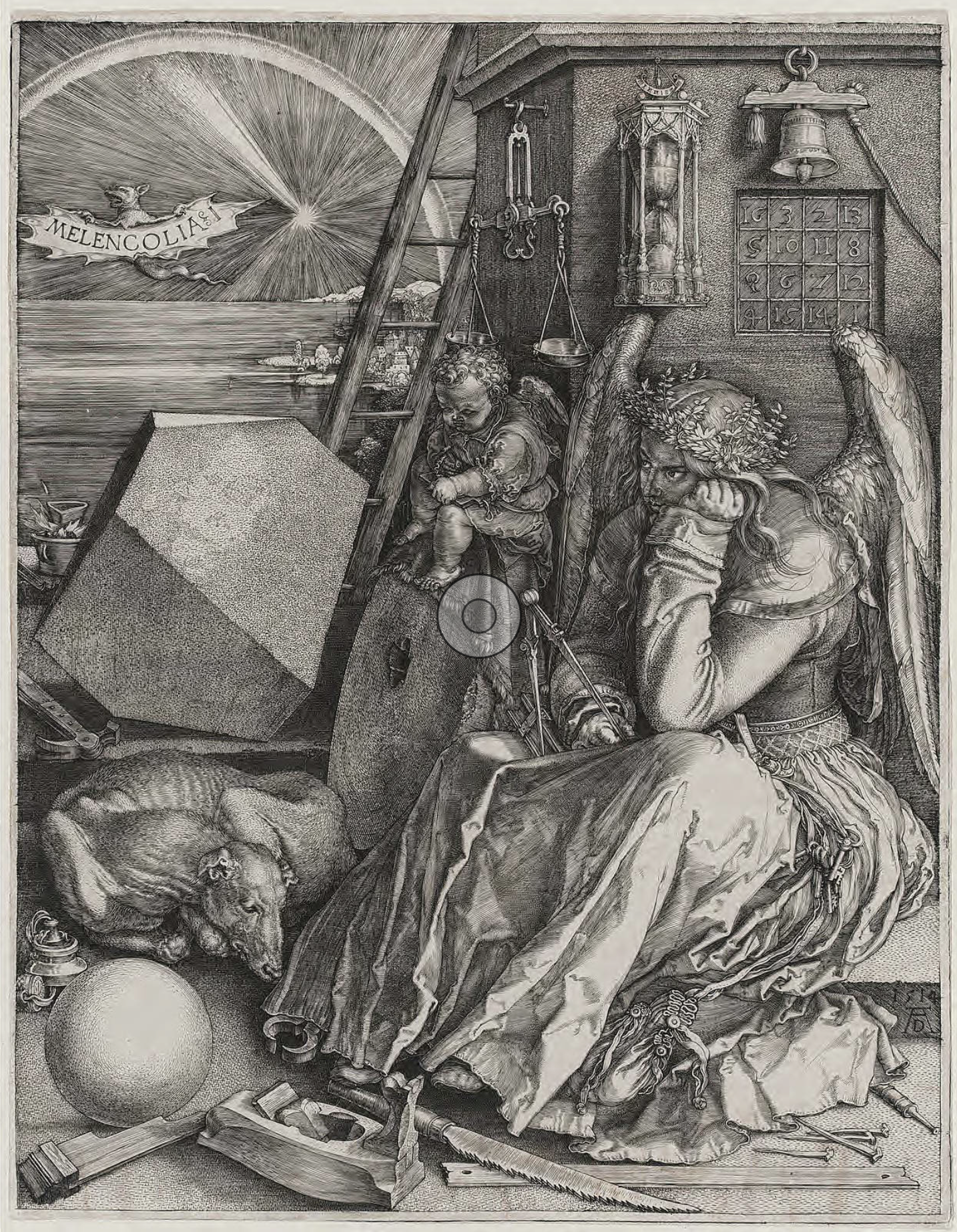
Albrecht Dürer Melencolia I, 1514, Engraving
The Prospect of New Media
Remedios Varo’s characters isolated in their spectral architecture would find their rabbit hole in digital technology.27 The prospect of a fully implemented computer generated reality, a manmade world will mean the dissolution of the tension between the magical and the real, within the suspension of boundaries between life and art understood as illusion, mirroring, representation. If the history of magic realism is the saga of literature and art’s imitation of the marvel, and illogicality of reality; the history of virtual reality will be simply the tale of reality imitating art by means of technology. Virtual reality is in the first place, the capacity to trespass a work of art, to live in the illusory side of the screen, on the wrong side of the mirror.
One of the critical objectives of literature associated with magic realism was precisely to create areas of uncertainty by overlapping the world of literary fiction and the world of the author and/or the reader. This resource was mastered by Borges and his exploration on the chronotopic (dis)continuities and bifurcations between fiction and reality. Such exploration anticipated new media concepts such as hypertext, telepresence and interface.
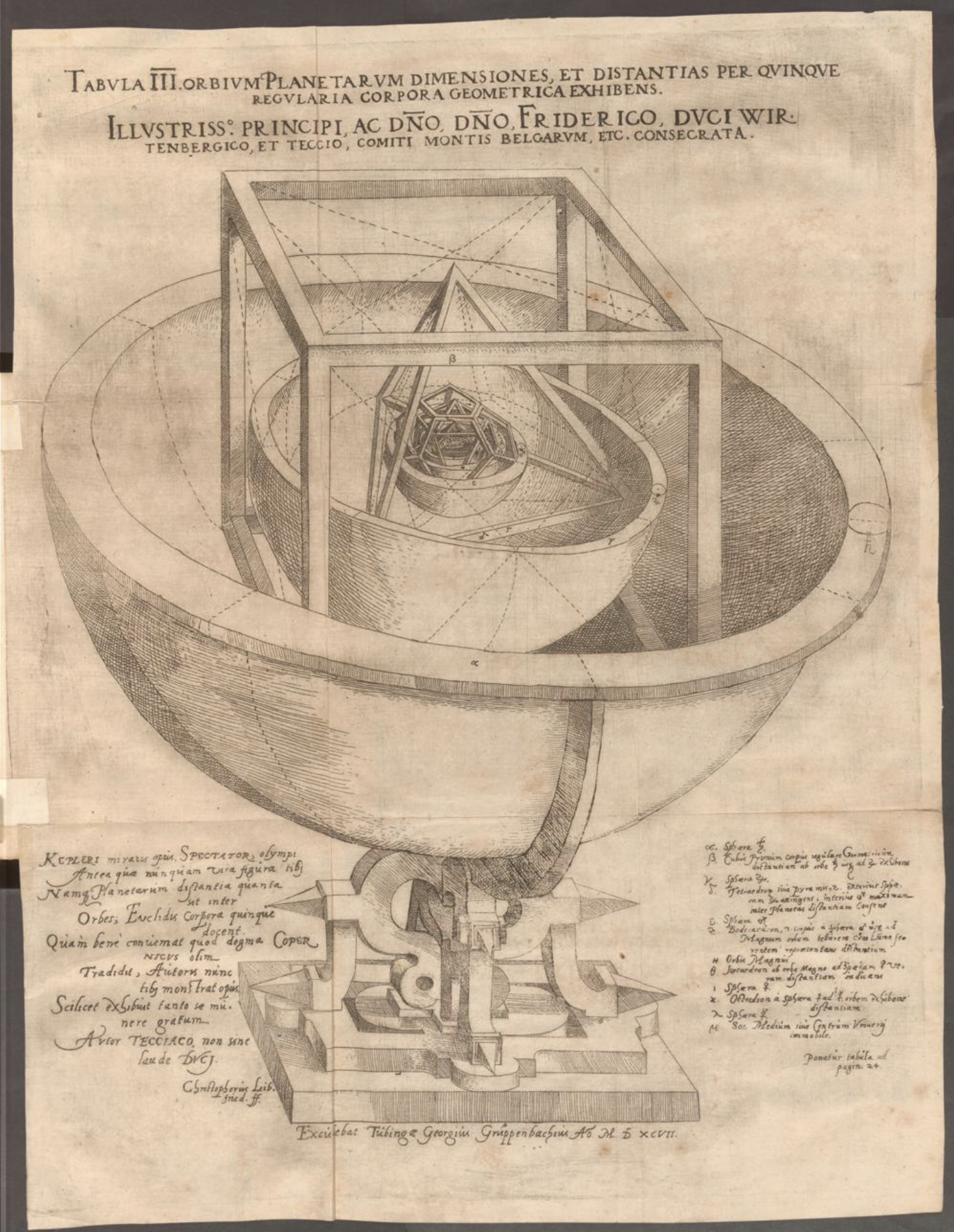
Johannes Kepler’s Platonic solid model of the Solar system.
From original 1596 edition, in Latin, of Mysterium Cosmographicum.
It is not a coincidence that two of the books that better served as philosophical bedrocks for new media age begin by referring to Borges’ stories: Foucault’s The Order of Things: An Archaeology of the Human Sciences (1966) and Jean Baudrillard’s Simulacra and Simulation (1981).
Foucault’s epistemological treaty discusses what different moments in cultural history accept as the “truth of science.” The preface acknowledges that the book was inspired by a passage from Borges’ short essay, The Analytical Language of John Wilkins, published in 1952. The passage is a hilarious apocryphal taxonomy built by a Chinese encyclopaedia entitled Celestial Empire of Benevolent Knowledge. Such document would classify animals as: “(a) belonging to the emperor; (b) embalmed; (c) tame; (d) sucking pigs; (e) sirens; (f) fabulous; (g) stray dogs; (h) included in the present classification; (i) frenzied; (j) innumerable; (k) drawn with a very fine camelhair brush; (l) et cetera; (m) having just broken the water pitcher; (n) that from a long way off look like flies.”28
Such an intention to confer scientific systematisation to fantasy may bring to mind some of the chronicles published after the accounts provided by the first European explorers of America. The ground-breaking Atlas of the New World (Nova Typis Transacta Navigatio Novi Orbis Indiae Occidentalis, 1621) was authored by the Austrian Benedictine abbot Caspar Plautius (under the pseudonym of Honorius Philoponus), and illustrated by the German printmaker Wolfgang Kilian. Kilian’s highly detailed plates would dedicate one page to an accurate depiction of American agriculture, and the next to the fantastic portrayal of the 5th century Irish monk Saint Brendan celebrating mass on the back of a whale on his westward voyage through the Atlantic Ocean searching for the Garden of Eden (Plate 2).
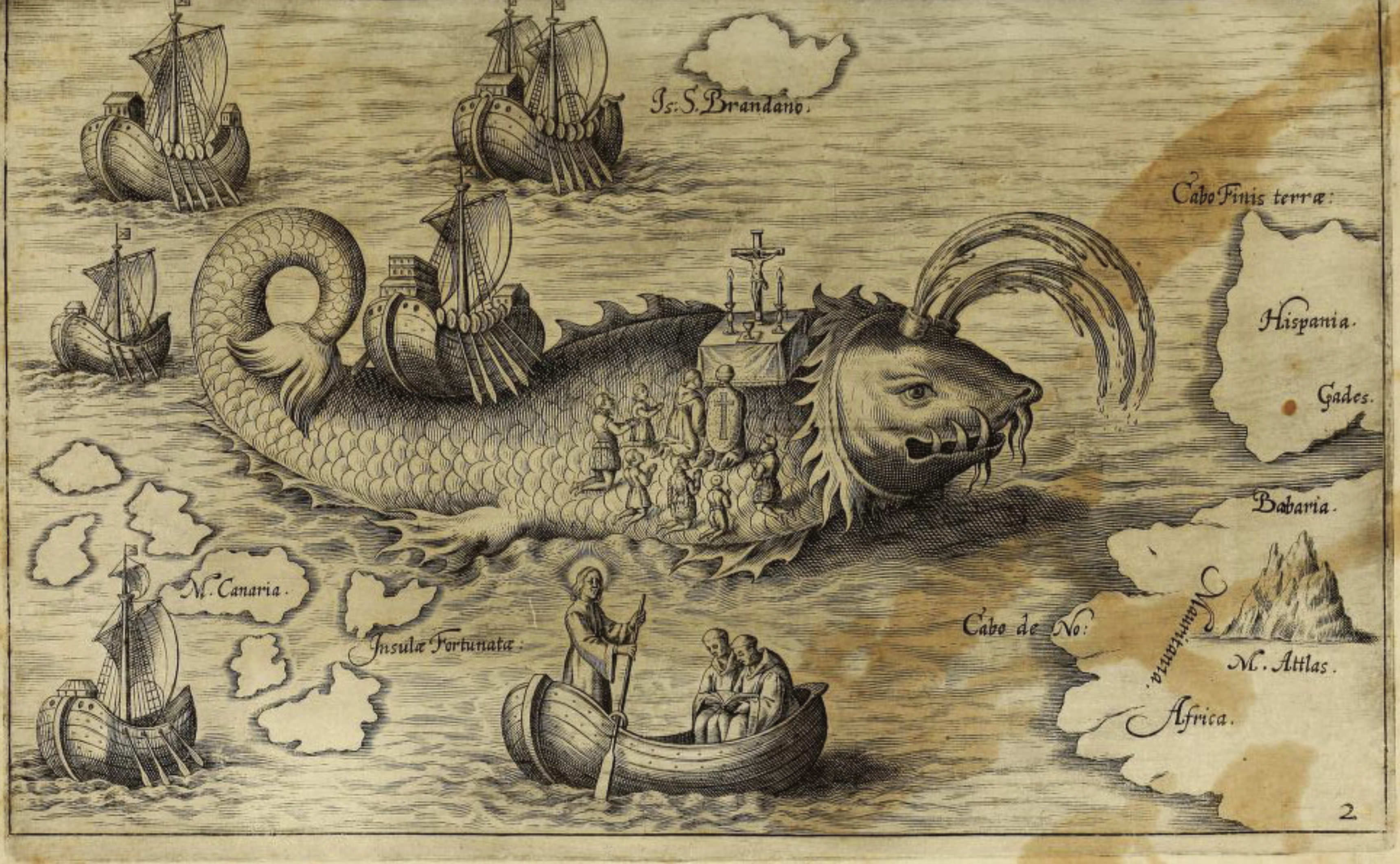
Wolfgang Kilian (attributed)
“Plate 2”, Caspar Plautius. Nova Typis Transacta Navigatio Novi Orbis Indiae
Occidentalis,1621
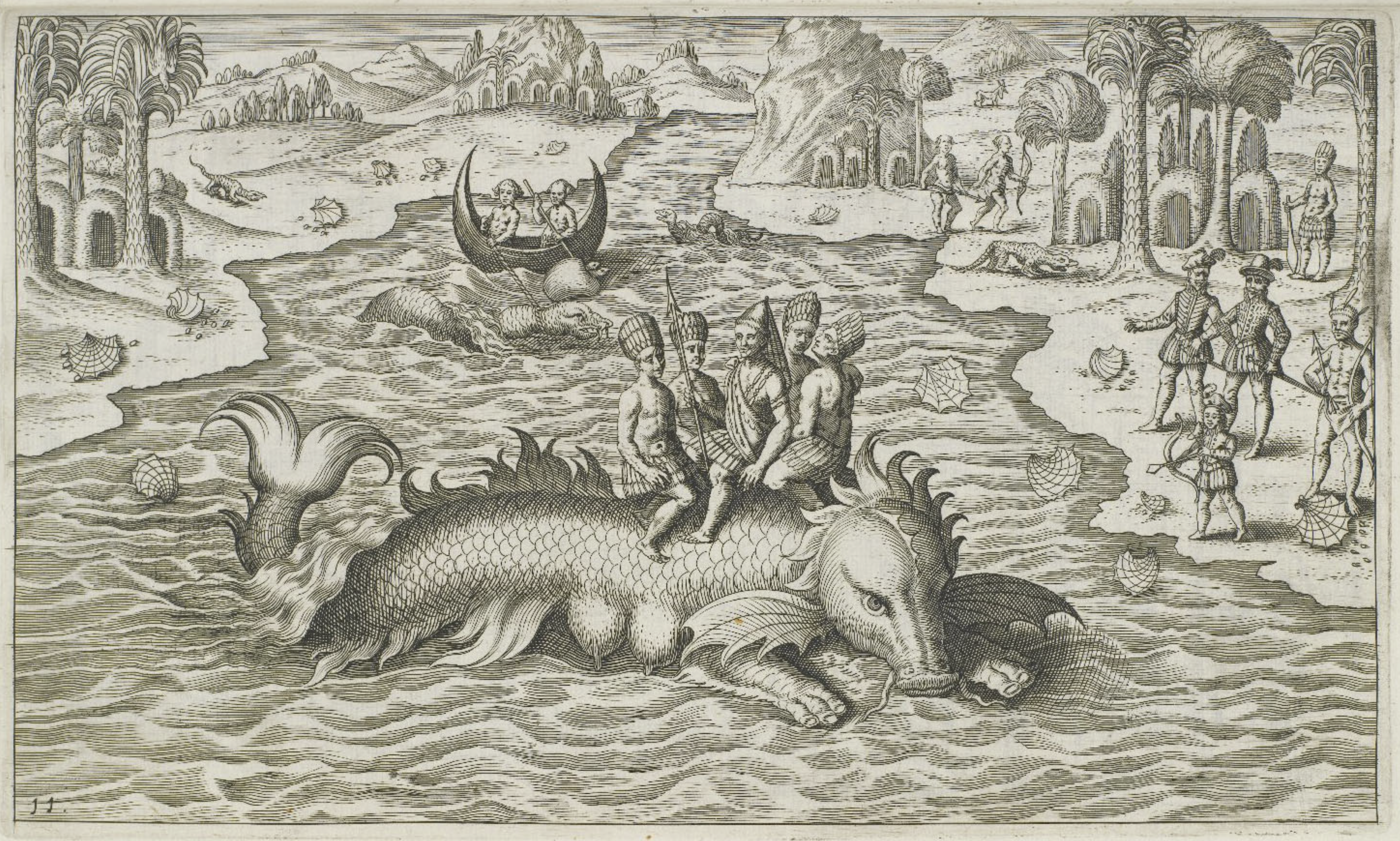
Wolfgang Kilian (attributed)
“Plate 11”, Caspar Plautius. Nova Typis Transacta Navigatio Novi Orbis Indiae
Occidentalis, 1621
Kilian’s Plate 11 describes two Europeans encountering the New World where aboriginal people share their environment with fanciful animals. At the foreground, a number of West Indians sail on the back of a sea monster bearing female breasts and a dragonhead. The image appears extremely similar to the Boschian fantasies that characterised Northern Renaissance. The combination of the naturalistic métier of the Italian Renaissance and the medieval hallucinatory subject-matters intend to confer an aura of authenticity. Such a sense of truthfulness is not dissimilar to Borges’ zoological categorisation in which sirens appear next to sucking pigs.29
Intended as a scientific and historic record, Plautius’ Atlas is perhaps the first piece of magic realism to be inspired by America’s marvels. In the 1960s, during the early stage of decolonisation and still under the influence of a rather monochord Western epistemology, Foucault believed that “the exotic charm of another system of thought” demonstrates “the limitation of our own.”30 Today’s multiplicity of epistemological paradigms arose under different set of conditions, in particular on two fronts: decolonisation and the age of information and communication. In such an environment, there are no longer domestic and exotic systems of thought. Forms of fantastic narrative pretended as empirical observation and scientific scholarship, such as Plautius’, reveal not only the idiosyncratic but even aesthetical nature of knowledge. Borges’ list could only advance the “(dis)order of things” triggered by TV channel zapping, digital networking and other resources for new media epistemological rapture.
In Baudrillard’s thesis on simulacrum, Borges’ one-paragraph story On Rigor in Science, published in 1946, is recalled. As with the Chinese encyclopaedia mentioned earlier, this short story appears to be another literary forgery. It is about an empire obsessed with cartography, so that “the Cartographers Guilds struck a Map of the Empire whose size was that of the Empire, and which coincided point for point with it.”31 As further generations began to live on top of the scattered ruins of the map, there was not much difference between the map and the territory, between reality and “the metaphysical beauty of this ruined abstraction.”32
The parable of a map so precise that it ended up covering the entire territory, helped Baudrillard illustrate his notion of simulacrum as the capacity to live inside a constructed model that neglects reality. For the French philosopher, today’s hyper-reality is the situation of living in a map (an abstraction, a concept, a reference) without a preceding territory, “a referential being, or a substance.”33 Baudrillard’s considerations that lead to his apocalyptic dictum “the desert of the real” is the forecast of a world in which “today it is the territory whose shreds slowly rot across the extent of the map. It is the real, and not the map, whose vestiges persist here and there…”34
When the Wachowski brothers built a film around Baudrillard’s notion of simulacrum, they named the “gatekeeper” between The Matrix (a computer-generated world) and the physical reality after the ancient Greek god of dreams. Morpheus, now in the reversal role of emancipator from the world of illusions, asks the hero: “Have you ever had a dream, Neo, that you were so sure was real? What if you were unable to wake from that dream? How would you know the difference, between the dream world and the real world?”35 This is the moment in which a team of hackers is intending to track the flesh and blood Neo from his digital avatar. The (dis)connection between the real and the virtual is allegorised by a distorted mirror. Neo touches the mirror but instead of trespassing from one dimension to the other – between reality and reflexion – it is the mirror that trespasses Neo’s body.
Borges’ poem Mirrors expresses the same anxiety about living under the tyranny of mirrors: about just reflections, someone else’s dream, God’s puppetry, prisoners in Plato’s cave. The poem begins as:
I, who felt the horrors of mirrors
Not only in front of the impenetrable crystal
Where there ends and begins, uninhabitable,
An impossible space of reflections.36
As I write this, on the day that marks the 30th year of Borges’ passing, the advent of the digitally immersive art makes his poem all too vivid. Borges imagined the articulation between the writer and the literary character as similar to the God-man relationship. The poem ends as follows:
God has created night time, which he arms
With dreams, and mirrors, to make clear
To man he is a reflection and a mere
Vanity. Therefore these alarms.37
In the Matrix, Deus ex machine controls men by means of a fully implemented and everlasting aesthetical experience, a grand fiction, a digitally-enhanced version of Richard Wagner’s gesamtkunstwerk (total artwork). Foucault’s and Baudrillard’s references to different systems of “fantastic sciences” predefines contemporary culture as a form of techno-schizophrenia. An overtly scientific world of fantasy makes Franz Roh’s modest enquiry on magic realism a prediction of a Borgesian nightmare. It is the nightmare of a virtual reality with no exit door, of not been able to return from the work of art, to wake up from magic. It is the nightmare of becoming just another allegory for a reality that turns unreachable after the triumph of the cyber-alchemist.
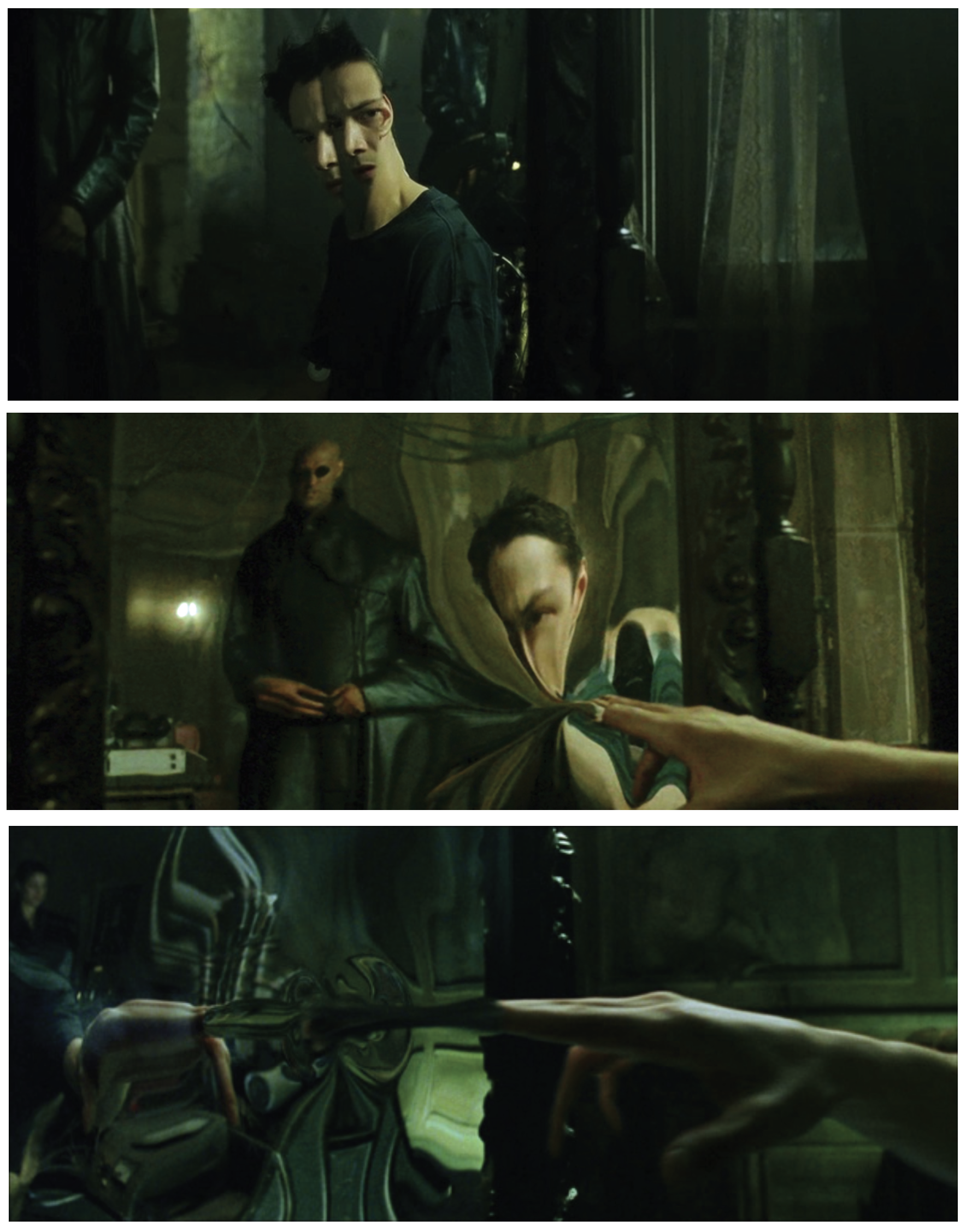
Stills from film The Matrix, 1999, Dir: Andy & Larry Wachowski.
Warner Bros Productions, USA
Footnotes
1 Ovid, Metamorphoses (Luxembourg: Poetry in Translation, 2000) 566.
2 Quoted in Friedrich Nietzsche, The Birth of Tragedy and the Case of Wagner (New York: Vintage, 1967) 26.
3 Heinrich Cornelius Agrippa, Three Books Of Occult Philosophy (Minnesota: Llewellyn, 1993) 5.
4 E.g. Pieter Bruegel the Elder. The Alchemist, 1558, Ink on paper, British Museum, London.
5 This trend was immediately absorbed by the better-known term Neue Sachlichkeit (New Objectivity) coined by Gustav Hartlaub, director of the Kunsthalle in Mannheim.
6 Franz Roh, German Art in the 20th Century (New York: Graphic Society, 1968) 113.
7 Quoted at Lois Parkinson Zamora. “Swords and Silver Rings: Magic Objects in the Work of Jorge Luis Borges and Gabriel García Márquez”, S. M. Hart and W. Ouyang (Eds). A Companion to Magical Realism (London: Tamesis, 2005).
8 George Grosz. Daum marries her pedantic automaton George in May 1920, John Heartfield is very glad of it, Watercolours over drawing pen, collage on card, 1920, Berlinische Galerie, Berlin. See also George Grosz. Republican Automatons, 1920, Watercolour and pencil on paper, Museum of Modern Art, New York; and George Grosz. Untitled, 1920, Oil on canvas, Kunstsammlung Nordrhein-Westfalen, Düsseldorf.
9 Raoul Hausmann. Mechanical Head (Spirit of Our Age), Ensemble, c 1920, Centre Pompidou, Musée National d’Art Moderne, Paris. During the same year, Hausmann made a number of collages related to science, technology and industrial design such as Tatlin at Home and Dada Siegt. A year earlier, his wife Hannah Höch made her well-known collage Cut with the Dada Kitchen Knife through the Last Weimar Beer-Belly Cultural Epoch in Germany in the same spirit. In 1927, the German pioneer science fiction film Metropolis, directed by Fritz Lang, was released. It features a cyborg as the main character living in a dystopian city.
10 Immanuel Kant, The Critique of Judgment (Oxford: Oxford University Press, 1952) 42.
11 Friedrich Nietzsche, The Birth of Tragedy and the Case of Wagner (New York: Vintage, 1967) 35.
12 Martin Heidegger, “The Origin of the Work of Art”, Off the Beaten Track (Cambridge: Cambridge University Press, 2002) 22.
13 Alejo Carpentier, The Kingdom of This World. (New York: The Noonday Press, 1957) 14.
14 Maggie Ann Bowers, Magic(al) Realism (New York: Routledge, 2004) 14.
15 Rafael Heliodoro Valle, “Diálogo con André Breton,” Universidad, 5 (June 1938) 5; A number of surrealist exhibitions in Europe — such as Yves Tanguys & Objects of America, curated by André Breton and Paul Eluard at Gallerie Surrealiste in Paris, 1927 — included American Pre-Columbian ethnographic artefacts. Courtney Gilbert, “Negotiating Surrealism: Carlos Mérida, Mexican Art and the Avant-garde,” Journal of Surrealism and the Americas, 3:1-2 (2009) 31.
16 In reference to the phrase “beautiful as the chance meeting on a dissecting-table of a sewing-machine and an umbrella”, that served as an inspiration for surrealist aesthetics. It was written by the Uruguayan-born French poète maudit Comte de Lautréamont in his poetic novel The Songs of Maldoror (1868). Comte de Lautréamont, Maldoror and Poems (New York: Penguin Books, 1978) 234.
17 Alejo Carpentier, op cit. 8 -12.
18 ibid. 10.
19 ibid. 14.
20 Octavio Paz, “Apariciones y desapariciones de Remedios Varo,” Corriente (Mexico. D.F. Siglo Veintiuno Editores, 1967) 25.
21 Remedios Varo, Harmony, oil on masonite, 1956. Private collection.
22 Luis-Martin Lozano, “Deciphering the Magic of Remedios Varo,” The Magic of Remedios Varo (Washington, D.C: National Museum of Women in the Arts, 2000) 15-53.
23 The compass has served as an allegory of God’s creations since the ancient world. Plato saw God as geometer and the Book of Proverbs 8. 27 states: “when he set a compass on the face of the depth.” See Frontispiece of Bible Moralisee, c. 1220-1230, Illumination on parchment, Austrian National Library, Vienna; and William Blake. Urizen, Frontispiece to Europe a Prophecy, 1795-1805, Watercoloured etching, Fitzwilliam Museum, Cambridge University.
24 Heinrich Cornelius Agrippa, ibid. 3.
25 A year earlier Varo painted Useless Science or The Alchemist, 1955, oil on masonite, Museo de Arte Moderno de México, Mexico City. What looks like as a mockery to alchemy reveals that contrarily to the general perception, Varo’s characters do not intend to play God. They are not in charge of recognisable transcendental tasks. Perhaps reflecting Varo’s own position as a female artist, her characters appear in seclusion, silently and introspectively involved in undertakings of ambiguous nature and relevance.
26 ibid. 189-191.
27 The ‘rabbit hole,’ Alice’s path into Wonderland in Lewis Carroll’s novel Alice Adventures in Wonderland (1865), is today a slang expression for a psychedelic experience.
28 Michel Foucault, The Order of Things: An Archaeology of the Human Sciences (New York: Vintage, 1970) XV-XVI.
29 In a similar fashion, Plates 6, 7 and 8 are dedicated to the representation of Western Indians as worshippers of the devil. While the aborigines are depicted barely dressed with loincloths and feathers in their heads, the demoniacal idol is portrayed according to Western iconography – horned and bat-winged – and placed in a classically refined logion adorned with Corinthian columns. This kind of whimsical images played an essential part as persuasive tools for the European transatlantic “crusades” to “pacify” and Christianise the West Indies.
30 Michel Foucault, op cit. XV.
31 Jorge Luis Borges. Collected Fictions (New York: Viking, 1998) 325.
32 Jean Baudrillard, Simulacra and Simulations (Michigan: University of Michigan Press, 1994) 1.
33 ibid.
34 ibid.
35 Film The Matrix (1999), directed by Andy & Larry Wachowski, Warner Bros Productions, USA.
36 Jorge Luis Borges, “Mirrors,” Dreamtigers (Austin: University of Texas Press, 1964) 61.
37 ibid.
References
Agrippa, Heinrich Cornelius. Three Books Of Occult Philosophy. Minnesota: Llewellyn, 1993.
Baudrillard, Jean. Simulacra and Simulations. Michigan: University of Michigan Press, 1994.
Bowers, Maggie Ann. Magic(al) Realism. New York: Routledge, 2004.
Borges, Jorge Luis. Collected Fictions. New York: Viking, 1998.
Borges, Jorge Luis. Dreamtigers. Austin: University of Texas Press, 1964.
Carpentier, Alejo. The Kingdom of This World. New York: The Noonday Press, 1957.
Foucault, Michel. The Order of Things: An Archaeology of the Human Sciences. New York: Vintage, 1970.
Goodman, Nelson. Ways of Worldmaking. Indianapolis: Hackett, 1978.
Hart, Stephen M. and Wen-Chin Ouyang (Eds). A Companion to Magical Realism. London: Tamesis, 2005.
Heidegger, Martin. Off the Beaten Track. Cambridge: Cambridge University Press, 2002.
Gilbert, Courtney. “Negotiating Surrealism Carlos Mérida, Mexican Art and the Avant-garde.” Journal of Surrealism and the Americas 3:1-2 (2009): 30-50.
Kant, Immanuel. The Critique of Judgment. Oxford: Oxford University Press, 1952.
Comte de Lautréamont. Maldoror and Poems. New York: Penguin Books, 1978.
Lozano, Luis-Martin. “Deciphering the Magic of Remedios Varo.” The Magic of Remedios Varo. Washington, D.C: National Museum of Women in the Arts, 2000.
Nietzsche, Friedrich. The Birth of Tragedy and the Case of Wagner. New York: Vintage, 1967.
Ovid. Metamorphoses. Luxembourg: Poetry in Translation, 2000.
Paz, Octavio. Corriente Alterna. Mexico: Siglo Veintiuno Editores, 1967.
Roh, Franz. German Art in the 20th Century. New York: Graphic Society, 1968.
Valle, Rafael Heliodoro. “Diálogo con André Breton.” Universidad 5 June (1938): 5-8.
Image Source
“Plate 2”
Open source: The John Carter Brown Library is an independently administered and funded centre for advanced research in history and the humanities, founded in 1846 and located at Brown University since 1901. Housed within the library’s walls is an internationally renowned collection of primary historical sources pertaining to North and South America from the time of its discovery by Europeans (ca. 1492) until the end of the colonial period (ca. 1825).
https://archive.org/details/novatypistransac00phil_1
“Plate 11”
© University of Edinburgh
Location: Centre for Research Collections/Main Library, The University of Edinburgh
http://images.is.ed.ac.uk/luna/servlet/detail/UoEgal~5~5~66203~104307:Nova-Typis-Transacta-Navigatio,-pl-#
Daum marries her pedantic automaton George in May 1920, John Heartfield is very glad of it
© VG Bild-Kunst, Bonn 2011
http://www.berlinischegalerie.de/typo3temp/pics/5037a461b8.jpg
Harmony
(Book) Luis-Martin Lozano. The Magic of Remedios Varo, Washington, D.C: National Museum of Women in the Arts, 2000, p. 90
The Matrix, Stills, 1999
1.- http://madgermanexpressionism.blogspot.sg/2012/04/film-analysis-matrix-1999-by-larry-and.html
2.- http://duncantrussell.com/forum/discussion/13264/name-that-film-that-everyone-else-has-seen-except-you-/p1
3.- http://illuminatisymbols.info/the-matrix-morpheus-pyramid
Essays
Porous emerald
The taxi
Cast
Jago: as himself;
Uncle Khun / Toh Ma Khun: Thomas Kuhn;
DC / Emeritus Demócritos Tonkartón: René Descartes;
Dave / Associate David Scott: David Hume;
Emma / Assistant Emma Brink: Immanuel Kant;
Zach / Professor Zachariah Triturus: Isaac Newton;
Sandy / Xia Su Pei: Charles Sanders Peirce;
Han Zi: Hans Reichenbach;
Poppy: Karl Popper;
Baasa: Baas van Fraassen;
Arul: Larry Laudan;
and last, but not least, the Ludwigs: Wittgenstein and van Beethoven.
Jago stirs: something is strange. Ice-cold wind streams from the aircon and relentless chatter from the radio: “…it would not be without reason to deem it a ghost or a phantom formed by the brain…”1 Reality blurs: yes, he must have drifted off. Yes, the taxi, but no, why have we stopped? What time is it? He breathes in heavily through the nose. Fog lifting: yes. The guest lecture at the Uni, voices of those students still lashing the insides his skull. Jago searches a foothold for memory. Faint whiff of tiare, plumeria: airport posters with not-so-secret voluptuous bodies. Why is he alone? Or, not exactly alone.
“Got jam, yessir, very heavy traffic, always at this time leh.” Thick accent, yet the voice is soothing.
A silent second, then the radio continues. “And not in any way doubt the veridicity of such things, if after having called on senses, memory, understanding…”
A plate above the front passenger seat: Mr Toh Ma Khun. Early 60s, thick spectacles, high forehead, thick lips. Someone’s uncle.
“I’m really late. How long did I sleep?”
“No worries. Got another way soon, just opened. New, sir, you want to try?”
Cold wind, radio chatter, condensation building. Jago needs air, some fresh hot air. Grins and rolls down the window: a change of perspective. In a moderate temperature with no wind, the mind regards the air as a mere nothing.2 He gulps the fresh hot air.
The canopy is a porous emerald. Strange animal shapes, calls echoing from trunk to trunk. For an eternal moment, Jago’s consciousness is blank, yet alert: overwhelmed by multiple sensory streams.
Roll up window, fade in radio chatter: “…exigencies of action often oblige us to make up our minds before having leisure to examine matters carefully…” while Jago becomes aware of the response cooked up by a precognitive part of his brain.
“Okey, try the other route.” Glances at the watch, at the taxi meter. No Mr Uber: yes Uncle Khun. “Will we make it in time? Do you know how… how long?”
A Duchenne smile, driver seems elated. “No lah, never drive it. New construction, so how, holy cow? Hehe. No worries, now the first bit bumpy for sure, soon others will come around, smooth sailing. For a while. Then people might find things strange. Liddat lor, new questions always on repeat. Never same puzzle, always same pattern. No way to compare different road one lah.”3
Jago’s mind is blank. What about the first drop-off? How could he have missed it! A sense of sweet and sour disappointment. That’s life. “So let’s go.”
Who is to blame for what happened next? A mesh of events, strange as each may seem in isolation, is created mail by mail. Khun, euphoric, switches off the radio, throws in a low gear, accelerates with a daring turn onto a side road. Jago bounces at every pothole; he tries to ignore the patchy tarmac and keep his lunch down.
“Me, I’m a driver. My taxi got all I need to know. Finding the best way from pickup point to drop-off point. Once set off, driving is like solving a puzzle. That’s all what. Question why there is this puzzle, why these rules? Nooo need! Let me tell you: each ride got its own reason lah, got its own reality, got its own logic.”
Each journey becomes exemplary. The driver’s hand: a flicker of two contrasting shades. His own: palm and back in a completely uniform colour. Palm less hirsute, thankfully.
Sudden large bump: “Ouch..! My whole journey here is an experiment, really. The Uni invited me – where you picked me up – for a guest lecture. You know, they have a very renowned department, research in embodied sensation. That’s why I came to this place.”
Jago had sensed puzzlement among the professors – some misunderstanding? The impressively articulate Emma, the older colleague, what’s his name? And professor Triturus, who studied with the master himself. The big Uni’s motto, like a compass: ‘Eastern Wisdom, Northern Technique, Western Finance, Southern Vision.’ Grand, all capitals.
Taxi slows down for a roundabout: how come there’s no traffic here? Jago sees a bird lift from a branch: flash of blue. Emerging from the canopy: angsana, or maybe tembusu.
“The students posed good questions. Yeah, not easy to answer at all! Scrutinised the grounds for what I lectured upon, it really provoked in me a sense of –” Jago interrupted by another pothole. Sense of crisis: yes, no? He hesitates, the word is too strong. Vivication? Road getting more uncomfortable.
“In this world, nothing is easy. I share this taxi with my nephew Arul. He tells me orredi taking a customer from point A to point B got three kinds of problem. One. I can see the way, but the road is not built yet. So how? Cannot drive lor, must go round, or build first, right? Hehe. Two. I hear got another road, many cars, like everybody go again and again. But I can’t find it. So I don’t waste time any more. There is a third one. Know where it is, no traffic. But damn suay, you know means ‘bad luck’, my car lao ya, engine too weak! Then better off walking, taxi cannot help.”4
Jago’s stomach is like a laundromat. “So which kind of road are we travelling on now?”
“This one? Never tried before. Very bumpy right!” Uncle Khun speaks slower, speeds up the car. Another large bump, ka-boom! Hit something big, something indubitable.5 Jago in the backseat bouncing like a ball in Newton’s cradle.
“So sorry, can dahan? Maybe you try ignore. I drive many years, got used to bumps. Let me tell you. Push on a bit, can learn from it, den you strike it big one day.”
Left hand gesticulating; for each syllable: drawing a short line in the air. Rhetoric graffiti, starts humming. Jago wants him to hold the wheel with two hands. Drivers deal every day with anomalies and recalcitrant evidence. The tune is vaguely comforting to Jago. Yes: a ’60s hit. Can’t recall the words. Yes, now he can: love, of course: Love me do. Hums along, soundlessly: he prefers the later albums.
Earlier at the lecture, what Jago had claimed: “We are limited to an incomplete understanding of the world, even if it is simple at the core. In order for us to understand it, the world must be a certain way.” The Uni as in a dream: he imagined moving, rousing; but action: impossible. The body a prison: or maybe he was nervous? “When imagination is indistinguishable from memory, when we’re at the vertex of an unfolding strangeness, action becomes necessary. Writing music demands musical thinking.”
Grad student audience really active, he liked them, the way they asked questions. Yeah… Big brown eyes, is she a bit cross-eyed? “Doctor, thank you so much for the talk… I’m Su Pei, call me Sandy. Hrm… you said in your talk…” She flips the pages of his printout. Then her notebook, emerald green, with an elastic strap across. Take your time. A conceptual rhyme between her T-shirt slogan and his talk’s subtitle: knowledge is power, strangeness unfolds. Rhyme? Why does he think it rhymes?
“Sorry! …eh you compared belief to music, and I quote: ‘Belief is a half-cadence in the symphony of our intellectual life.’ Very pretty, haha. But is it revealing? I’ve three questions. Firstly: do you mean that music can make us aware of the limitations of our knowledge? Secondly, can any analogy, no matter how pretty, really appease the irritation of doubt? Thirdly, aren’t we better off focussing on action, rather than getting stuck at belief?”6
Go-getter. Music the context of discovery, musicology the context of justification. Between seeking and describing, what’s the link? Connecting observation and theory is explanation, the ‘is’ is the link. So big eyes, notebook again. Jago excited, no time building an argument: time running out. Most of the wonderful complexity and exciting controversy skipped over, his response is “like a stone thrown to bounce a couple of times on the water’s skin.” Is he badly prepared? Snap out of it old boy; this is home turf. Go for your intellectual quest, let’em spin! “I dream about finding sufficient grounds by which to distinguish dream from wake. But when I awake I can’t find any.”
And yes, they rewarded him: approving giggles, right on cue. Fruit machine optimal play.
Jago’s unseeing eyes turn away from the multi-coloured flowers of the canopy; they meet Uncle Khun’s big brown eyes in the mirror.
“Mister, you ask why every stone must sink. Ah-hah, but how do you learn every stone can sure sink one? Seeing one, den next, den next, go on and on. Can, but still is never enough, you cannot know. Unless seeing patterns.” Left hand makes a large circle in the air.
Beyond simple enumeration: identifying through observation some characteristics that could take the form of general laws.7 Another student, round face; whole appearance rotund. Tricky comments, tight-lipped, thin voice like a straight line.
“Every event is preceded by a cause which partly determines it, but the event is also partly determined by a universal law. To deduce the occurrence of a phenomenon from a general law is to attribute a cause to it. To explain a phenomenon is to say what caused it. My supervisor, prof Emma, says this principle is ‘transcendental’ since causality is itself unobservable. The universal is a point of departure, necessary for the very possibility of the event, of our empirical observation of it, and thus our knowledge.”8
In response, Jago relaxes the larynx, increases sub-glottal pressure. His vocal centroid sinks: alpha male signal. “The classic top-down: formalised guesswork, mind over matter. The method: make a bold general statement; then: laborious particular observations; finally: hold, nudge, and verify. Like clockwork, finito, basta. For sure, it’s a mistake to treat the Greeks with superstitious reverence.”9 Aiming for big streak, but darn. No prize this time.
“No sir, my approach is more like boot-strapping, bottom-up. The ascension from sense data to individual things to scientific theories. Sandy and I are working on probability and action. Togethurr.
But Poppy very hiao, she will go down her own path.”
“Diam lah, Han Zi… I’m not a loner meh.”
“Wah piang you are, what! But at least you don’t throw bricks around!” Sandy slaps him on the chubby wrist. The students laugh: bickering, not feuding. They all agree on the fundamentals.
The committee
Jago standing outside the office of the department head, looking at the plaque: ‘Zachariah Triturus, MA. Professor of Embodied Philosophy.’ “Take a seat please.” Thank you. Jago familiar with the early work on anemometry, the tales of fighting, fruit farming, alchemy. Innumerable granted projects, publications, patents, secret societies, royal connections. Triturus’ rise from humble beginnings to the highest echelons of the Uni had been uniform: a straight line. Unkind voices whispered of unprincipled borrowings from a teacher but no one seriously questioned his eminence. In fact, the professor’s position at the Uni was so solid, that, seemingly, all that remained for younger colleagues to do, was fill in the details.
Inside the office, Professor Zach, as he likes to be called, has gathered the search committee for the new faculty position: associate David Scott, area coordinator of the college of materialistic sciences, and assistant Emma Brink, specialist in transcendental communication. With the fourth member, flamboyant emeritus Demócritos Tonkartón away on outreach – some radio talk show – the others breathe calmly. But the professor is perturbed.
“I’m puzzled by the candidate. Could he have – misunderstood – my invitation letter? He seems too relaxed! Does he not know that the lecture – with the students – is evaluated according to a most strict protocol – implementing mathematical formulae – as part of the hiring procedures?”
“Zach, you’re the one with the experience to tell.”
“Yes. Yes, I should have – thought – so. The word ‘thought’ – as you know – covers everything that we are aware of as happening within us, and it counts as ‘thought’ because we – are – aware of – it.10 But in this case ‘instinct’ might be called for, and much as I know it will dismay you – Dave, in particular – and Emma – my dear – perhaps you will be prepared to go along with – gut feel?”
Dave crossing his legs, Emma straightening up, saying: “Certainly. I always consider my very first judgment, even if it is merely a product of perception: nonetheless it stays with me; but with me alone. At some later point, a more consequential form of judgement might be created by attributing perception to an object with the assumption that the judgement will extend its validity to the public realm: to all times and for everyone else.”
“Excellent. Excellent, as you say, our experienced judgement – determines – the world.11 The fewest assumptions – or greatest simplicity – is preferable. We need no more causes of natural things than such as are both true and sufficient to explain their appearances”.12
Dave, eager to move on. “Axiomatic. I heard a knocking mand. Shall we let him in?”
The forest
Two Uni colleagues longing to leave the search committee meeting: Dave’s mood clouded, Emma legs sleeping. To vivificate, they head for the lowland equatorial evergreen rainforest.
“Good of you to interrupt my dogmatic slumber and suggest a walking meeting. We can talk plenty about the search matters. Oh, I love this trail, I find the uniformity of the canopy – its colours and shapes – so… comforting, really. Did you know I walk here every day at exactly the same hour? We could reach the tower before sunset, if we choose to go that deep in. Dave, what say you? Some fresh hot air might have a positive effect on us.” The last sentence intended to taunt her elder colleague: successful.
“Emma, I don’t believe for a moment it could do us any good. Not anything bad either. We’re just as fine without trying to establish what air, fresh or hot, might do to us. Your idea of fundamental ideas is getting to your head again.”
She produces a sound like a bad cough, but Dave knows it’s laughter. They have had this exchange many times, with the smallest of variations, ever since becoming colleagues. He knows Emma’s obsession with schedules; she knows his thirst for fame.13
“I just thought of the two Ludwigs in the lab: the one can’t stop talking at our walking meetings, while the other, refusing all company, takes silent walks in the rain.” Coughing-laughter again.
She’s funny: his clouds are lifting. “Emma, you aren’t half as sick as you are trying to make it sound. Granted, your humour is drier than your throat.” He snickers. “Now-now, having heard the guest lecture with the students, how would you judge our candidate?”
“Well… at least he’s a good listener.”
“Lame… and you’re avoiding the key question: is he fit or not? At job interviews, we put them through tasks: theoretical, empirical, practical. We observe them and figure out if their performance correlates with their CV: observation and theory. Ah, we look into crystal bowls, fish guts, or worse, seeking to establish their future suitability.” Dave shakes his head. “We’ve done this many times before and it seems a natural process to gain knowledge; yet there’s something in me that objects to generalisation.”
“Professor Zach requested a prediction: will the candidate be as good an employee as he was a performer at that single lecture? Dave, you know him better than I do, how could he ask us that? Knowing full well that particular observation is disjunct from universal truth, and quality is hostage to quantity. Yet Uni mands an apodictic judgement: yes or no.”
Dave halts, Emma continues at a slower pace. He could not in her voice, decipher any trace of passion, and now he cannot see her face. Words so clear themselves do not suffice for meaning.
“Our judgement must be tempered by our previous experience; reasoning is based on analogy, and analogy is what leads us to expect from any cause the same events, which we have observed to result from similar causes.”
Her back towards him still. “True. Yet analogies can be more or less perfect, leading to inferences whose conclusiveness is proportional to their degree of similarity and resemblance.”
“Well, that’s my point.”
He meanders down the slope towards her. The path: covered with dense vegetation. An emerald tunnel. Dave intones: “The under-canopy forms a false ceiling. The path we follow reaches uniformly into dimmed distance; should we stand firm, the path is time, and thence continues uniformly into dulled future. While this is what my senses show me, it does not mean that I must hold eternal sameness true.”14
Emma turns, revealing empathy. “You’re such a grumpy sceptic! What if we distinguished judgements of perception of the lecture from judgement of experience of candidates in general? The latter have objective validity because they are reflected upon and shared. The former obviously have mere subjective validity; yet both are powerful, since either justifies action.”15
“I’m not a sceptic: on the contrary I take comfort in there being absolutely no effect whatsoever of my action. Whether I tick the box to support – tic – or not – tac – or the last option, where it says that I cannot evaluate the quality of the candidate solely on the basis of presented evidence – toe – I will not in any way influence the final outcome.”
“Prof Zach would not agree. He counts each vote, then calculates the average. He was first to do it that way, you know. And absolutely all Uni followed. Even the students. But they’re not blank slates, written upon. Rather, it is their own minds that create reason, and it is reason that gives ground for judgement. Empirical judgments are always self-made.”16
“Emma my dear: it’s impossible to explain, or even to experience, causal relations; such experiences are merely figments of our imagination. My teacher recommended common knowledge: that is truth which clear is and distinct for all to see. Id est: public.”
“Well, this afternoon, your own student demonstrated – in public, yes – a clean-cut separation of observation and theory. Not bad, actually. She defines our actions according to context: it’s either justification or discovery.”
“Poppy, my poppet… Yes, she is very committed to matters of objectivity and empiricism. Different contexts? I like it… a dichotomy that explicitates! Better than splitting the world into cause and effect, innit?”
Dave hops happily along, humming turning into singing. “No–no–no such thing in nah–nah–nature. Co–co–causation, ain’t much like self or substance, no–no–no.” Pieces of gravel bounce rhythmically on the path, into the grass. Emma shakes her head, Dave is decidedly on a phlogiston free-flow. “Looook at this tree, this forest. Hear the animals call, echo–echo, from trunk to trunk… Experience! Even the most ignorant, brute beasts can improve by experience, and learn the qualities of natural objects, by observing the effects which result from them.”17
Dave out of sight, ululating in the forest. “I see the uniform blue–brown–mauve–red, I hear the uniform bleat–chirp–hoot–click… co–co–constantly co–co–conjoined. My mind is determined by custom to infer the ooh-one from the appearance of the ooh-other. Circumstances form the whah-whole of that necessity. Beyond the co–co–constant co–co–conjunction of similar objects, and the co–co–consequent inference from one to the other, we have no–no–no, nah–nah-nah, no-no-notion of any–nanny ne–necessity or connexy-sexy co–connection whatsoeverimostedly…”18
Dave’s phone signals short message service: slows down and trawls his pockets. Realises he’s standing in front of an enormous tree, like a giant’s arm with 30 fingers stuck into the soil. An emergent tree: angsana or tembusu? Light sprinkles past its wisest branches, plays upon its physical trunk, and reaches finally its fundament, the twisted roots above the forest floor.
Emma, catching up. “Nice jingle, you feral man-child. Who’s the message from?”
“You-know-whom. Apparently just finished that radio interview and now desperate to share some leftover remarks with us.” He probably posts to a huge group of recalcitrant receivers.
“Such as you. I don’t even have a handphone. May I read it?”
“Sure…”
“Well, he writes: ‘I am seeing, therefore I exist. I am walking, therefore I exist.’ Good old DC, same old refrain. Not quite there yet, is he. Should know that if those words connote bodily activities, then neither inference is secure, because he might be dreaming; he might not even have a body at all! Might be just like a radio voice. However, if the same words were labels for the actual sense of seeing, and the actual awareness of walking, then both inferences would be perfectly secure, because they don’t go beyond the mind, which senses or thinks that it is seeing or walking.”19
Dave is transfixed by a kingfisher: a piece of food in its long beak, a fruit or a shell, perhaps a snail. It juggles the bait, bites it repeatedly. Suddenly throwing it to the back of the throat; then vigorously shaking the head. When calm: looks around, proudly sated.
Emma, reconciliatory. “You speak of brute beasts in a forest, but I think of life therein much like of knowledge itself – all parts belonging: growing together. The forest is architectonic: an artwork disguised as a system of many various cognitions bound in one. Not an aggregate of unconnected thoughts, because knowledge grows organically from within, like the limbs of an animal body, and not by external additions.”20
“If the forest is our human reason, our mind, then the animals are our thoughts. Is this the core of your analogy?”
“I say that human reason is by its nature architectonic… the interest of reason, which requires a unity – not empirical, but initial and self-made – forms a natural recommendation for believing in reality.”21
“Ah, I recognise the core of your argument… but the world is constituted by empirical objects and entities of which we can share subjective judgements, and unify knowledge of a public realm of empirical objects.”
“Yet the source of necessity for these shared objects originates in the mind of the knowing subject, not in objects themselves: existence springs from the mind.22 And I recall it was your student who said – Baasa, the exchange student I mean, not Han Zi – that it exactly is in this sense that objective knowledge is possible: even science. So far so good. But then he questioned your cherished notion of analogy…”
“Yes, I was taken aback. He actually said, at the queue-and-aye, that our mental representation of the world does not necessarily resemble the world. Claimed that representation is a social convention, something that depends on usage. Unheard of! That there is no such thing as representation except in the sense that ‘some things are used, made, or taken, to represent some things as thus or so.’ I was totally shocked. Were you not stirred, at the very least?”
“Not really. Totality is nothing else but plurality contemplated as unity; limitation is merely reality conjoined with negation; community is the causality of a substance, reciprocally determining, and determined by other substances; and finally, necessity is nothing but existence, which is given through the possibility itself.”23
“I think he is bashful; youth is leading him astray. A gulf separates us!”
“Ah Dave, you’re painting yourself into a corner, your empiricism is limiting you! Bridge the gulf by negating negation. So what if you cannot sense the totality of the world and thus cannot know the totality of the world! Reason is the human ability of making inferences about the true existence of the world, escaping inductive regression.”
Her arms extended, wrists twisted, fingers strained at unusual angles. “Reason begins by persuading itself of the existence of some necessary being… of… of…”
“… unconditioned existence?” Dave plays along, he knows she thrives on antimony.
“Yes, the unlimited all is an absolute unity, and is conceived by the mind as a being… being…
“…above?”
Release: a new pose. “Exactly, and thus reason concludes that the peerless, as the primal basis of all things, possesses an existence which is absolutely necessary.”24
“Here we go again: the leap of faith. I’m not buying into it, Emma. Your reliance on intuition borders on mysticism, and it includes an unprovable proposition.”
“No it doesn’t! At least try to see my point, and without invoking the negation of evil!”
“I’ll be delighted to.” Bow and scrape: a balance act between humour and haughtiness: “Let’s imagine that your ‘self-made first step’ is a stepping stone. Might it be reinterpreted, later, in a rationalist framework of explanation?”
“Aww Dave, my idea eludes you…” Her arms drop.
“Emma, I’m not criticising you; in fact, it’s rather the other way around! I’m in no position to claim knowing exactly why good and evil appear so unjustly distributed. I can’t. Then you were the one rejecting my conviction that knowledge of the world exists prior to humans sensing it – pure knowledge!”
“Okey, okey, okey… I accept that causality cannot be proven by experience. But I can show that experience is impossible without the existence of previous knowledge in the world. If this stepping stone, as you call it, is a piece of knowledge, then it’s a minimal –but necessary! – requirement for knowledge. It springs out from how the mind is organised and how representations are constituted.25 I know this beguiling proposition is close to being circular and that I might never be able to prove in itself but only in reference to things as objects of possible experience.26 The problem of reason is so real… it’s despairing. Yet I hope that one day you can see that objective experience is only possible of particular events, and that our knowledge of the causal relations among events are simultaneously constructed. They are one and all parts of a unified and uniform experience of nature in space and time.”27
They walk in silence, Emma’s exasperation receding with each step. Unusual bird calls, Dave fantasises they might mean something. Dave’s handphone receiving.
“Beep, beep, black sleep… gotta be DC again. What’s up this time?”
“Let me see… Ah, you’ll like this one, he writes that each moving thing, if left to itself, moves in a straight line. The reason is the unchangingness and simplicity of the operation by which God preserves motion in matter, et cetera, et cetera…”28
“The fearless peerless.”
“Wait wait, it continues… the same amount of motion and rest in the material universe as he put there in the beginning.”
“Aww again, what’s this now about ‘amount of motion’? We understand amounts of cheese or of water or of any other kind of substance… but he’s the one who insisted that motion is not a substance but merely a mode of a substance, a way of being that the substance has. Am I not right?”29
The tower
From a distance, the tower appears round.30 As they approach, they realise that it is in fact square. Through her binoculars, Emma is obsessively counting the levels, the number of steps to reach the top. From the Parnassum, the unbroken horizon will be theirs to behold, and the world no longer a cave or a tunnel, but an emerald disc: flat as a stone skipping across water.
“Let’s climb it, shall we? See – there are five levels.” Meanwhile, Dave inspects the forest floor with a magnifying lens. There is a garden with ceramic sculptures. On a brownish, deep purple blob crawls a snail: the Maserati of snails, 10 centimetres per minute. Slender, its muscular body stretching ahead and behind the low, tiny, barrel-shaped shell. Leaves a patchy trail in the same brownish, deep purple as the ceramic surface of the ceramic blob.
Emma leads on. “It’s plain to see the first level is easily accessible – Dave, you’re standing on it! – No thinking required there. But we will only get to the second floor through careful observation, using all the senses, avoiding being pricked by the shrub. And the floor after that, interestingly, necessitates the attention of both of us – hellooo, Dave! – and to take turns, in a dialogic fashion, so as to constitute the steps we climb on – good thing I brought you along then!”
Dave grumbles, yet he cannot not be smitten by her enthusiasm. A new balance act, between tempering and encouraging. “So far you are absolutely right, my dear. But to reach the levels constructed further up, no talk is called for: only a map, and our careful reading of its good instructions. That’s the canopy, and frankly speaking, beyond that, few emerge.”
“I’ve got the map! See, apparently the Learning Path runs in the opposite direction to the Ontological Path. The tower is right in the middle. Which one do you think we should follow?”
“Emma, we’ve been here many times, and every time we’ve found the tower. The map hasn’t changed at all, and the start of every track looks the same. Yet it is not safe to assume we will get to our destination today.”
“Despite this uncertainty, we have to decide. We are compelled to go where the track leads us.”
“But to trust the map? Unacceptable!”
“Shh! Keep your voice down, I heard something.”
“A shadow? The madman!?”
“Calm now. This map, and our memories of previous walks, make it probable, at the very least, that we will reach the top of the tower – daylight lingers longer on upper levels, while lower ones are mersed in darkness. I’ll let you go first. Age before beauty!”
What is to blame for what happened next? A mesh of events, strange as each may seem in isolation, is created mail by mail. Dave suddenly loses his sense of footing; misses a step; puts the left foot into empty space. The term ‘empty’ in its ordinary use does not refer to a place or space in which there is absolutely nothing at all, but simply to a place in which there are none of the things we think ought to be there.31 The net force on his body parts is no longer zero. To regain mechanical equilibrium, he reflexively twists the torso to the right and extends the left leg to stop a free-fall. Already before his foot hits the ground he knows the effect will be like the lash of a whip, cracking ligaments and tendons.
He cries out and breathes heavily; soon he will be lying across the steps of the stairs of the tower, his head on Emma’s thigh. “I hurt my foot. The pain has barely started to crawl in, but already it scares me: slowly it gnaws at first, then takes larger bites, each time growing longer fangs and daring deeper digs. The clear awareness that pain comes to me quite unexpectedly implies that one particular body is more closely conjoined with my mind than any other body.”32
“It is dark, you didn’t see the root above the ground from that tree, your foot was in action and hit the root, which was at rest. Your foot contains fluids, the corpuscles are displaced in unknown relationship, without meaning. It is painful, your brain projects the pain back onto the limb. The sensation of pain is existing not purely in your mind but also in the foot.”
“Is it the same tree as before? The same root? An unfortunate asymmetry: the root at rest, my foot in motion: impact, yet the root appears free of damage. How could I blame the root for my pain?” Gulps for air, contorts his face, moans. “There is an asymmetry in representation that resemblance does not have, so resemblance is not the right criterion for representation.”33
“Rest now, Dave. I am not talking here about the action that is understood to exist in the body that starts or stops the motion, but simply about the transfer of a body, and with the absence of a transfer, that is, rest. This transfer can’t exist outside the moving body; and when there’s a transfer of motion, the body is in a different state from when there is no transfer, that is, when it is at rest.”
“All that talk about rules of hard bodies hitting each other, going off in various directions. For me, all the while fluids are rushing to my ankle so that the whole foot will soon be spherical, but soft, hot, pained. Our hands are very soft, more like water than like nails...”
“You must rest! Motion and rest are just two modes of a body.”34
“Now, if one body x collides with a hard body y that it cannot push aside, y’s resistance provides an obvious reason why x’s motion will not continue in the same direction that it had before the collision.”35
“Please Dave, be silent.”
It gets late, so the sun sets and night rises. Dave gets another short message service. “Read it to me, Emma.”
“Here we go… oh, it’s a long one, you don’t want to hear it all… rambling about his childhood, how bad it was. Like this: ‘The prejudices of childhood are the chief causes of error. I can’t forget them.’ Gee, I wonder, DC… are you onto something or are you on something?”
“Poor DC, alone in a bar, riding out a storm of emotions. Did you know that he was the supervisor of Zach’s eff-why-pee, his first year project?”
“No kidding!”
“Before he joined the bright side. Hhhh…!” Coughing-laughter echoes through the forest, from trunk to trunk.
Eventually, batteries run out; they speak less. Emma reflects on action, Dave on simultaneity. They marvel at the Uni and at the stars, which, like stellar professor Zach, they fundamentally agree, exist. Their marvels, being sensations, are likely also to exist, though neither can be certain, as they have not yet formed a public experience. Neither thinks of the candidate.
Because the light coming from the stars appears no brighter than the meagre glow produced by the liquid crystal display of Dave’s handphone, they do not imagine any star as being any bigger than this. Because they do not observe that the earth turns on its axis, or that its surface is curved to form a globe, they are apt to suppose that the earth is immobile and its surface flat. Right from infancy Dave and Emma had been swamped with a thousand such prejudices; and in later childhood, forgetting how little basis there had been for adopting them, they came to regard them as known by the senses, or implanted by nature, and accepted them as utterly true and utterly obvious.36
“Because my foot was awkwardly placed, the pain is felt as in the foot, and meaning is naturally deceived; because the same movement in the brain couldn’t cause in the mind the same feeling, and this feeling more often roused by a cause that hurts the foot, than by an external other. It is more reasonable that it brings to the mind the pain of the foot than that of any other part.”37
“Shhh… Everything of which we have sensory awareness is subject to this same kind of mistake: be it titillations or pain. We don’t suppose that pleasure and agony exist outside us, but we do think of them as existing not purely in our mind.”38
The cab
It gets late. Because the earth turns, the Uni – buildings, trees, roads, and all – conceals the straight line drawn between Zachariah Triturus and the Sun. Seeing light as though it were in the Sun makes other people think that the light exists outside them, but for the department head of embodied philosophy this belief is a mere carry-over from early childhood.39 Not being able to enjoy daylight for another several hours, he decides to call it a day. A cab will bring him from work to home: a little luxury he at certain times affords himself. Besides, there is no reason to expect any complications at this particular occasion.
Stepping out of the Uni building that houses his offices, having texted for a taxi cab, prof Zach munches on a persimmon, a fairly common fruit at these longitudes and a taste he much prefers to apples these days. Good, here’s the cab. Diodes emitting red light in dotted patterns: on call.
He squeezes into the back seat. “Carlton House Terrace – please… ouch!” Could use a reupholstery. Cab smells of cheap perfume; thankfully, the air is extremely cold.
Professor Zach can explain – that is, justify the splashing out of department expenses on this taxi cab ride – as a result of either of two causes, or their combination. One: he is pushed from the tedium of his office; thanks to professional efficiency, today’s tasks have been successfully completed. Two: he is pulled towards the tranquillity of his home; for Zach, finality is the very definition of home, a place demanding minimal amounts of judgements to make and of actions to take.40
“Howdy sir, put on your sitting britches, because we never travel the same taxi twice.”
“I beg your pardon?” The strangest of dialects. In the mirror: bobbing bushy eyebrows framed by spaniel earlobes.
“Change is in the air, Arul takes the night shift. My uncle needed time off. He’s so busy you might think he was twins.”
“I see.”
“Route must change if driver gets stuck in a blind alley.41 Happened today but my uncle got out of it, smart as a whip he is. Sir, how about some entertainment?”
The absence of an answer implies consent: Arul turns the radio on. Zach is not much for listening. He scans the streetlights, hurled towards him in the darkness of a cab dashing downtown. Radio spouts a jingle, or a commercial, or something equally vulgar. Simply awful. The voice is processed to sound more threatening, more seductive. “Nature teaches you pain, hunger, thirst. You are lodged in your body, as a pilot in his ship. You are so mixed up with it that you feel as one with it.” Unnatural gobby irritates Zach; yet he cannot not hear it.
Professor Zachariah blocks out the moronic chatter and focuses. The candidate. The faculty position. The decision which is his to make. Well, after due consultation with Dave and Emma, of course, but he is the one who makes the first and final calls. The emeritus need only sign the documents. No room for complexity. Nature is simple and superfluous things do not thrive therein.42
Blather forcing itself into Zach’s mind: “But you are a thing that thinks! All your feelings of hunger, thirst, pain are nothing but confused modes of thinking, which come from and depend on the mixture of mind and body. Voluptas has the cure. Get your mix now, let Voluptas fix it for you. Dial one eight hundred five five… ”43
Zach squirming visibly: Arul turns off the radio. Mercy killed the goby. Zach relaxes: saved by the grace. Gratias. I am full of grate. The ensuing silence soothes them both, and wraps them in a quilt of quiescence.
Zach meditates on justified true belief: whether it counts as knowledge or not. He feels compelled to come to a decision for the case at hand, even though no adequate theoretical or empirical grounds for any decision exist, for even to do nothing is still a decision.44 A mild titillation as he ponders the possibility of making a correct decision for the wrong reasons. A person’s belief of what will happen can coincidentally be correct without him having the actual knowledge to base it on. Then, unexpectedly: a flash of green in the darkness, near his left foot.
Who, or what, is to blame for what happened next? A mesh of events, strange as each may seem in isolation, is created mail by mail. It is clear that Zach could not have seen the notebook, had Jago not dropped it. The relationship is logically true, in all likelihood. But as it is non-commutative it doesn’t explain everything, far from it, so pointing it out might unfortunately not much help you, dear reader, get to the bottom of this story.
The notebook is lying on the floor. Emerald green, with an elastic band across. Puzzled, Zach flips the pages, which are full of annotations, sketches, diagrams, and hand-drawn maps. And then, in a fold towards the end but not the last, embracing a small pencil: a name, in large capitals. He breathes in heavily through the nose. There’s plenty more to read on the page, but to be able to do so, he needs better light.
Footnotes
1 Descartes 1647, ending
2 Descartes 1644, 1:71
3 Kuhn 1962/1970
4 Laudan 1981, p 17
5 Descartes 1647; see also Kuhn 1962/1970
6 Peirce 1878, part II
7 Russell 1961, p 526-30
8 Glymour & Eberhardt 2014
9 Russell 1961, p 57-58
10 Descartes 1644, part 1:9
11 Kant 1783, part 2:18
12 Newton 1687, regula 1
13 Murr 2014; Gottlieb 2016
14 Hume 1748, part 9
15 Kant 1783, sect 2:18
16 Kant 1783, preamble to sect 2
17 Hume 1748, part 4b
18 Hume 1748, part 8a
19 Descartes 1644, 1:9
20 Kant 1781, ch 3
21 Kant 1781, SS 6. sect. III
22 Kant 1781, ch 7:7
23 ibid.
24 Kant 1781, ch 3:2
25 Kant 1781, ch 3
26 Kant 1783, part 3, 1:47
27 Pierris & Friedman 2013
28 Descartes 1644, 2:39
29 Descartes 1644, 2:36
30 Blending the ideas of ‘ivory tower’ and ‘tree of knowledge’ (Descartes 1644).
31 Descartes 1644, 2:17
32 Descartes 1644, 2:2
33 Fraassen 2008a p 9, p 15
34 Descartes 1644, 2:27
35 Descartes 1644, 2:41
36 Descartes 1644, 1:71
37 Descartes 1641
38 Descartes 1644, 1:67
39 ibid.
40 Efficient, final, and other causes, defined by Aristoteles
41 Russell 1961 p 85
42 Newton 1687, regula 1
43 Descartes 1641, ending
44 Russell 1961, p 769
References
Descartes, René. Méditations Métaphysiques. Orig. latin 1641.
Descartes, René. Meditations On First Philosophy. Trans. ES Haldane. 1911.
Descartes, René. Principles of Philosophy. Trans. & commented J Bennett. 1644.
Fraassen, Baas van. “Representation Of, Representation As.” Scientific Representation: Paradoxes of Perspective. New York: Oxford University Press, 2008.
Fraassen, Baas van. “Appearance vs. Reality in the Sciences.” Scientific Representation: Paradoxes of Perspective. New York: Oxford University Press, 2008.
Glymour, Clark & Eberhardt, Frederick. “Hans Reichenbach.” The Stanford Encyclopedia of Philosophy. Fall (2014). Ed. Edward N. Zalta.
Gottlieb, Anthony. “Who Was David Hume?” Rev. of Hume: An Intellectual Biography, by James A. Harris. The New York Review of Books 26 May 2016.
Hume, David. An Enquiry Concerning Human Understanding. Ed. Trench Kegan Paul. 1748.
Kant, Immanuel. The Critique of Pure Reason. Trans. JMD Meiklejohn. 1781.
Kant, Immanuel. Prolegomena. Trans. P Carus. 1783.
Kuhn, Thomas. The Structure of Scientific Revolutions. 2nd edition. Chicago: The University of Chicago, 1970.
Laudan, Larry. “A Confutation of Convergent Realism.” Philosophy of Science 48.1 (1981): 19-49.
Newton, Isaac. Philosophiæ Naturalis Principia Mathematica. Londini: apud Guil. & Joh. Innys, Regiæ Societatis typographos, 1687.
Murr, Virginia. “10 Odd Obsessions of Famous Philosophers.” Listverse.com. Web. 10 Feb 2004.
Peirce, Charles Sanders. “How to Make Our Ideas Clear.” Popular Science Monthly January 1878: 286-302.
Pierris, Graciela de & Friedman, Michael. “Kant and Hume on Causality.” The Stanford Encyclopedia of Philosophy. Winter (2013). Ed. Edward N. Zalta.
Russell, Bertrand. History of Western Philosophy and its Connection with Political Circumstances from the Earliest Times to the Present Day. London: George Allen & Unwin Ltd, 1961.
Essays
The Feminine Art School
I’m shy about what I’m going to tell you: I believe the only way to ‘challenge’ an art school today is to change everything so that it becomes ‘feminine’. This came to me as a revelation, so I’m still thinking about what it might mean. It is about a transformation of the learning process, but not a feminist one. It is not about introducing a quota, or claiming a certain discourse/ideology, even if my idea of the ‘feminine’ school includes a large number of women who teach and learn. Many artists I know — women — share the concern about the incapacity of our institutions and our institutionalised artists and curators to surpass the structures and the language used to express social, aesthetic, and technological change. Convinced and unconvinced at the same time that a revolution against the post-Fordist-male-capitalist order is possible, we all reunite our voices, incite our critical thinking, and turn our minds towards an awareness that will be embodied in an eternal denouncement of all inequalities. I fail to see this ‘method’ as helping women get to the place they deserve to be — because the logic and language that have historically developed to promote leadership in small groups of interests depends on money, and women do not “move” enough money to have significant relevance in the capitalist contra.
This is not a lament; it is a call for different logics and discourses that may be more open, or at least more able, because these have not yet taken the form, or reached the mature state, to be able to introduce a mind that contests, which could construct a realm of roads for all of us to follow. I mean ‘all of us’ because I believe what is good for women is great for men, but not vice versa. I know the notion of the ‘feminine’ might make you shiver. It is the last thing I want to be or to become, a result of my feeling that men, the system, institutions, parents even, desired me to become, and once I did, I was reduced — like police reduce their suspects — and placed in a spot that was small and local and full of others like me and not large and bright like the spacious universes that men have concocted for them to inhabit. I am only now discovering that the force of the notion ‘feminine’ is to name a way to sense the question of experience from a completely different angle.
Why do I want a ‘feminine’ school? Because the ‘feminine’ is another name for attributes, and I believe education is the word we use for acquiring traits. Traits that not only modify behaviour but also the experience of behaviour. Traits are also the visible markers of what we may or may not have in common; they represent the possibility of communality or radical impossibility. As much as I can envision a ‘feminine’ school of art, I foresee that not many would like to embark on this. This may be a good thing because it means we have to quickly learn to advertise other traits that are better than the ones the ‘feminine’ represents. The school of masters, the school of media, the creative school, the school of interdisciplinary matters: all these simply represent a will to expand the possibilities, but they, however, follow the old script of art practice and worse, the idea that art practitioners are all the same type of people with a few exceptions. When these exceptions become the norm, even if only in small numbers, their traits must be introduced into the DNA of our understanding of art practice.
It is fundamental to see that the way we educate students of art is wrong, and I’m not talking only about women. To put it like that is simplistic, but simplicity might help us produce an image that can further articulate more complex arguments. The feminine school is and has always been about gender, and I would extend that to race too. I’d also like to introduce the idea of religion but it is far too complex to argue at this point why I think it can be positive to address the question of belief, a fundamental question in the history of art that manifests itself in many important ways, and that still determines the values we think we need to defend. Of course, a feminine school today — one that makes you ‘see’ gender and race, that makes you feel it and sense it as the core material of art’s interaction with the social, with the senses, with capital and other forms of production — is about much more than the manners of gender identity. We’ve been taught many manners, and they do not work. Quotas are manners, ways of good public behaviour that ignore the changes below the surface. Our current democratic systems are sick with these tics, which cohabitate far too well with the rise of the ruthless, with the fascists who we see more and more in every country of Europe.
This feminine school is not a delicate programme. An urgent matter that has been expressed many times before but which has never taken place; it is a different type of understanding of all the principles that we defend. And once we live them, we do not need to thematise or defend them anymore. It is difficult to do but we’ve known how to do it already for a very long time. Referencing differently, reading different, collaborating differently, scaling differently, addressing matter differently, presenting work differently, using the terms differently… Differently is not synonymous with critically. The feminine makes no point to thematise gender, and to conflate it with race is uncomfortable. It irritates the whole social tissue and transforms the very ideas of experience, taste, and value that we’ve historically inherited from art. Not because of how we talk about it but because of what we do not know about it.
I could have used a different notion, but I think the feminine represents a challenge. Everyone seems to know what it means, yet its historical significance is emptied out today. It is this emptied notion that we can occupy. We can reload it with a debate about what the questions are that constitute art’s ambition today.
Questions surrounding politics, the social, identity, as well as the blunt servers of the market actually fall short of challenging how gender functions in our world. The fact that women still do not play an essential role in the governance of our societies is not “merely a question of time.” It is a question of the system, a system that one day may not depend on the logic of either/or but that may instead resist this logic. We are very far from this kind of revolution. All of our political ideas and images depend so much on the Platonic logic of reversal and on the more recent Foucauldian socio-political affirmations of agency. Therefore, to claim that we should create a feminine art school is to claim a “will to power,” to use Gilles Deleuze’s interpretation of the notion coined by Friedrich Nietzsche: to be able to name those elements that are genealogical in the different forces that participate in producing a feeling of increased strength and fullness. In other words, we can say that feminine forces — excluded from all modern and capitalist definitions of power, leadership, and even sexuality — are the traits that we need to deepen in order to gain an unprecedented meaning, pushing the “main features” of a traditional understanding of art and the role gender plays in it to the fore.
In this process of becoming a woman, art and art practice will be able to discover not only new words, new notions of experience, but also new relationships to science and technology. It might all seem radical or impossible, but that’s only because we — men and women — are still closed off from the true process of transgendering not only our bodies, but also our notions of knowledge, culture and time.
This might be read as fantasy, or just an irritating speculation about a transformation that has at its core ideas of gender far too wild for you to see how it can all be applied. I believe in the importance of art, but not because it provides our society with different experiences, especially since we aren’t able to name the strength of such an experience. The strength is in the knowledge that art has been accumulating a gender by and of itself; art is not merely a locus or a place to talk about or thematise a subject-matter. Art is a gender that has been accumulating an incredible knowledge about a type of making that is different from labour. Art is a gender that has been approaching the form and structure of ignorance just as much as it has been contributing to the conditions of knowledge. Art is a gender that is permanently distracted, and from this, it gains a complex understanding of how intelligence functions. Art is an innocent gender that enables rigour. It is innocent because it is inseparable from the particular and identifiable entities that we call the real, yet it always remains a non-identifiable element that allows for identification and interpretation.
Labour
Over the last decade, I have spent a fair amount of time thinking and talking about labour. In the early years of democracy in Spain, labour structured the possibility of imagining art and artmaking as not only a way to pivot between conceptual premises, allowing the maker and the viewer to reach another conception of taste, but also to gain relevance by surpassing existing language. Art is a reflection of the conditions that make life, a working life, possible. A working life means a life determined by production, subject to the power relations of capital and its logic in the aftermath of a de-industrialised world, which keeps on growing and expanding the same logic all over, inch by inch. Labour names a life that needs to do in order to be able to survive. Labour is repetitious and, like prayer, a practice that legitimises the existence of those who labour. Art is also now trying to be part of this legitimation of machine of labour. This, after centuries of apparent exclusion, and suffering from that feeling of being a class without the burdens of payroll conditions. A fiction, since artists have always tested the limits of labour… However, the revolution of conceptualism lays in its linking not only seeing with thinking, but also doing with a more regulated form of making.
Procrastination
The first stage of my thinking on writing and making was procrastination. True, one of my most admired friends, the writer Enrique Vila-Matas, has dedicated a large part of his oeuvre to the subject. He wrote a beautiful novel about it in the year 2000: Bartleby y compañía (Anagrama), translated four years later by Jonathan Dunne as Bartleby & Co (New Directions). Another friend, the poet Kenneth Goldsmith, has been rehearsing the matter of procrastination and our relation to the internet. Procrastination has a bad reputation. It mirrors the good traits of labour in a negative way. However, in seeing the rise of a new and fresh interest in research expressed by institutions dealing with art, it seemed just right to introduce the enemy notion as a way of producing a more complete picture of what artistic research could be or is. A few years ago I wrote1:
In answering the question “what is reality,” Anton Zeilinger says: “That which we cannot agree on. We need to undertake a thorough reconstruction of the basic concepts that we use every day — reality, time, matter, space, light — so that we can use them to define new situations both inside and outside the laboratory. We live our lives immersed in categories. If we want to use those categories to interrogate reality, just as a lawyer interrogates a witness, we must understand what they mean at each moment. And that’s where philosophy comes in; it is what best explains the historical dramatisation of those categories.”
Artists, like scientists, are pioneers when it comes to creating new forms of connectivity between worlds that seem to have nothing in common. Artists embark on writing novels, conceiving treatises, discovering archives, devising therapies, and choreographing bodies; they set out on the endless study of everything that contributes to different formulations of what we call reality. It would be banal to describe all that as mere play. Rather, we find ourselves before a strange form of research that is charged more than ever with an awareness of the parallel between producing art and understanding the world. Since Marcel Duchamp, and perhaps much earlier — indeed, perhaps forever — art has been eager to house a knowledge different than that of academia, and to provide the ultimate reason for modifying that academic knowledge. Much of contemporary art attempts to develop works and situations that make it possible to read the past freely, to take flight and approach the unknown.
Those words have since been interpreted as a defense of artistic research in an academic context, under an academic form. However, I had also intended to say that in making, a form of inquiry that is closer to procrastination is inscribed, a productive way to activate thinking, a thinking that is loose and needs to stay loose.
Loose
Gregory Bateson wrote somewhere in his 1949 essay Experiments in Thinking About Observed Ethnological Material:
I want to emphasise that whenever we pride ourselves upon finding a newer, stricter way of thought or exposition; whenever we start insisting too hard upon “operationalism” or symbolic logic or any other of these very essential systems of tram lines, we lose something of the ability to think new thoughts. And equally, of course, whenever we rebel against the sterile rigidity of formal thought and exposition and let our ideas run wild, we likewise lose. As I see it, the advances in scientific thought come from a combination of loose and strict thinking, and this combination is the most precious tool of science. My mystical view of phenomena contributed specifically to build up this double habit of mind—it led me into wild “hunches” and, at the same time, compelled more formal thinking about those hunches. It encouraged looseness of thought and then immediately insisted that that looseness be measured up against a rigid concreteness. The point is that the first hunch from analogy is wild, and then, the moment I begin to work out the analogy, I am brought up against the rigid formulations which have been devised in the field from which I borrow the analogy.
I started reading Bateson again. When I arrived at the Institut Kunst, I relapsed into my old habit of programming with a discursive coherence. During the years leading up to dOCUMENTA (13), I thought I was cured of piling theories onto making in order to reach a ‘better’ understanding of art. But I was wrong. Faced with the task of reflecting upon the curricula, my first instinct was to identify important material and put it in order. Then I realised my acquired academic idea of order corresponds with neither artistic practice nor the new order introduced by reading as scanning through texts. Also, this kind of reading was there — in the past — not only to present relevant arguments and to teach how thinking thinks, but also to induce similar ways of writing. I have always thought the way certain academic traditions train people to write is a problem, and if there has been a revolution in finding one’s own voice in text it has happened because of texting (emailing as well). Of course, the last thing one should do is to adapt to the new situation and create a customised set of tools for easy learning. Yet this has already been done in the millions of existing textbooks that students of all disciplines need to absorb in no time, which is not that different from wiki-screening the Western canon of references and thinking logics. The task is actually so complex it cannot be strategised. We cannot impose this mission upon ourselves, to find out how to deal with the necessity of challenging the old discourses, without even knowing them, of reading less or in a radical different way, and of acquiring the skills that address in a new language — of words or of matter — core questions about gender comprehension, technology, power structures, and perception/experience in the fields of culture. When I say we cannot, I also say we cannot avoid trying to do so. But if we try hard with our minds, we may just end up becoming lazy and critical of the current situation. Being lazy is just being tight. A tightness I identify not only as a quality of a certain way of obliging thinking to take a direction, to be oriented towards a point on the horizon or just a goal, but also as a way to name a tension that is now more than ever present in our bodies, in our institutions, in our social DNA.
I like the way Gregory Bateson describes the relationship between tightness and looseness. Thinking and working, like the cardiac cycles of contraction and relaxation, on the importance of looseness, of all the impulses and energies that are not directed, planned, or strategised, but lived. Without these energies, thinking — and more importantly, novel thinking — is not possible. Risk-taking is the process of learning how this interplay affects our intelligence, our comprehension of the world.
Art is not the only discipline in which these ideas are constantly present, but it is surely the one that sincerely expresses an interest in undertaking constant research on the future of the possible in relation to experience. We are conditioned to be aware of life more through function and labour than through other aspects like our gender or the place we are in, or our curiosity towards how others live their lives. This is probably why these non-labour parameters are gaining space, because they suggest an understanding of life that cannot be reduced to the same instrumental framework. The tension between the labour-oriented worldview and aspects of life outside of this labour has increased. ‘Revolution,’ if one may use this term, lies not only in the energy we invest in contesting the ‘patron’ or the logic of the economy, but also increasingly, in the collective energy we invest in producing new realities that do not adapt easily to the old ones. The revolution of tomorrow will not be in the form of a riot, but in very large numbers of people ‘defining’ their gender, creating even more complex and intense networks, relating to nature and technology in a more psychological and less tool-like way… To break old habits or create a hole in systems is innovation. It is so radical and novel that it scares us, a little. In order to be ready and to train, art is there.
Innocence
The question of writing is linked to the exercise of criticality. Central to the inquiry into knowledge has always been the principle of scepticism. Unlike ancient scepticism, which was based on the variety of sensible appearances, modern scepticism — at least since Michel de Montaigne and David Hume — has revolved around the status of relations inside understanding: the need not only to understand what passes through understanding but also what forbids understanding by withdrawing sense. Here, a new interest in the non-transparency of language appears, in its incapacity to fulfil the task of expression and communication. And this produces a paradox: the relevance of grasping the reverse of knowledge, and the role played by humour as well as fiction as practitioners of (non)sense. To not only ask how knowledge is produced, but what supports the myth of a language capable of expressing this, is one of the possible tasks of a different way to conceive theory, one in which genres are inextricably mixed with their opposites, where the strong perlocutionary effect of the ‘innocence’ is ascribed to a strong affect: the need to understand. To inquire into knowledge implies the effort to formulate — through logics and languages that surpass disciplines — how inextricable relations among things, language, matter, form, sense, are possible. It means to account for the terms, the possibilities as well as the circumstances, in which the principles that associate the animate with the inanimate, or objects with memory, or animals with other animals, or seeds with art, or theory with the logics of politics, or poetry with knowledge, occur. And therefore it cannot come as a surprise that imagination is a central principle in the invention of the knowledge that takes place in art — a task that does not mimic an activity of academia, but that, in an excessive and subversive way, produces time and space for it, constituting a new ‘culture.’
The main trait of fiction and imagination is their potential failure. They do not serve as solid ground for a speech act; they are an interference in the logic of an intentional assertion of meaning. Art has retained this inversion of the relationship between meaning and saying as a way to overcome the traps of consciousness, the transcendental principle that rules the modern conception of the individual, that defines the political as an unambiguous text marked by intention of meaning and able to produce and reproduce a very definite sense of empathy. This exercise of accepting the riddle of ambiguity, the constant alteration of the relations between matter and words, time and meaning, defines a research manner that calls for a radical reconsideration of the role of language, of straightforward conceptions of how things interact, as well as the inventory of monologues produced by serious forms of meaning.
And this is how the term innocence comes into play. Innocence is a non-concept; it is a modifier. It denotes the attempt to introduce a difference into the relations that define knowledge, the limits of language and the event of thinking in art. At first sight, it could be mistaken for a noun, indicating disenchantment, a relativist position. Yet soon, positivity creeps back in; innocence is the verbal expression of a movement. It names a tension, a state of imagination aiming toward the potential reorganisation of the structure of the known and those who think they know. The “maybe” is the emblem of attention, a positive form of privation — the privation of certainty, of the statement that forms a conclusion — that introduces not only fiction but a dimension of theatricality, since it puts all elements into play. So rather than a quest for the void, the dance introduced by innocence can be taken as a journey that introduces us into the realm of artistic research as an active reconsideration of certain representations of knowledge in the context of art. By asking “What is the reverse of the known?” the form of inquiry that takes place in art amounts to an intuitive grasp of a philosophical and political problematic that not only defines what culture is but what it may be in the future.
Innocence, yes. It has nothing to do with morality here, but it helps us to get ready to address another very complex and challenging task: the inquiry into the structure of ignorance.
Ignorance
That is where I am now. I think the many multiple and different futures that come from all sides are dependent on us to interpret ignorance and its structure. There is not much I can say about it yet, but the notion does not express a negative nature. Enlightenment, modernity… our culture has invested a great deal in avoiding darkness, in filling the void — ignorance — with knowledge. However, in the future I would like to invest some time trying to see ignorance as a force that has agency, and not only a negative one; as a logic that is alive in science, in computation, in technology. I would like to see ignorance as a force that structures the way we are moving, away from the timeline, the alphabetic code, the certainties acquired through the stability provided by judgements. If there is something an art institution can do, it is allowing us to understand how to trust art in the complex play between ignorance and that something else outside of ignorance. Making art is a radical contribution to a form of experience that long ago abandoned the aesthetic of surprise.
Footnotes
1 Clandestine Happiness. What Do We Mean by Artistic Research? Originally published by the Museu d’Art Contemporani de Barcelona (MACBA) at ÍNDEX number 0, Autumn 2010.
Exhibition
Oneiric speculations
I am intrigued by the notion of ‘fictive dreams.’ I dream constantly, remembering in colour, fluid, animated and always cinematographic. My dreams are full of details, tangible stories and fiction. Some of them delivered the script and mood for personal filmic productions. The last decade of my life has been a dream, driven by an inexplicable flow of energies that brought me to places and people, made me discover the world, myself and others. The more I live, the more dreams become reality, and vice versa. Multiple realities intertwine, spaces cross, and time overlaps. Rational systems are questioned, conventions challenged, intuition privileged. So how can a dream not be fictive, is a question I may ask.
Yet I am drawn to this wordplay and its provocative assumption. Its suggestion of multi-layered projections, the doubling of imaginative potentials, the eulogy of hypothetical and creative sensibilities. Three of my fetish authors in recent years come to my mind – Paul Valéry, Maurice Merleau-Ponty and Umberto Eco. Quoting these authors whose intellectual achievements were groundbreaking the 20th century might seem anachronistic for a contribution to Tropical Lab 10* – a project that deals with the very contemporary and that has the purpose of discovering emerging talents of the future. Much has been written on these theories since their publication and the scientific discourse has significantly evolved. However, following the logic of dreams and fiction, these cherished territories of freedom, my thoughts follow a rather intuitive logic of association than the accuracy of a history of thought. It’s my personal experience and interest in the interrelation of sensibility, perception and art’s fragmentary, open character that echoed with the idea of ‘fictive dreams’ and spontaneously brought these references to my mind.
Paul Valéry’s The Outlook for Intelligence, written in 1935, defends the idea that sensibility – which is mistakenly contrasted with intelligence – is an actual vector of knowledge and an essential element in the production of human intelligence. In this short essay, Valéry formulates in an almost visionary manner what has come to pass during the previous century – the modification of modern man’s habits and thinking patterns due to new living conditions in an era of industrial and technological progress. Valéry related this fundamental change to a reduced sensibility of man towards the world, and stressed the therefore inherent risk for a loss of intelligence. If his analysis refers to the Industrial Revolution of the late 19th and early 20th century, we might add that the Internet Revolution at the end of the last century has had an even greater impact. A new space was brought to us, the virtual, which nowadays hosts and conditions a large portion of our actions, including artistic productions. New forms of sensibilities and (artificial) intelligence appeared in this territory in which we navigate almost like in our dreams. We travel from one site to another, encounter fragments of stories and people, unconsciously leaving tracks and personal histories. It is a somehow fictional space that encourages the projection of speculative dreams and horror scenarios, the invention of new personalities and lives. Yet coming back to Valéry’s thoughts, it is his insistence on the importance of the sensible that interests me and that has lost none of its pertinence. Dreams, such as art, offer a space that is subjected to the logic of sensibility, independent from worldly events, yet capable of carrying collective and individual memories and visions that inform us about the state of society.
The particular sensorial experience we retain from dreams makes me think of perception and the unique perspective dreams offer in order to examine ourselves and the world. In this, Maurice Merleau-Ponty’s Phenomenology of Perception (1945) and Eye and Mind (1961) emerge as significant. In these essays, Merleau-Ponty investigated whether consciousness, defined as intentional, is an adequate tool to think of a notion of perception. He suggested, such as Valéry, to widen the spectrum and look into sensible, bodily experiences to understand human’s perceptive nature. According to him, perception can be understood as the self-revelation of the sense of a world in and through a being which is itself a part of the world. Seeing is therefore being drawn into a dimension of Being, a tissue of sensible being to which the perceiving body is not foreign. ‘Fictive dreams,’ I would like to add, is what I see and dream with my body, which actually knows before knowing. The visceral impressions of dreams recall immersive aesthetical sensations I might experience when looking at art.
Umberto Eco’s The Open Work (1962) is the third text that inspires my thoughts and adds to these speculative reflexions on sensibility and perception. It explores the particular role of art in an age of instability and crisis, where senselessness and disorder have become an holistic experience of the contemporary world. Eco’s powerful concept of ‘openness,’ rooted in an artist’s decision to leave arrangements of some constituents of a work to the viewer, reminds me of the fragmentary and ambiguous character of dreams in which the allusive narrative is constantly disrupted. A desire of awareness, involvement and active change awakens.
Dreams and fiction are indeed a favourable terrain for peaceful yet powerful resistances through artistic imagination and sensible approaches. If they are not directly subordinated to social, political and economical realities, they have the capacity to unveil drawbacks of current events in personal and collective contexts. The fictive dreams I am interested in do not escape from reality but rather interact with it, and initiate, just like particular forms of art, a call to action. They function as mirrors unveiling blindspots, or spotlights that shed light on hidden aspects of human nature. Dreams are often sparked by unfulfilled desires, imperfections and urgencies of change. They are the spaces where our subconsciousness become visible and tangible, where reality and our own position in the world is critically reframed. This shift of perspective may be uncomfortable and uncanny, or may even be a beautiful prevision of a state yet to come.
The ambiguous, plural and undetermined character of things has now been an accepted category of knowledge for a long time, and is particularly perceptible in current contemporary art trends. Artists’ convocation of surreal, unconscious forces, the imagination of sci-fi scenarios, hyperreal worlds and immersive experiences offer undoubtedly unlimited possibilities for these dreamlike fictions. In celebration of the 10th anniversary of Tropical Lab 10, the following selection of images introduce artworks by 10 international artists with whom I have been working with for many years. My choice is motivated by their capacity to develop speculative strategies, change conventional perspectives, and transgress codes of representation and media. I have witnessed outstanding manifestations of intelligence rooted in the sensible and personal works of these artists who articulate precisely this passage from reality to fiction, and explore fragile cultural, social and political interstices.
Yoko Fukushima
Born in Gumma, Japan. Lives and works in Paris, France.
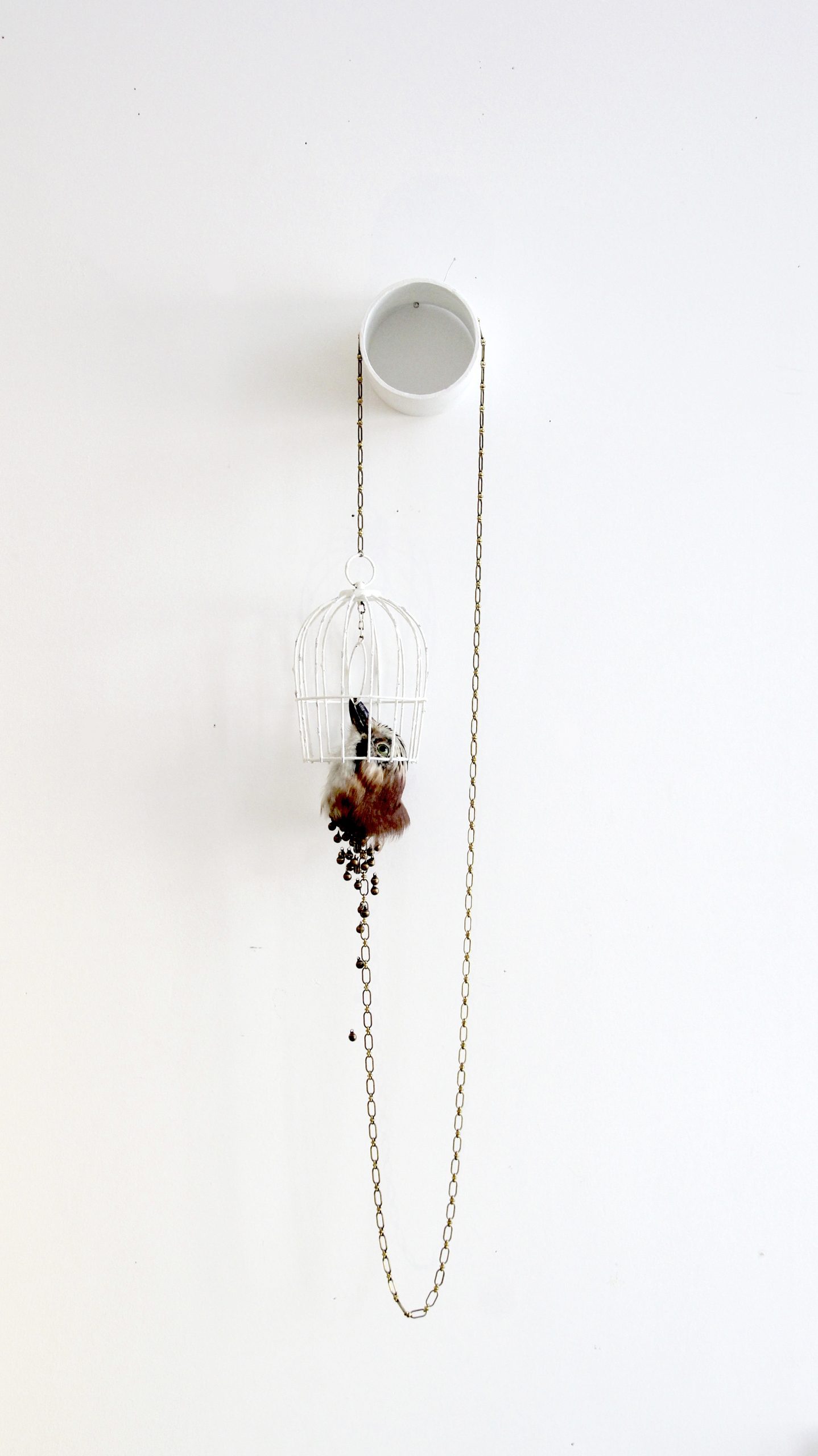
Swinging Humming, 2016
synthetic hair, synthetic flowers, wood, nylon thread
200 x 60 x 10 cm (overall)
Courtesy of the artist

Freedom no Freedom, 2016
stuffed bird (Eurasian jay), nylon thread, bells, chain, painted cage
85 x 20 x 10 cm (overall)
Courtesy of the artist
Barbara Hlali
Born in Dortmund. Lives and works in Dortmund, Germany.
Media reports show the wall around the Shiite district in Baghdad being painted with beautiful landscapes: aesthetic designs are used to cover military measures and the effects of war. In this film, Barbara Hlali applies a similar technique with regard to the overall situation by painting over this TV footage with a layer of gouache. The act of painting unmasks the painted-over situation, demonstrating how the war constantly comes to the fore below the surface of sugar-coating.
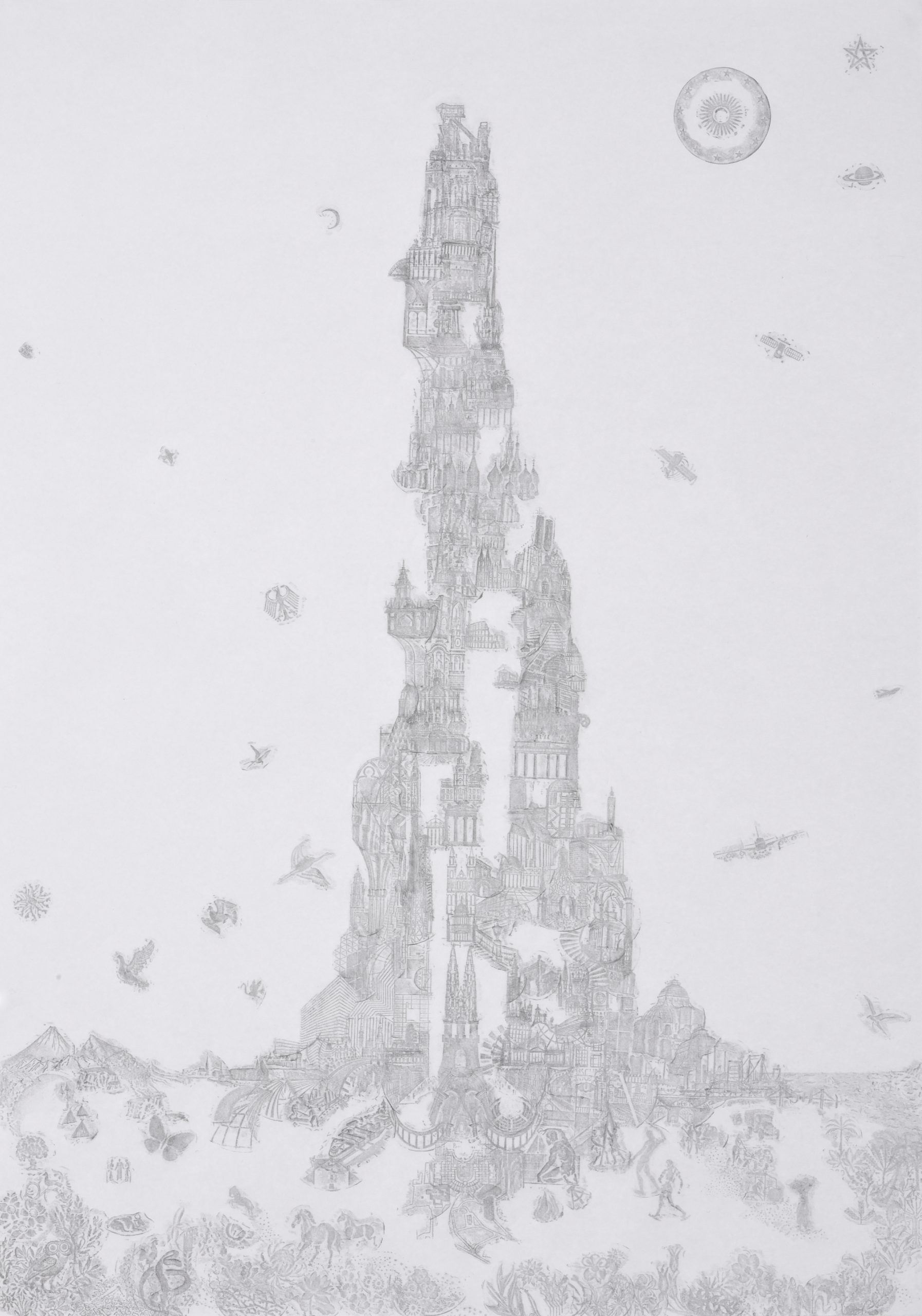
Tower of Babel, Coin Frottage no. 49, 2015
pencil on paper
42 x 29.7 cm
Courtesy of the artist
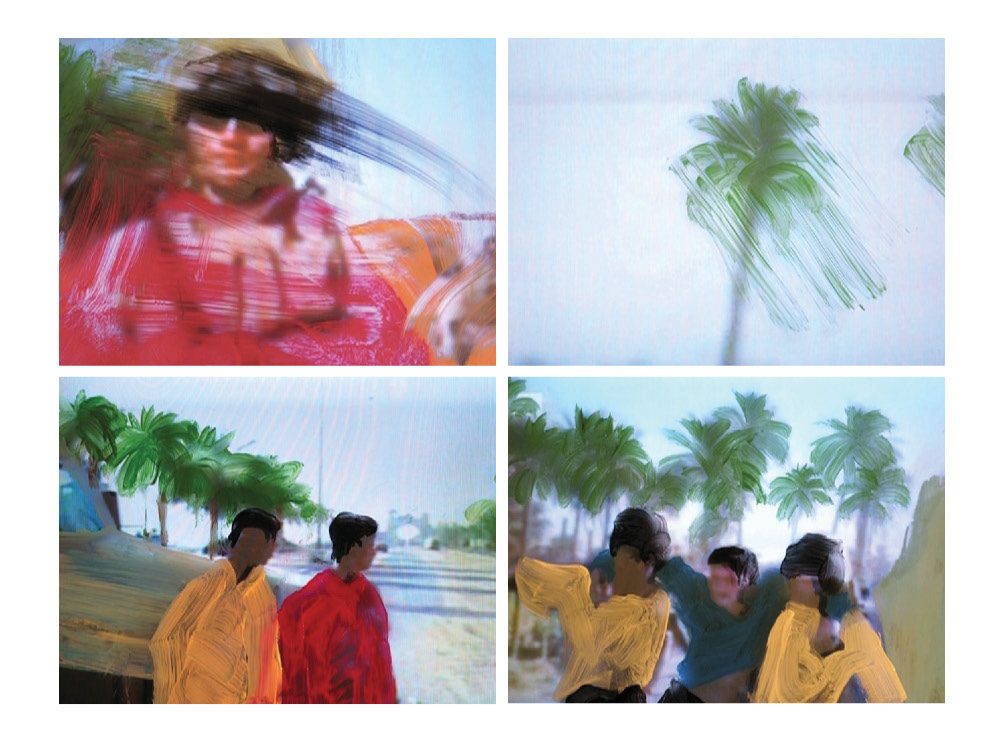
Painting Paradise, 2008
gouache on TV screen, digital video
5:30 min
Courtesy of the artist
Sarnath Banerjee
Born in Calcutta, India. Lives and works in Berlin, Germany.

Temporary Autonomous Zones, 2012
ink and brush on paper
16.5 x 28 cm each
Courtesy of Project 88 and the artist
Taysir Batniji
Born in Gaza, Palestine. Lives and works in Paris, France.
By naming his series of images Interface, Taysir Batniji plays on the meaning of a word commonly used in the disciplines of geography and computing. Interface is also a reference to the place itself, Bahrain, that translates literally to ’two seas.’ Thus, the photo series appears as a documentation of shapes that are often the contact of two distinct spaces within the landscape.
For Batniji, sand and water are recurring elements that become common vectors throughout his images for Interface. Together, land and sea symbolise the shore, the border and the threshold. The sand is a metaphor for the continuous state of metamorphosis that the landscape of Bahrain is experiencing. The artist perceives the country to be in a state of perpetual transformation, reclaiming land from the sea to expand its borders, where sand connotes a work-in-progress. Interface produces, as its computing meaning suggests, a system of illusions – nearly virtual – of these model-like architectures, of their volumes, in a country that vacillates between reality and fiction while it metamorphoses. (Alexandre Castant)

Interface, 2014
inkjet on paper
80 x 50 cm
Courtesy of the artist
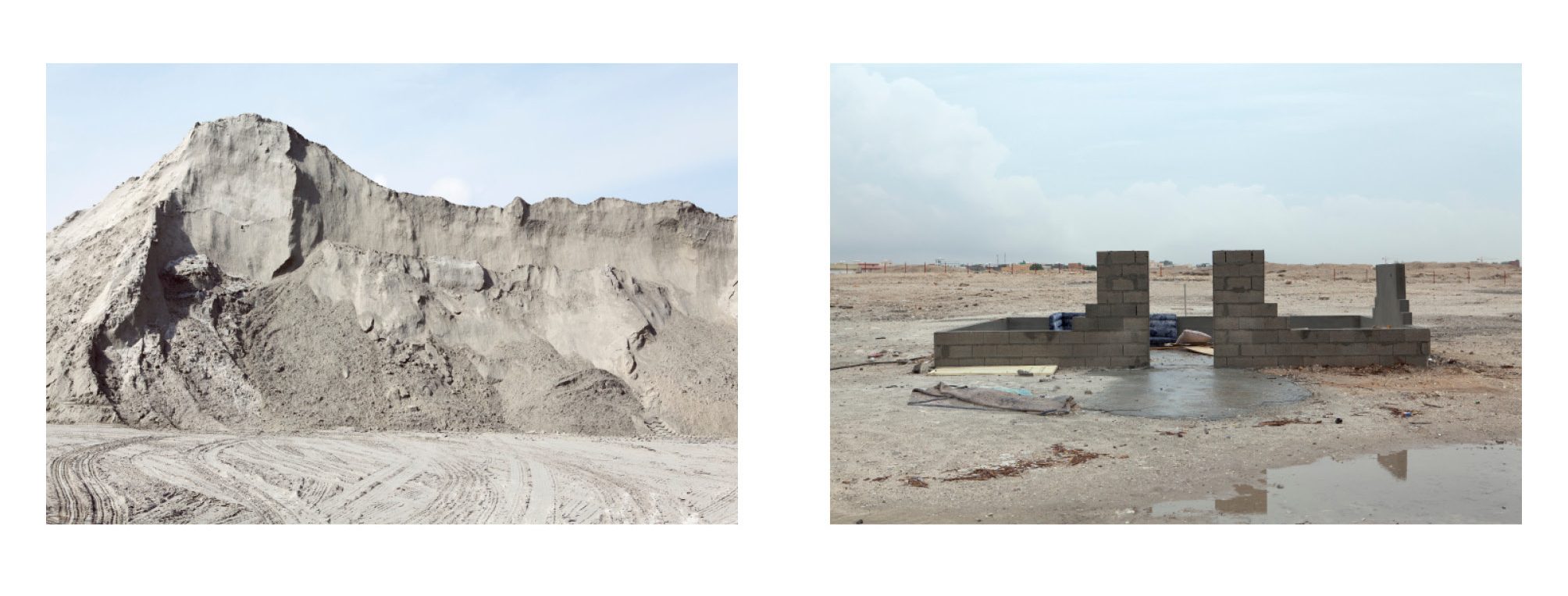
Interface, 2014
inkjet on paper
80 x 50 cm
Courtesy of the artist
Alexander Schellow
Born in Berlin, Germany. Lives and works in Cologne, Germany.
The construction of the Kifisias freeway begun in the 1970s and was finally completed for the Athens Olympics in 2004. The Kifissos river, which has historically served as the formative axis of the cities development, has since been nearly entirely covered over within the city perimeter. In a series of drawings and animations, NERO reconstructs the flow of the river through the perceptions and practices that preserve it as an urban reality and unpacks the river’s material and imaginary ‘presence’ in daily life along with related strategies of remembering, forgetting and actualising. The research along the Kifissos and in conversations with residents, city planners, politicians, ecologists and archaeologists intends to reveal the concrete effects had on the way people in Athens orient and position themselves, as well as the polemics, projections and social realities ignited by the ‘Kifissos issue.’
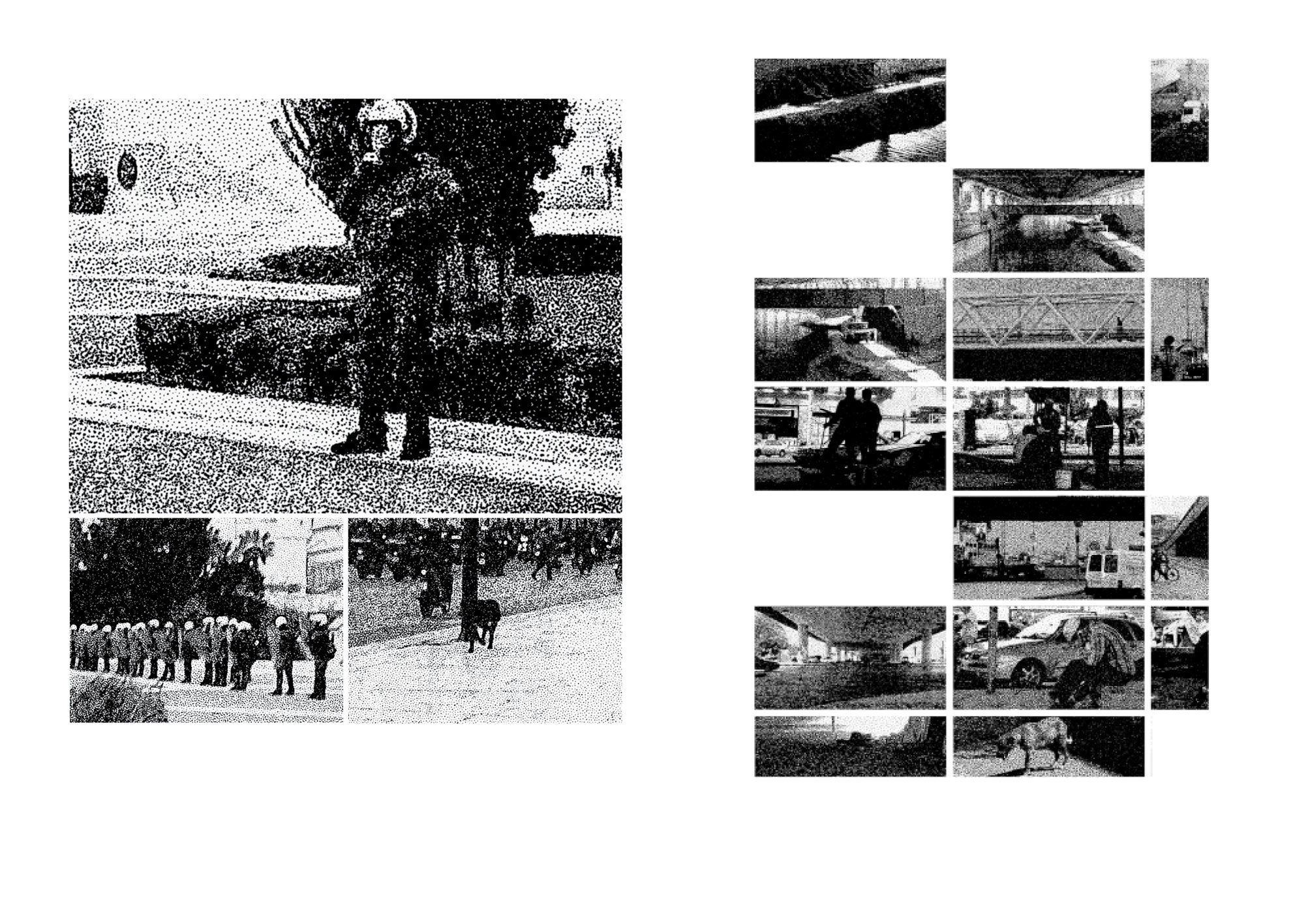
NERO, 2012-2016 (ongoing)
approximately 2000 drawings, partial reprints in books and animation loops, and ink on tracing paper
37 x 28 cm
Courtesy of the artist and MELD (Paris/Athens)
Debbie Ding
Born in Singapore. Lives and works in London, UK.
Rules for the Expression of Architectural Desires by Debbie Ding presents a selection of speculative rules, schemes, devices and instruments for the urban and social design of a city.
The time is neither future nor past. The place is neither East nor West. The design of our built environments begin with ideas, and these ideas are articulated in ways which may be conceptual, fuzzy, or imprecise. What we find is that the material of a city is immaterial at its very core. Our attempts to define rules for society precede every action, motion or change in our urban environment, and our urban experiences can be altered when we change the manner in which we define a city.
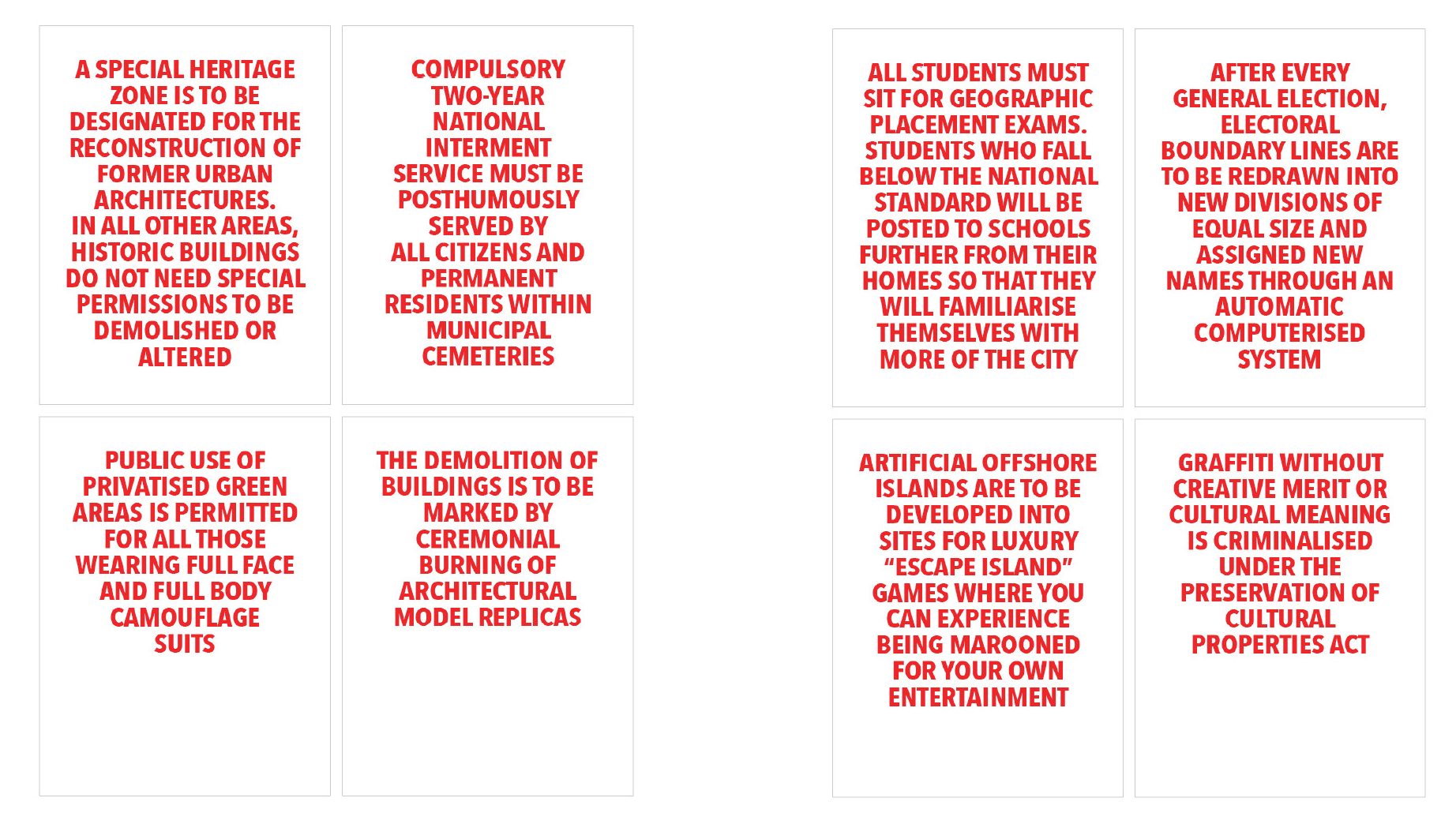
Rules for the Expression of Architectural Desires (excerpts), 2015
digital print on paper
42 x 29.7 cm
Courtesy of the artist
Godwin Koay
Born in Singapore. Lives and works in Singapore.
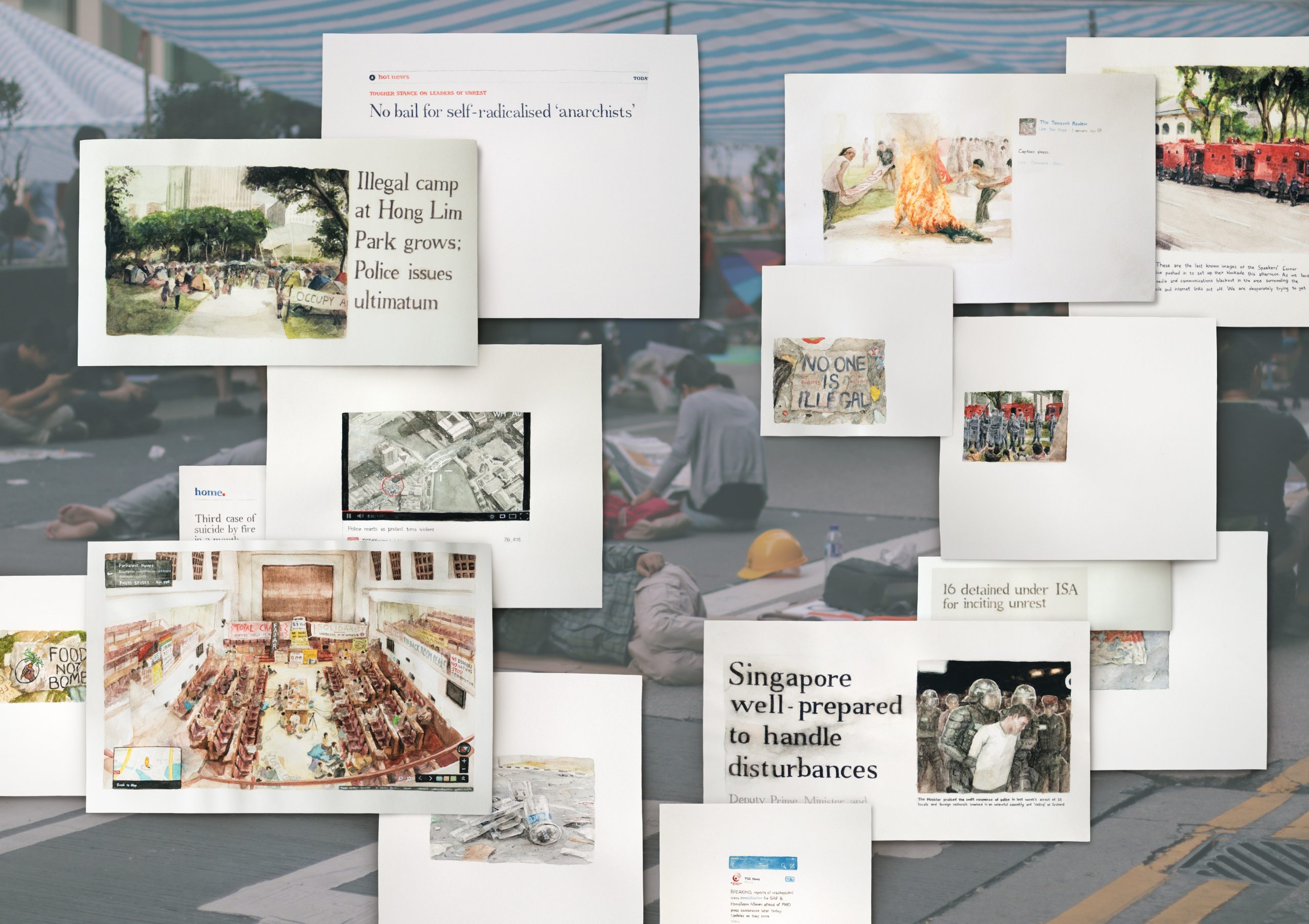
Excerpts from Notes from a Revolution, 2012–2016 (ongoing), in a digitised arrangement
watercolour and inkjet print on paper with photography
dimensions variable
Courtesy of the artist
Larissa Sansour
Born in Jerusalem, Israel. Lives and works in London, UK.
The Nation Estate project consists of a nine-minute sci-fi short film and a photo series offering a clinically dystopian, yet humorous approach to the deadlock in the Middle East.
With its glossy mixture of computer-generated imagery, live actors and an Arabesque electronica soundtrack, the Nation Estate film explores a vertical solution to Palestinian statehood. The Palestinian State comes in the form of a single skyscraper: the Nation Estate. This one colossal high-rise houses the entire Palestinian population – now finally living the high life.
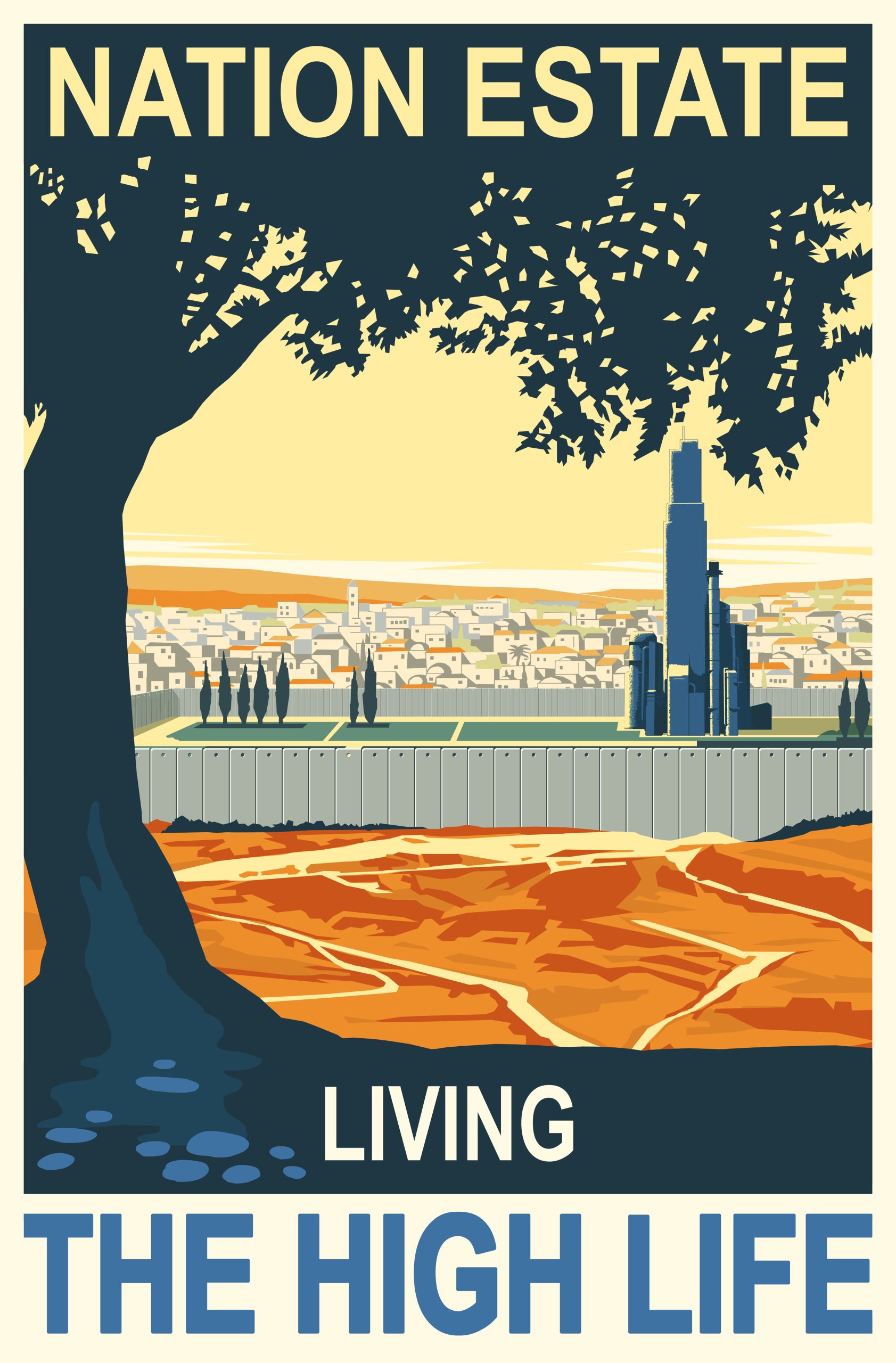
Nation Estate Poster, 2012
paper print
100 x 150 cm
Courtesy of Lawrie Shabibi Gallery/Sabrina Amrani Gallery and the artist

Nation Estate, 2012
high-definition digital video, cinemascope (1:2.35) , colour, sound
9:02 min
Courtesy of Lawrie Shabibi Gallery/Sabrina Amrani Gallery and the artist
Patricia Reinhart
Born in Vienna, Austria. Lives and works in Paris, France.
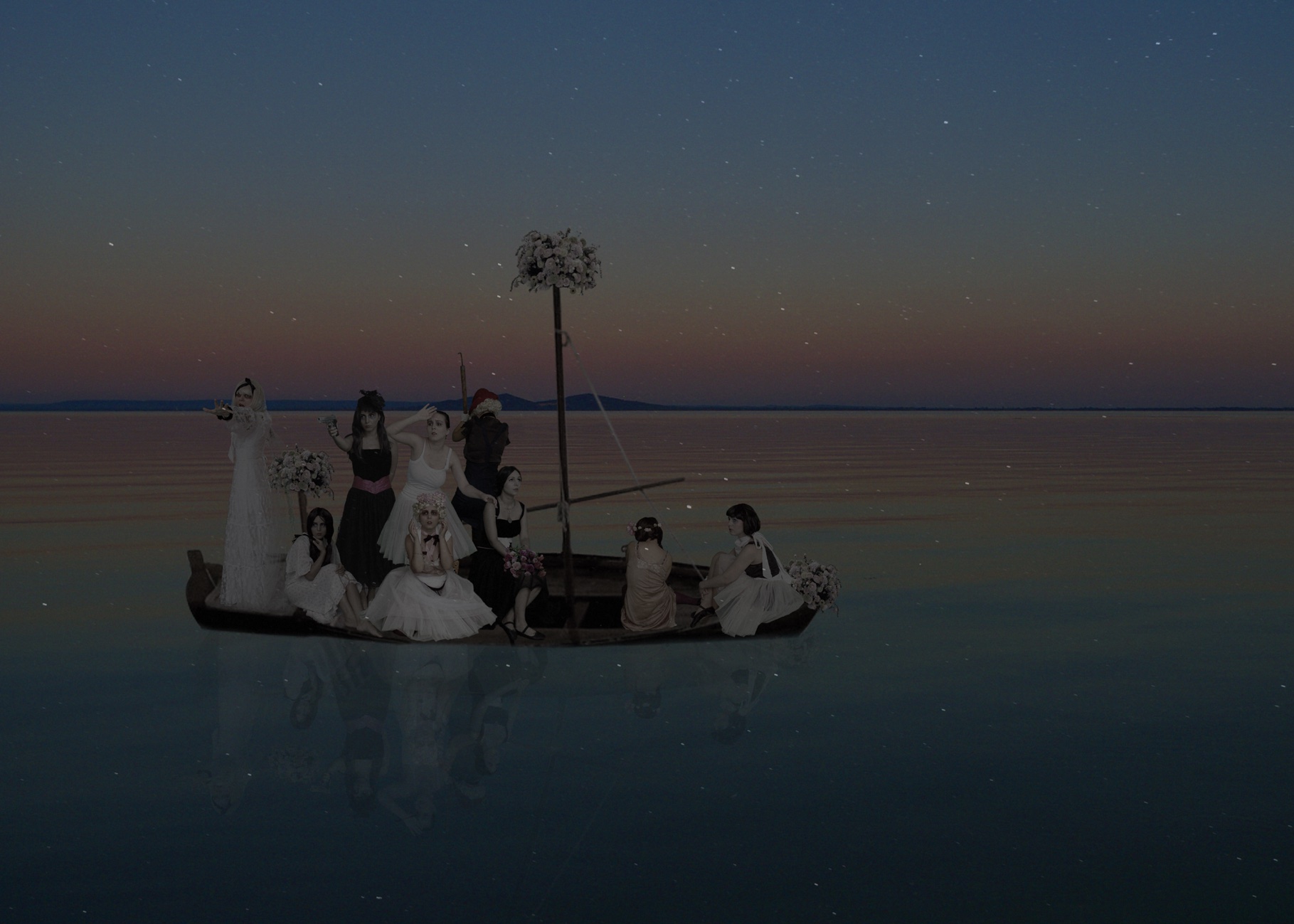
Die Hochzeitsgesellschaft, 2011
C-print
50 x 70 cm
Courtesy of the artist
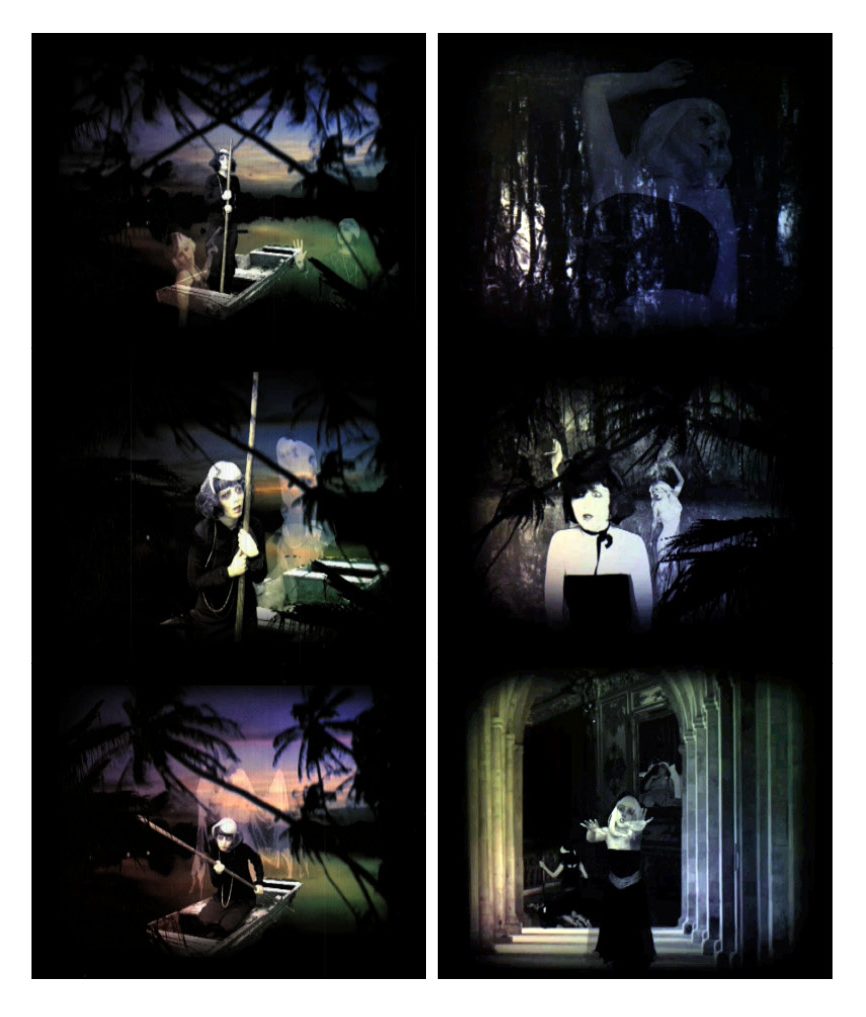
Kirkirerland, 2008
ciné collage, colour
1:05 min
Courtesy of the artist
Nocturne in Schwarz, 2008
ciné collage, colour, sound
3:22 min
Courtesy of the artist
Sookoon Ang
Born in Singapore. Lives and works in Paris, France and Singapore.
Exorcize Me is a photography, videography and live performance project addressing coming-of-age anxiety, teenage alienation and the confusing phase between childhood and adulthood. The title, Exorcize Me, speaks about the unease within one’s own skin and the yearning to get rid of new-fangled fears and unfamiliar emotions. The goth makeup, baby language, school setting and uniforms are juxtapositions of reality and fiction, interior world brought out to the exterior.
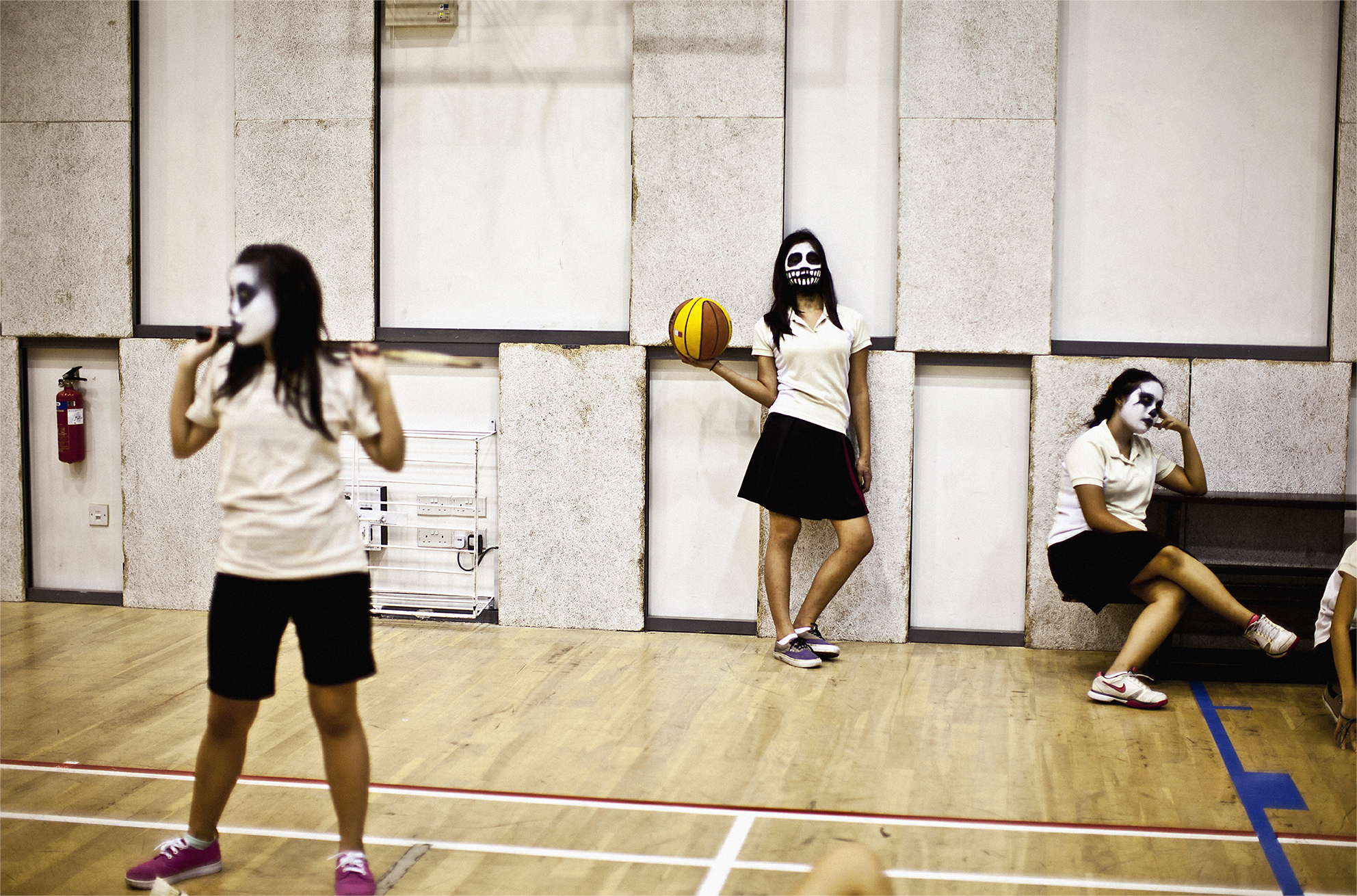
Exorcize Me III, 2013
ultra chrome ink on archival paper
120 x 80 cm
Courtesy of the artist

Exorcize Me IV, 2013
ultra chrome ink on archival paper
120 x 80 cm
Courtesy of the artist

Exorcize Me V, 2013
ultra chrome ink on archival paper
120 x 80 cm
Courtesy of the artist
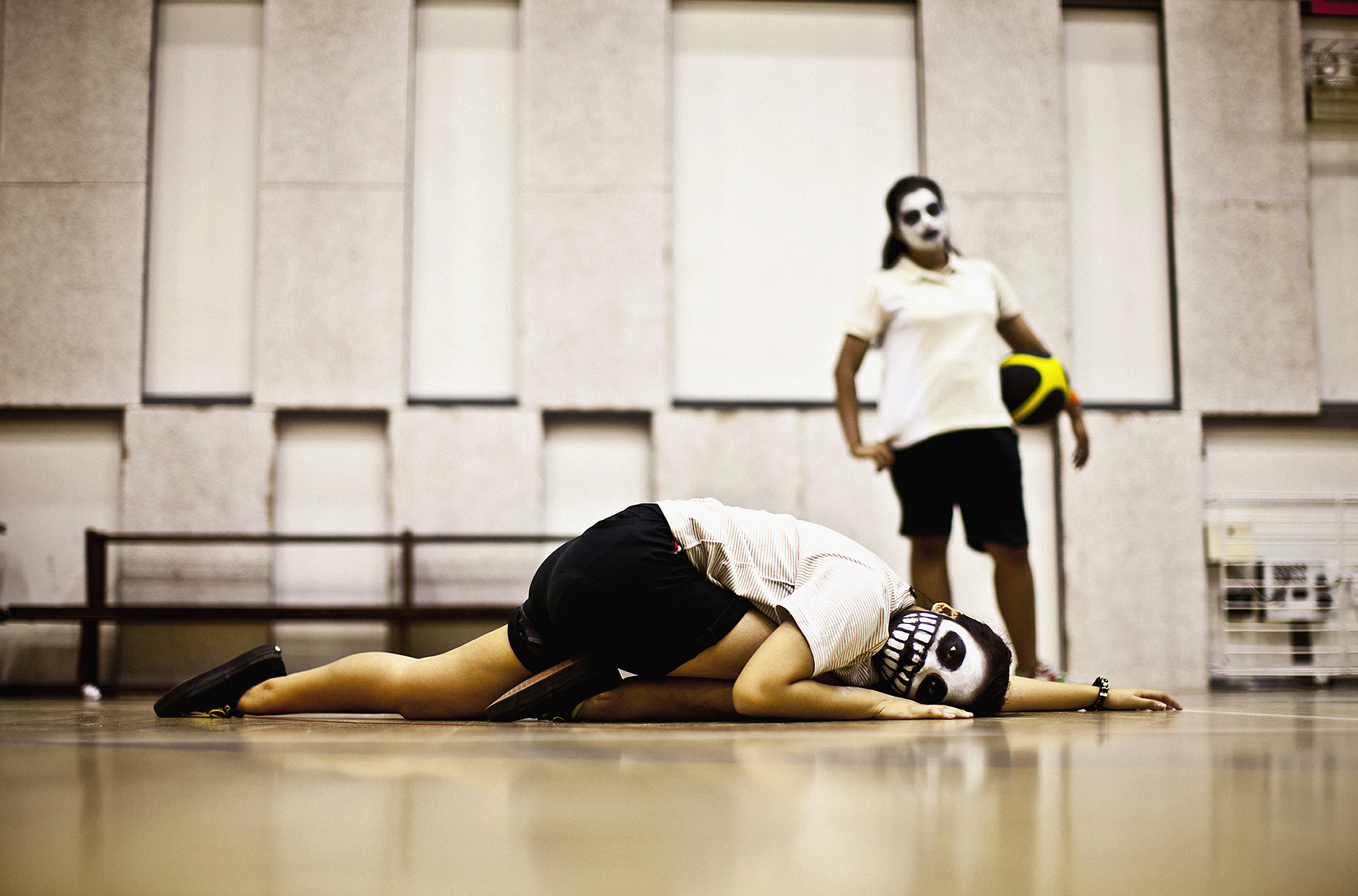
Exorcize Me VI, 2013
ultra chrome ink on archival paper
120 x 80 cm
Courtesy of the artist
References
Valéry, Paul, “The Outlook for Intelligence.” The Collected Works of Paul Valéry. Volume 10. History and Politics (Bollingen Series XLV 10). New York: Pantheon Books, 1962.
Merleau-Ponty, Maurice. Phenomenology of Perception. London: Routledge & Kegan Paul,1965.
Merleau-Ponty, Maurice. “Eye and Mind.” The Primacy of Perception: And Other Essays on Phenomenological Psychology, the Philosophy of Art, History and Politics (Studies in Phenomenology and Existential Philosophy). Evaston: Northwestern University Press, 1964.
Eco, Umberto. The Open Work. Cambridge, Massachusetts: Harvard University Press, 1989.
Footnotes
Tropical Lab is an international arts residency for student-artists from around the world. Organised by LASALLE College of the Arts Singapore, Tropical Lab is in its 10th year. Tropical Lab remains the key inspiration to ISSUE. Each year’s ISSUE shapes the theme for the residency.
Contributors’ Bios
Contributors’ Bios
Steve Dixon (b. England, UK) is President of LASALLE College of the Arts. His research focuses on the use of technologies in arts and performance, and he is Co-director of the Digital Performance Archive, and Co-founder and Advisory Editor of the International Journal of Performance Arts and Digital Media (Routledge). His 800-page book Digital Performance: A History of New Media in Theater, Dance, Performance Art and Installation (2007, MIT Press) has won two international awards. Steve is an interdisciplinary artist working across theatre, performance art, video, installation and new media. Recent works include collaborations with media artist Paul Sermon, an interactive Internet ‘soap opera’ staring Rik Mayall, a one-man multimedia theatre performance of T.S. Eliot’s The Waste Land, and a gallery exhibition, Strangers in the Day, with his wife Prue Dixon.
Tony Godfrey (b. England, UK) has been writing on contemporary art for over 35 years and to date has published more than 130 articles and 300 short pieces. His 1998 book, Conceptual Art was the first publication to see Conceptual Art as a global phenomenon. Eighteen years on it continues to be in print and has since been translated into six languages. From 1989 to 2008, Godfrey worked for the Sotheby’s institute, London where he was Director of the MA in Contemporary Art. He was also professor of Fine Art at the University of Plymouth before moving to Singapore in 2009. Since then he has worked as a writer and curator with artists from Southeast Asia and China. Godfrey’s books include New Image in Painting (1986); Drawing Today (1991); Conceptual Art (1998); and Painting Today (2009). He has recently co-authored the book Contemporary Photography in Asia, and is currently writing two books including one on Contemporary Indonesian painting.
Peter Hill (b. Scotland) is an Australian artist, writer, and independent curator. As an artist he creates Superfictions, artworks that exist in the gap between installation art and literary fiction. This methodology can be extended to link the visual arts with any human activity. As a writer, he has contributed to Times Higher Education (London); Artpress (Paris); ARTnews (New York) and The London Review of Books. He won the Latimer Award for Painting at the Royal Scottish Academy in 1983, and the Saltire Award at the National Library of Scotland, Edinburgh, for his book Stargazing: Memoirs of a Young Lighthouse Keeper.
PerMagnus Lindborg (b. Sweden) is a composer, sound artist and psychoacoustician, researching sound perception and design in multimodal environments, He has published in IRCAM-Delatour (2008), Applied Acoustics (2015, 2016), PLoS ONE (2015), eContact (2014), and numerous conference proceedings. Sonic artwork includes prizes from Stavanger Symphony Orchestra (2002) and Montreal Forum (1996); commissions from Centre Pompidou (2002) and Ultima Festival (2006); sound installations at WocMAT (Taiwan 2012), Onassis Cultural Centre (Athens 2014), Singapore’s National Design Centre (2015), ArtScience Museum (2015), Esplanade Recital Hall (2008, 2010, 2013), and National Gallery (Dec 2015). With collaborator Joyce Beetuan Koh, he designed On the String (2010) and The Canopy (2011, 2013); with Freq_Out collective, exhibited at Museum of Modern Art (Stockholm 2012), Stedelijk Museum (Amsterdam 2013), and Tonspur (Vienna 2016). Lindborg chaired Si15 Soundislands Festival (http://soundislands.com) and serves as board member of ICMC. When not working at the School of Art, Design and Media, Nanyang Technological University, PerMagnus enjoys walking in the rainforest or swimming along coral reefs. (http://permagnus.org)
Chus Martínez (b. Spain) has a background in philosophy and art history. Currently, Martínez is the Head of the Institute of Art of the FHNW Academy of Arts and Design in Basel, Switzerland. She has been the Chief Curator at El Museo Del Barrio, New York. She was dOCUMENTA (13) Head of Department, and Member of Core Agent Group. Previously she was Chief Curator at MACBA, Barcelona (2008-2011); Director of the Frankfurter Kunstverein (2005-2008); and Artistic Director of Sala Rekalde, Bilbao (2002-2005). For the 56th La Biennale di Venezia (2015), Martínez curated the National Pavilion of Catalonia, with a solo project of filmmaker Albert Serra, and for the 51st edition the Cyprus National Pavilion (2005). In 2014/15 she served as curatorial ‘alliance’ for the current edition of the Istanbul Biennial (2015); in 2008 served as a Curatorial Advisor for the Carnegie International and in 2010 for the 29th Bienal de São Paulo. Martínez lectures and writes regularly for numerous catalogue texts and critical essays, and is a regular contributor to Artforum among other international journals.
Bjørn Melhus (b. Germany) is an internationally renowned artist and a professor for visual arts (virtual realities) at the Kunsthochschule Kassel. His award-winning films, videos and installations have been exhibited worldwide as part of museum shows, festivals or art biennials. He is based in Berlin and Kassel.
Charles Merewether (b. Scotland) is Curator of Contemporary Art Gallery in Tbilisi, part of the National Museum of Art, Georgia. He is an art historian, author and curator who has worked in Asia, Australia, Europe and the Americas. He was Collections Curator at the Getty Center in Los Angeles (1994–2004); Senior Research Fellow at the Centre for Cross Cultural Research, Australian National University (2004 -2006); Artistic Director and Curator of the Biennale of Sydney (2006); Deputy Director, Cultural District for the Tourist Development and Investment Company, Abu Dhabi (2007-2008). In 2009, he was Visiting Fellow at ZKM Center for Art and Media, Karlsruhe, Germany. Merewether served as Director, Institute of Contemporary Arts, Singapore (2010-2013); Visiting Professor, Nanyang Technology University, Singapore (2014); and Visiting Research Fellow at the NTU Centre for Contemporary Art. Merewether is currently a Visiting Professor at the Baptist University in Hong Kong. He is the author of many articles about contemporary art and his recent books include After Memory: The Art of Milenko Prvački, 40 Years; a co-edited volume of essays After the Event, by Manchester University Press (2010); Under Construction: Ai Weiwei (2008); and editor of both Art, Anti-Art, Non-Art: Experimentations in the Public Sphere in Postwar Japan 1950-1970 (2007); and The Archive (2006).
Rubén de la Nuez (b. Cuba) is an art theorist, art critic and academic specialising in contemporary art and new media. He is currently a Lecturer at the School of Art, Design and Media, Nanyang Technological University, Singapore. He holds an MA in Art History from the School of Arts and Letters, University of Havana. He was a UNESCO Research Fellow at the Theory Department, Jan van Eyck Academy, Maastricht, the Netherlands. He has taught in graduate and post-graduate programmes in a number of academic institutions, including the School of Arts and Letters, University of Havana; the Sichuan International Studies University, Chongqing, China; the Dutch Art Institute, University of Twenthe, Enschede, the Netherlands; and the Sotheby’s Institute of Art, Singapore. Nuez has researched, published and lectured on a broad range of issues related to history and theory of art and new media. He is particularly interested in matters concerning translation and contamination across cultural and artistic paradigms, including post-colonial studies, art in diaspora, trans-cultural curating, international art blockbuster exhibitions, and the restoration of Modern aesthetics within New Media.
Isabel de Sena (b. 1982) is an independent curator and writer currently based in Berlin. She obtained an MA in Art History (Hons.) from Leiden University in the Netherlands, specialising in Modern and Contemporary Art and Philosophical Aesthetics. She is a publishing author and editor for several academic journals and exhibition catalogues. Her curatorial work includes exhibitions in Germany and the Netherlands.
Jovana Stokic (b. Belgrade) is a New York-based art historian and curator. She holds a PhD from the Institute of Fine Arts, New York University. Her dissertation, The Body Beautiful: Feminine Self-Representations 1970–2007, analyses works of several women artists – Marina Abramović, Martha Rosler, Joan Jonas – since the 1970s, particularly focusing on the notions of self-representation and beauty. Stokic has curated several thematic exhibitions and performance events in the United States, Italy, Spain, and Serbia. Her essay, The Art of Marina Abramovic: Leaving the Balkans, Entering the Other Side, appeared in the catalogue for The Artist Is Present (2010) at the Museum of Modern Art, New York. Stokic was a fellow at the New Museum of Contemporary Art, New York; a researcher at the Whitney Museum of American Art, New York; the curator of the Kimmel Center Galleries, New York University; and the performance curator at Location One, New York. She has taught art history at New York University, Fashion Institute of Technology, and is also on the faculty of the MFA Art Practice at the School of Visual Arts.
Silke Schmickl (b. Germany) is a curator at the Institute of Contemporary Arts Singapore, LASALLE College of the arts, and the co-founder of the curatorial platform Lowave. She studied Art History, French Literature and International Communications in Munich and Paris where she graduated from Panthéon-Sorbonne University. A specialist in contemporary photography and video art, she has been a researcher at the German Art History Centre for 15 years and has published over 60 art DVDs for Lowave. She has initiated and directed various research projects dedicated to emerging art scenes including the Middle East, Africa, India, Turkey and Singapore. Since 2008, she has curated contemporary art exhibitions in partnerships with museums and biennials in Singapore, Paris, Guangzhou, Beirut and Düsseldorf. Parallel to her curatorial activities, Schmickl occasionally teaches in universities and art schools and writes articles on cinema and contemporary art.
Milenko Prvački (b.1951, (former) Yugoslavia) graduated with a Master of Fine Arts (Painting) from the Institutul de Arte Plastice “Nicolae Grigorescu” in Bucharest, Romania. He is one of the Singapore’s foremost artist and art educators, having taught at LASALLE College of the Arts since 1994. The founder of Tropical Lab, an annual international art camp for graduate students, Prvački was Dean of the Faculty of Fine Arts for 10 years, and is currently Senior Fellow, Office of the President at the College. He has exhibited extensively in Europe since 1971, and in Singapore and the region since 1993 and had participated in major exhibitions, most notably the Biennale of Sydney in 2006. He has also participated in numerous symposiums and art workshops worldwide, and acted as visiting professor at Musashino Art University in Japan; Sabanci University in Turkey; and University of Washington School of Art, USA. He is Adjunct Professor at RMIT University, Melbourne, Australia. He was awarded the Chevalier de l’Ordre des Arts et des Lettres by the French government in 2011, and Singapore’s Cultural Medallion for Visual Arts in 2012.
Venka Purushothaman (b. Singapore) is an art writer, academic, and arts and cultural manager. He is currently Vice-President (Academic) and Provost at LASALLE College of the Arts, Singapore. He has researched and written extensively on visual arts, performing arts and arts management with an interest in contemporary art. He has written essays on numerous artists including Pierre & Gilles (France), Nathalie Junod Ponsard (France), Parvati Nayar (India), Salleh Japar (Singapore). His artist monographs include: The Art of Sukumar Bose: Reflections on South and Southeast Asia (2013); Dance Me through the Dark: The Photography of Tan Ngiap Heng (2008); and Salleh Japar: Gurindam dan Igauan (2004). His books on arts and culture include Making Visible the Invisible: Three Decades of the Singapore Arts Festival (2007) and Narratives: Notes on a Cultural Journey, Cultural Medallion Recipients, 1979-2002 (2002).
Susie Wong (b. Singapore) is an art writer, curator and artist. She contributes to several publications in Singapore: she was a regular art reviewer in the 1990s for The Straits Times, Life! Singapore; and a regular art feature writer for magazines such as The Arts Magazine (publ. The Esplanade); ID; and d+a in architecture and design, and has also contributed to various artists’ monographs. She has written for publications such as Southeast Asia Today (publ. Roeder, 1995), Liu Kang: Colourful Modernist (publ. The National Art Gallery Singapore, 2011); Histories, Practices, Interventions: A reader in Singapore Contemporary Art (publ Institute of Contemporary Arts Singapore, 2016). She is a member of AICA (International Association of Art Critics - Singapore Chapter). She has published two special edition art books: Trace (2008) and Tracing Land (2014). In 2014, she also edited and published [The Machine] Contemplating the Body after a group exhibition she curated at Singapore General Hospital (SGH) Museum.
